One of the places to visit that has been on our bucket list for a long time is Lesotho, a small independent country surrounded by South Africa. Not only did we want to take on the renowned Sani Pass, part of the Drakensberg Unesco World Heritage Site, , but also to do pony trekking in a country where pony trekking is really part and parcel of daily life. And with a long weekend somewhere in 2018, we jumped in the car and went.
(Even without labels you can see the shape of Lesotho clearly defined on Google Maps)
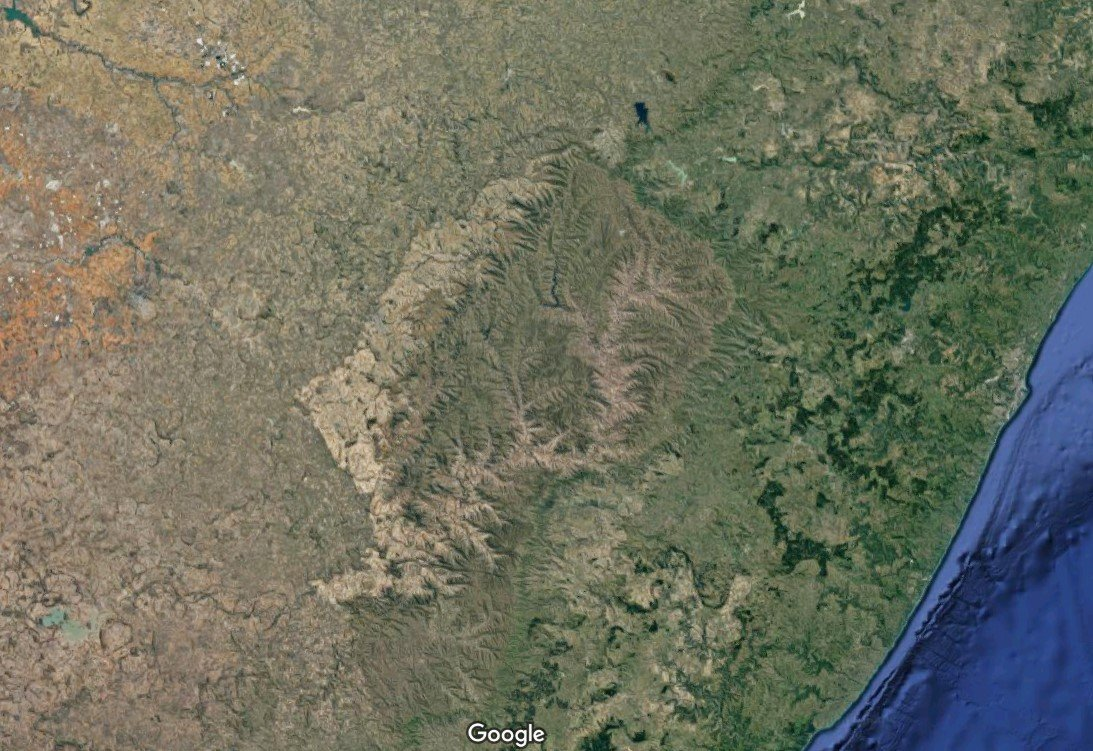
Distances are fairly big in South Africa so to cover all that distance without stopping for sightseeing is kinda defeating the purpose of a road trip. So our itinerary looked a bit like this:
- Golden Gate National Park with a hop into Qwaqwa and later a beer stop in Clarence
- Royal Natal National Park with the Tugela Falls, the highest water falls in South Africa and second highest in the world with a height of almost 950m.
- Sani Pass and border crossing into Lesotho
- Maluti Mountains
- Pony trekking in Ribaneng
We left Johannesburg somewhere in the afternoon on Friday, arrived at Golden Gate Highlands National Park when it was already dark and could only just grab something to eat and drink in the hotel pub.
Golden Gate Highlands National Park and QwaQwa
As it had been about 30 years since last we had been there, we started the following day with a leisurely drive around the Golden Gate Highlands National Park with its craggy mountains and grassy plains. We saw the buck hiding in the tall grasses on the mountain slopes and a lonely wildebeest getting lost in the landscape.
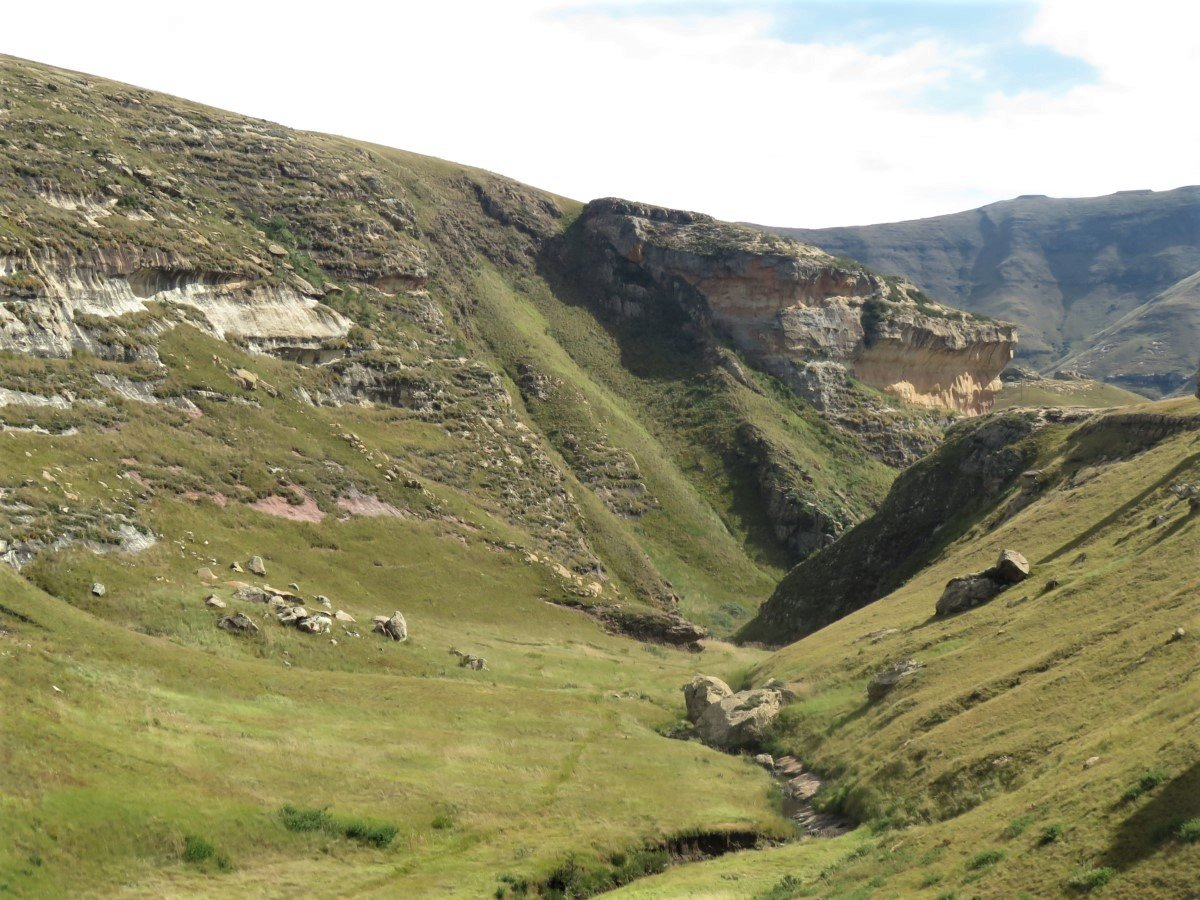
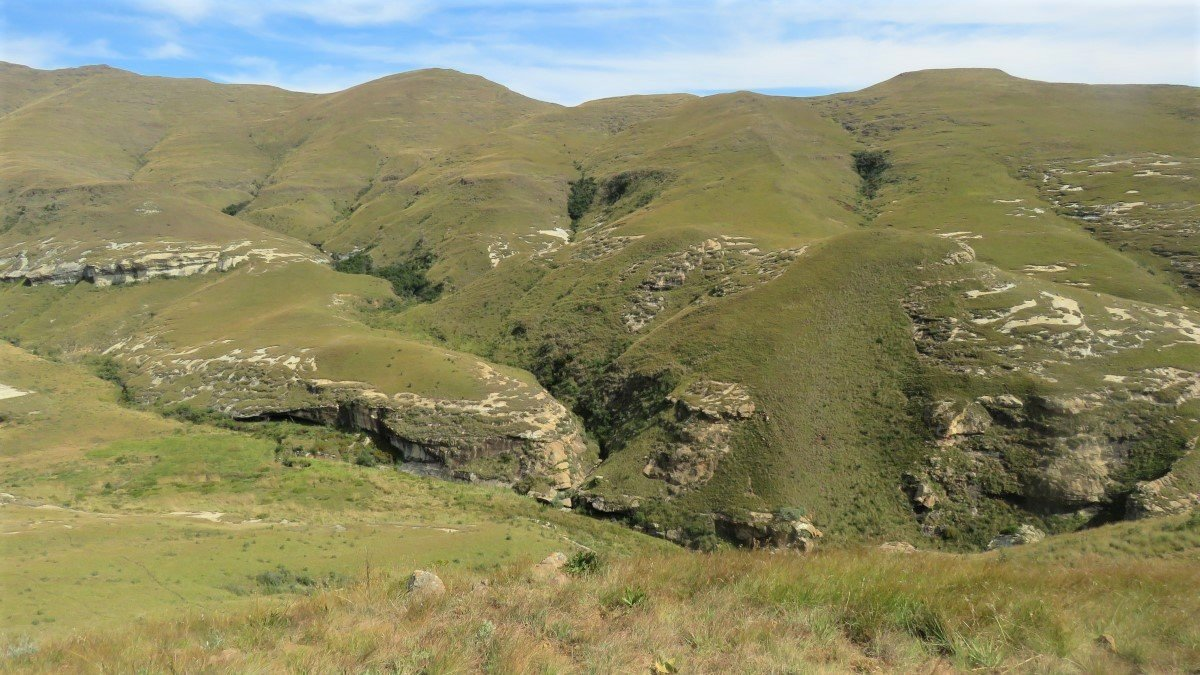
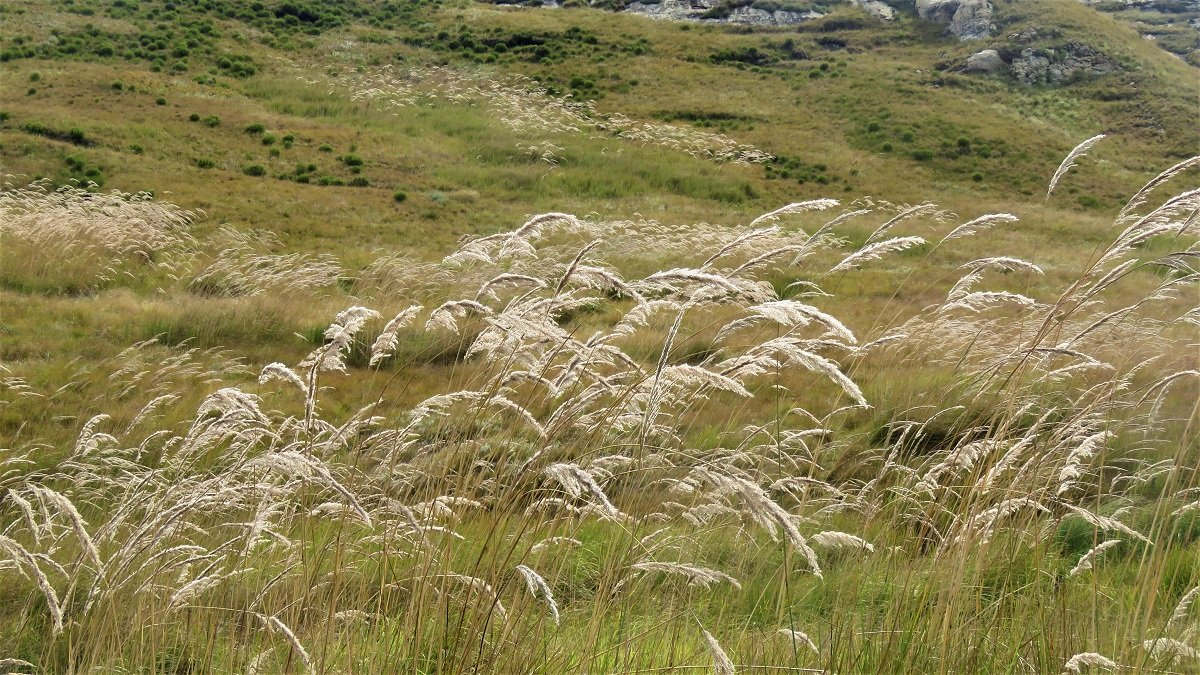
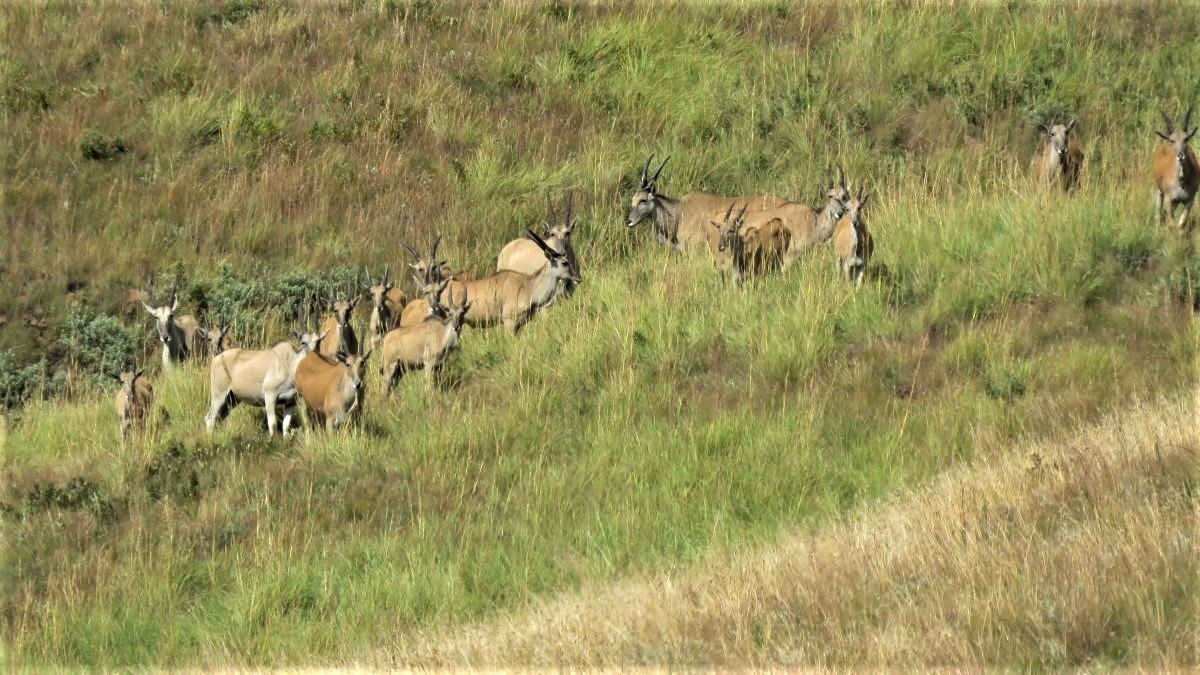
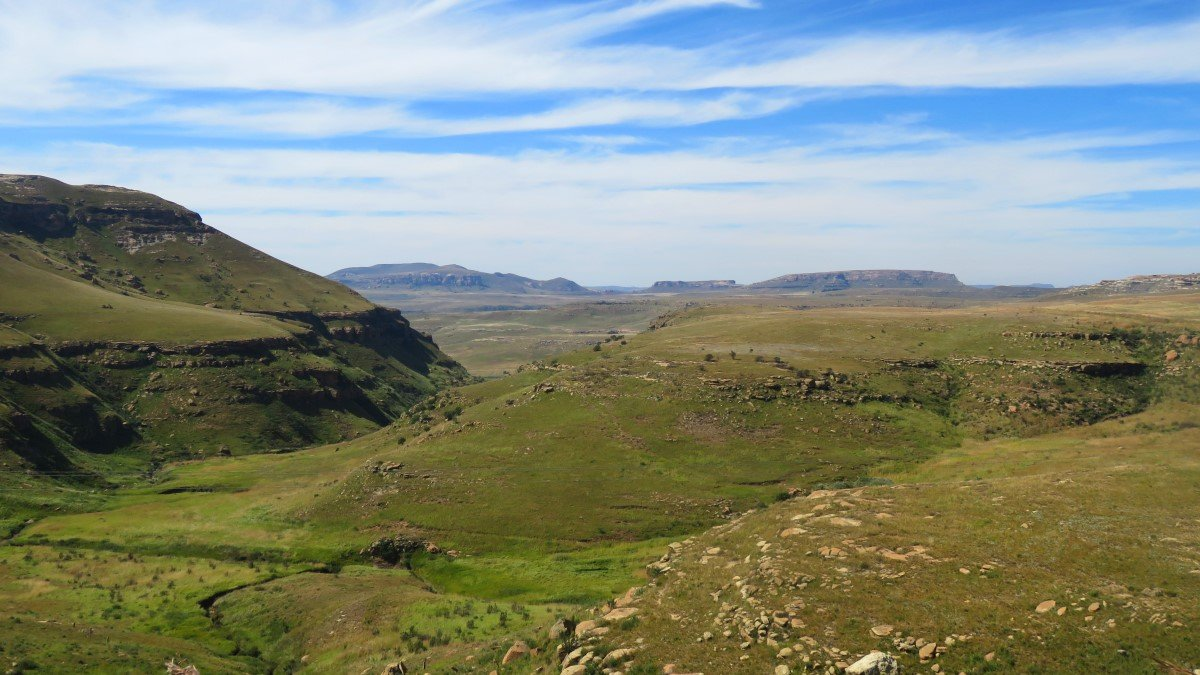
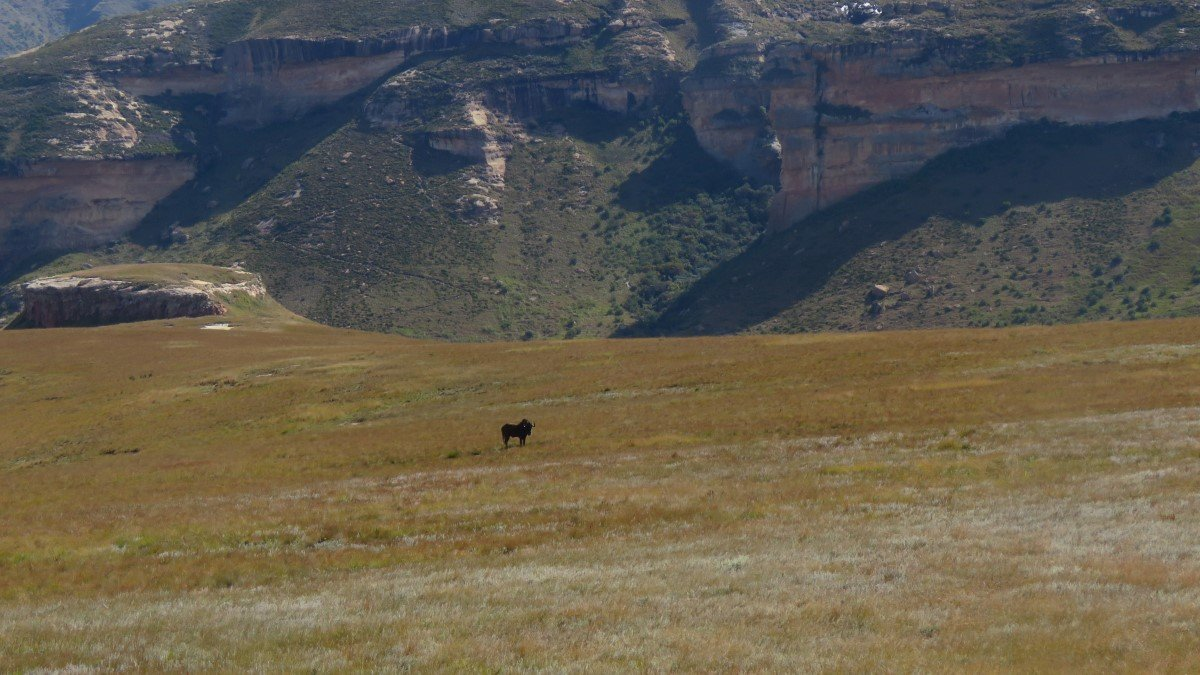
A little dazzle of zebra was staring us down as if to say “whaddaya looking at?” We stopped at a lookout trying to spy vultures, but to no avail. A few birdwatchers in the bird hide were focusing on a rock formation on the far side of the valley with telephoto lenses of about a meter long. Of course … our eyes couldn’t see the same details.
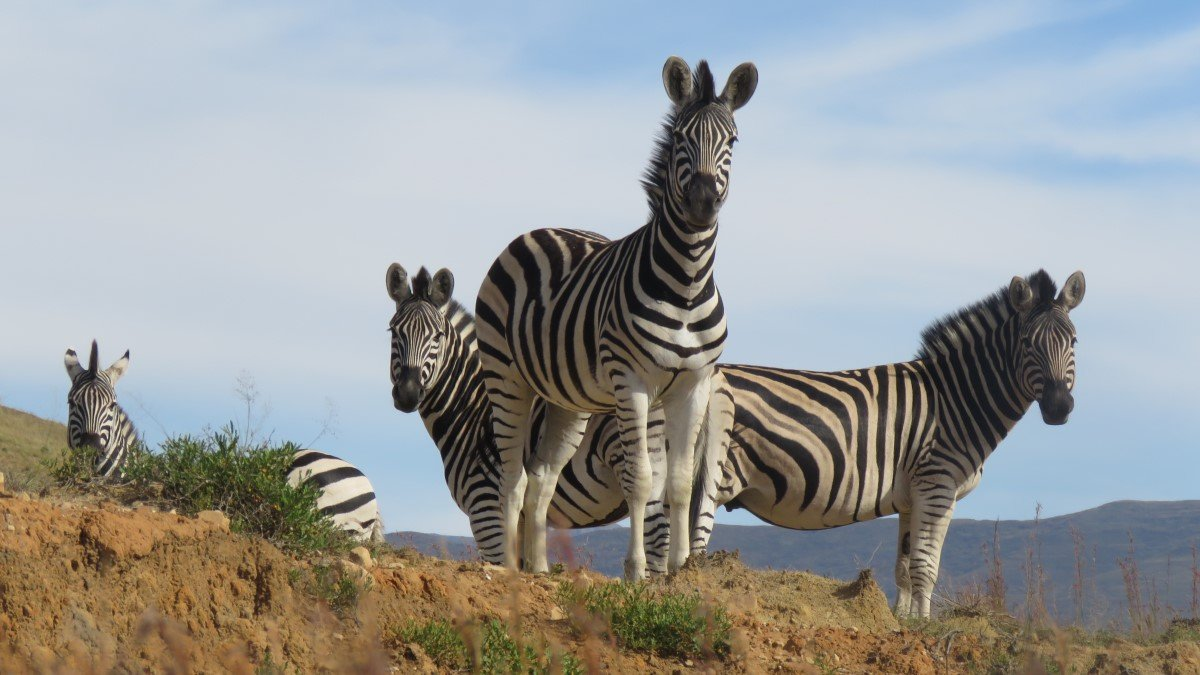
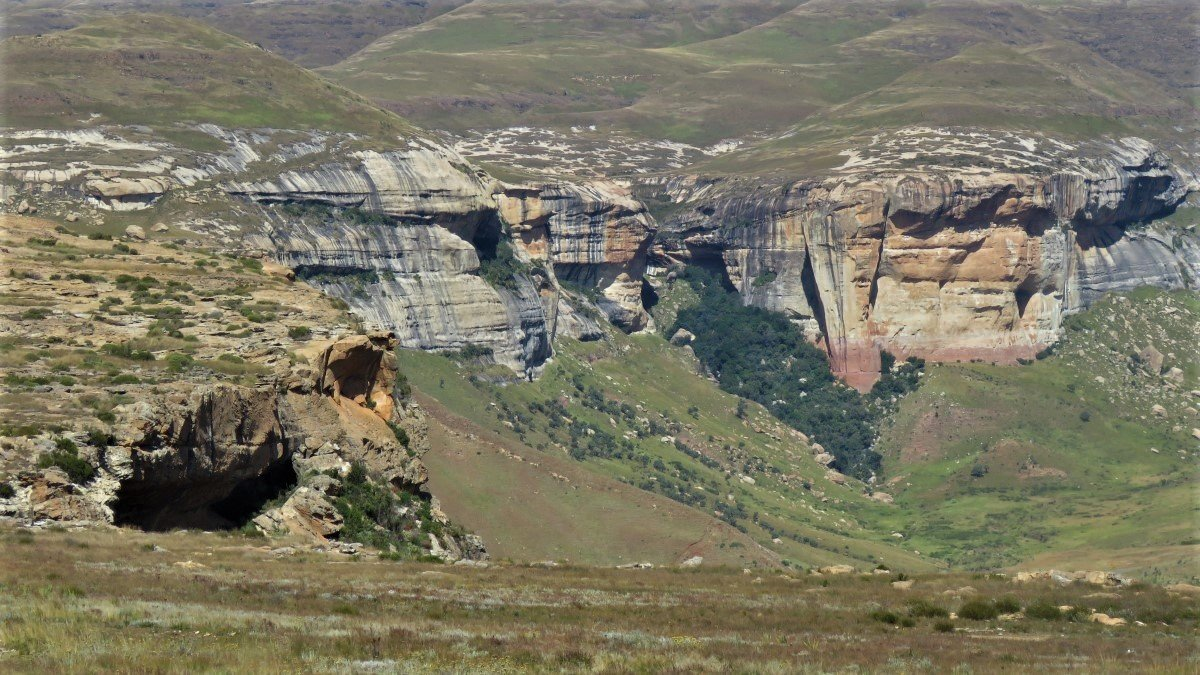
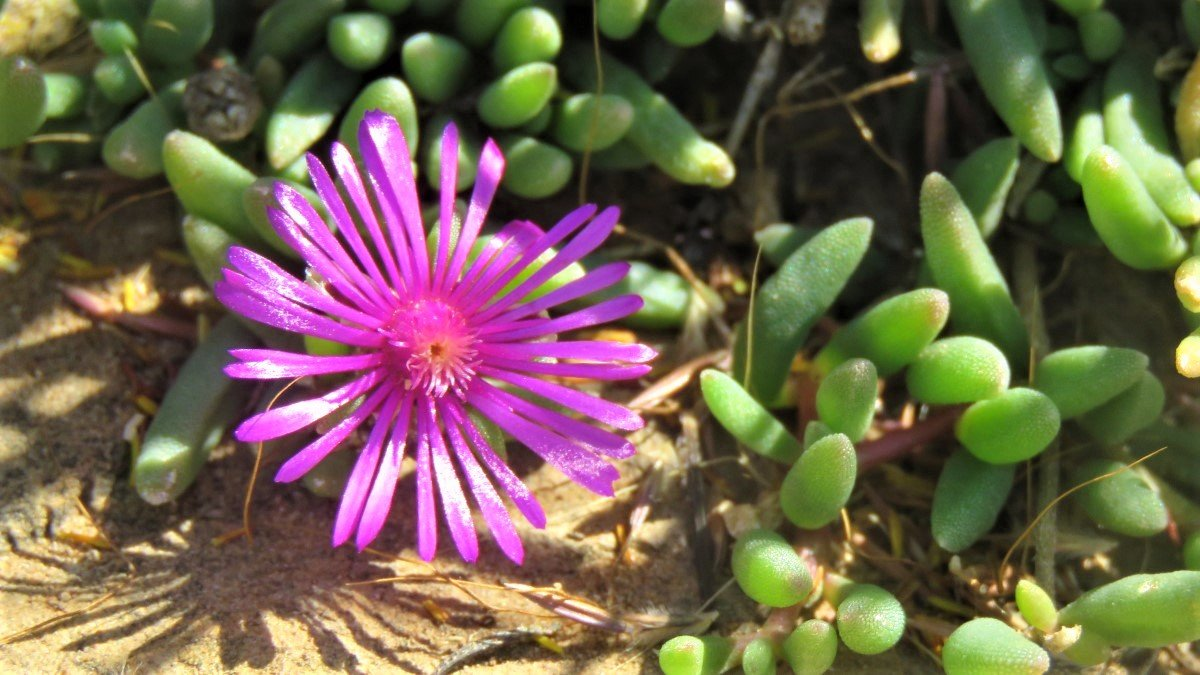
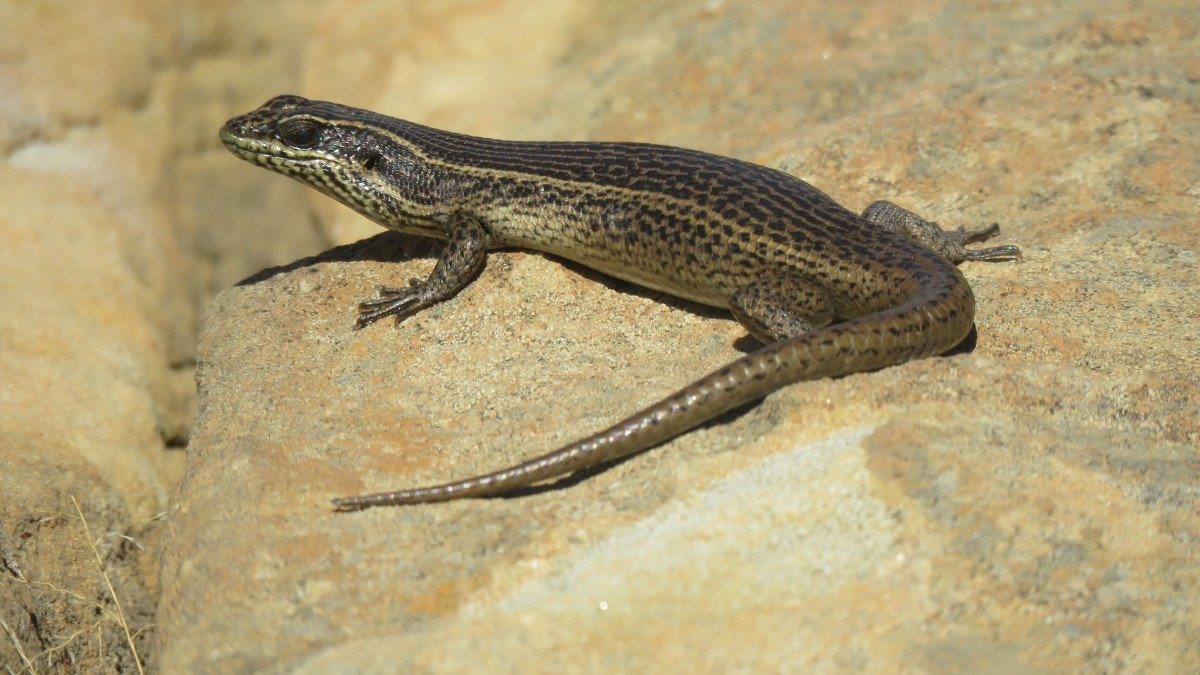
Around midday, we exited the park on the east side and proceeded to the Royal Natal National Park trying to find the Tugela waterfalls. We planned a shortcut through QwaQwa and at the turnoff from the main road, we saw a group of Basotho horsemen and couldn’t pass up the opportunity for an impromptu photo-op in their traditional dress.
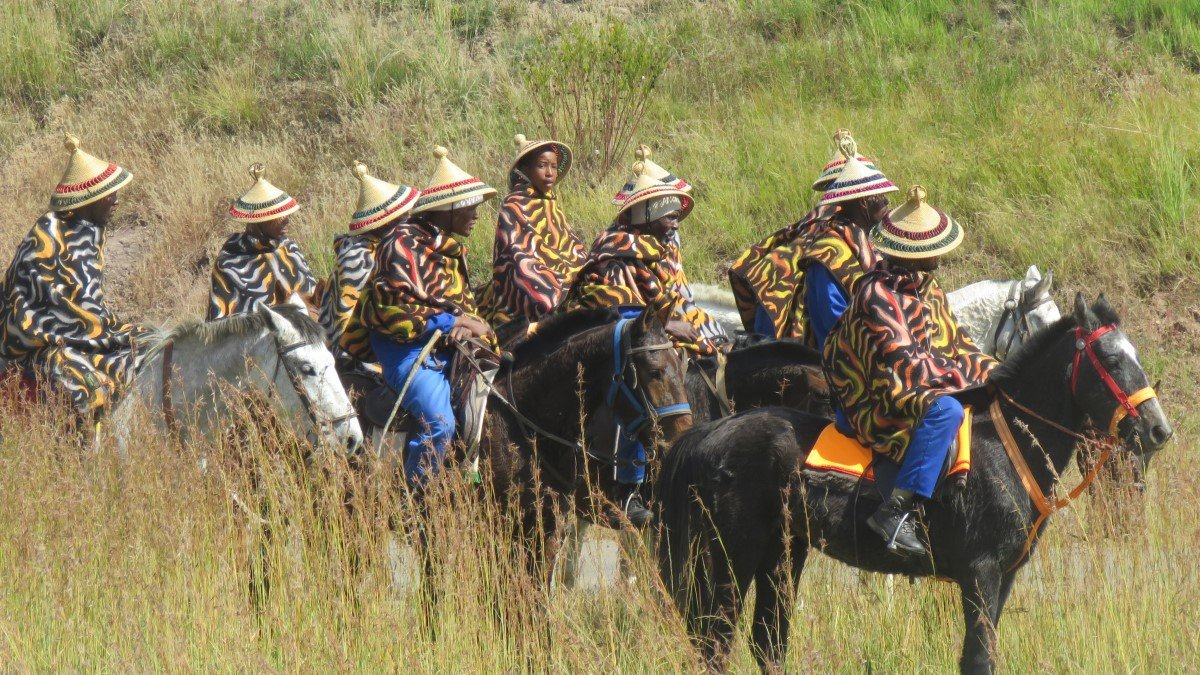
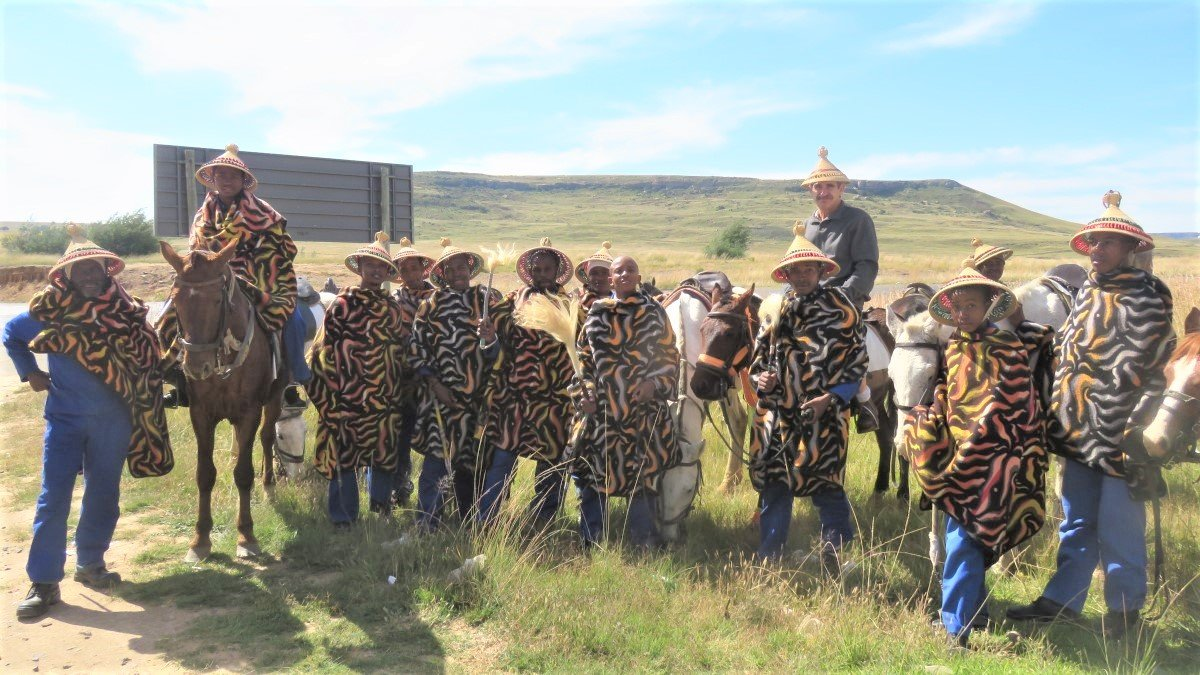
We continued through QwaQwa towards what we thought to be one of the entrances into the Royal Natal National Park. Unfortunately it seemed to be an entrance to a private lodge and we were not allowed to pass. The ranger also told us that we were already quite late in the day to start a walk to the falls so we turned back, making a mental note for our time management the following day. On our way back through QwaQwa we saw another sight typical of African communities: a church group, in full regalia, walking into their church/community hall to the sound of a brass band. If there is one thing that’s undeniably in the African blood: the effortless and natural feel of rhythm and music.
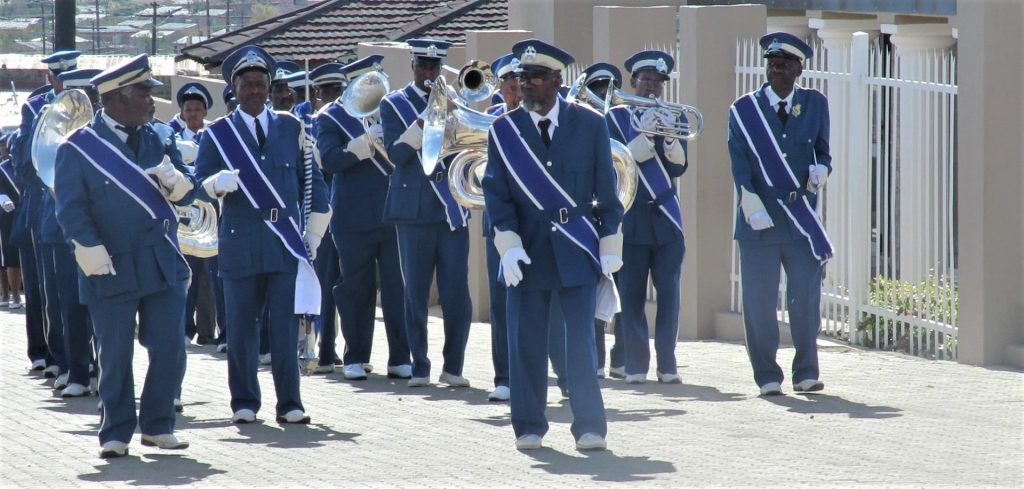
Royal Natal National Park and Tugela Falls
Next morning we left for the park, but had to take the long route via the Sterkfontein Dam, which is part of the Tugela-Vaal water transfer and Drakensberg Hydro Systems that supplies water to the greater Gauteng province. Unfortunately we didn’t really have the time to ride around and enjoy the reserve at leisure, but we took a little tea break with views over the expanse of the dam.
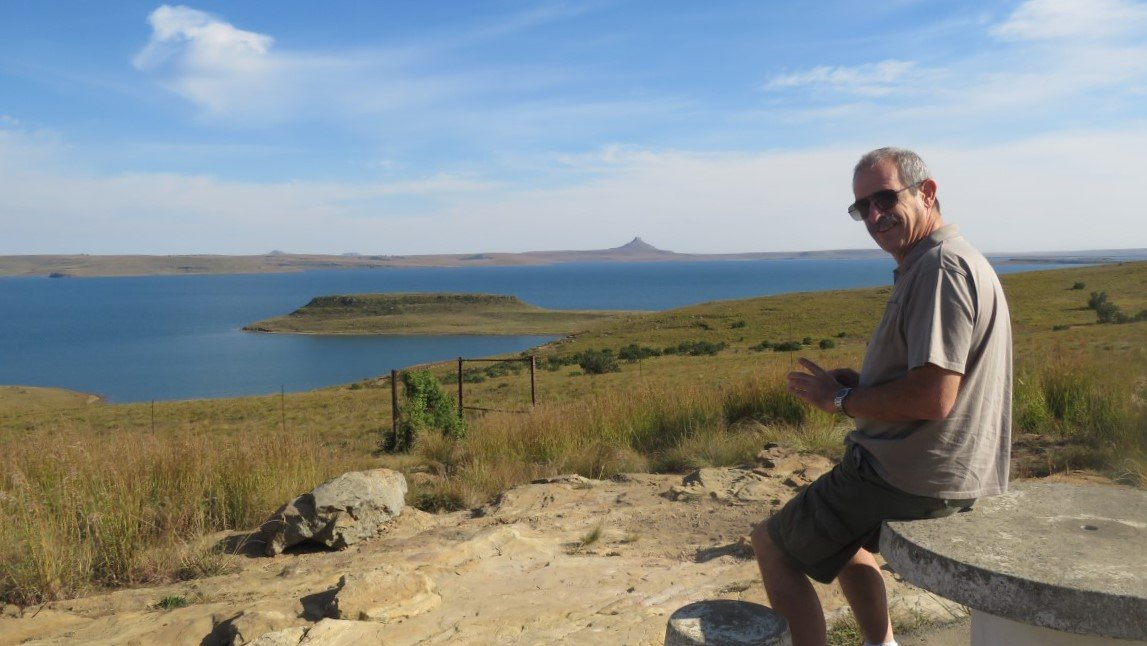
We eventually arrived at the park entrance around 10-ish and set out on the trail: up and up and up! Indicated as a 2,5 to 3 hours walk to the falls we thought we were making good time.
As per schedule- more or less- we arrived in the gorge, where all other walkers seemed to congregate on the dry, boulder strewn riverbed. But, listening to conversations of fellow walkers, we figured out soon enough that the actual falls were still a bit further. That “bit further” eventually seemed a bit more than just “a bit”. From the gorge there is a rickety steel ladder bolted in the rock face for which there was a queue, because the way up is the same as the way down. The way up was fairly ok and, once up, we walked a while further up the trail. from above we could see some of the more daring folk braving the ice cold water that trickled down the hollowed out riverbed between the eroded rock walls. But when returning hikers told us it could be another 30 to 60 minutes to the fall itself and the fall had only a minimal trickle of water, we decided to turn back. By then it was past 2pm and we knew that in the meantime, our hike back would most probably take us more than 3 hours.
The descend via the little gully with iron-bar-steps in the rock followed by the rickety ladder down the rock face were not my favourite moments but luckily Stefaan did the gentleman thing and went down first so he could break my fall! Once down the ladder and back into the gorge, we put some spring in our step and marched down the mountain.
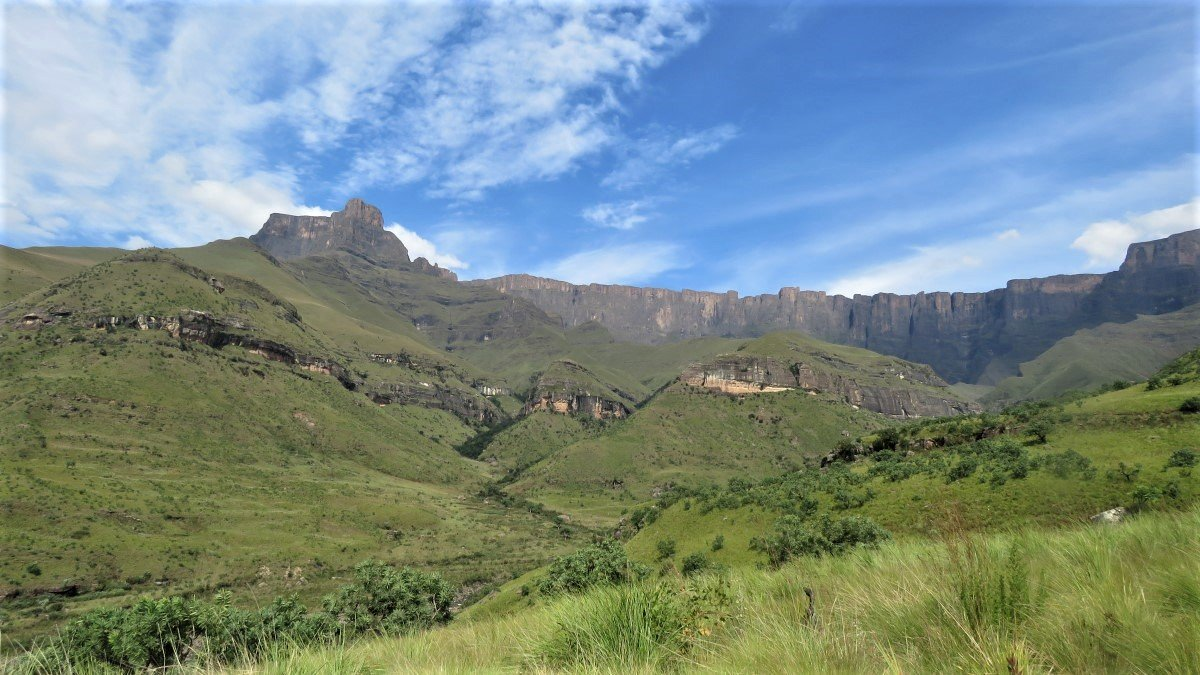
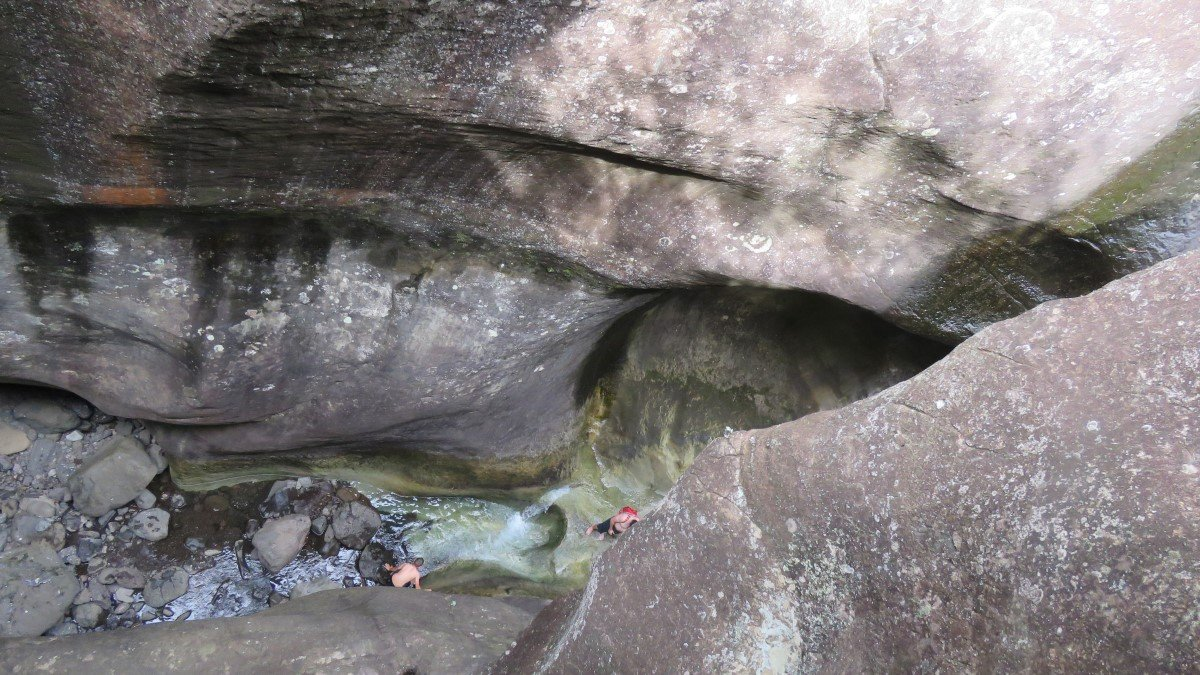
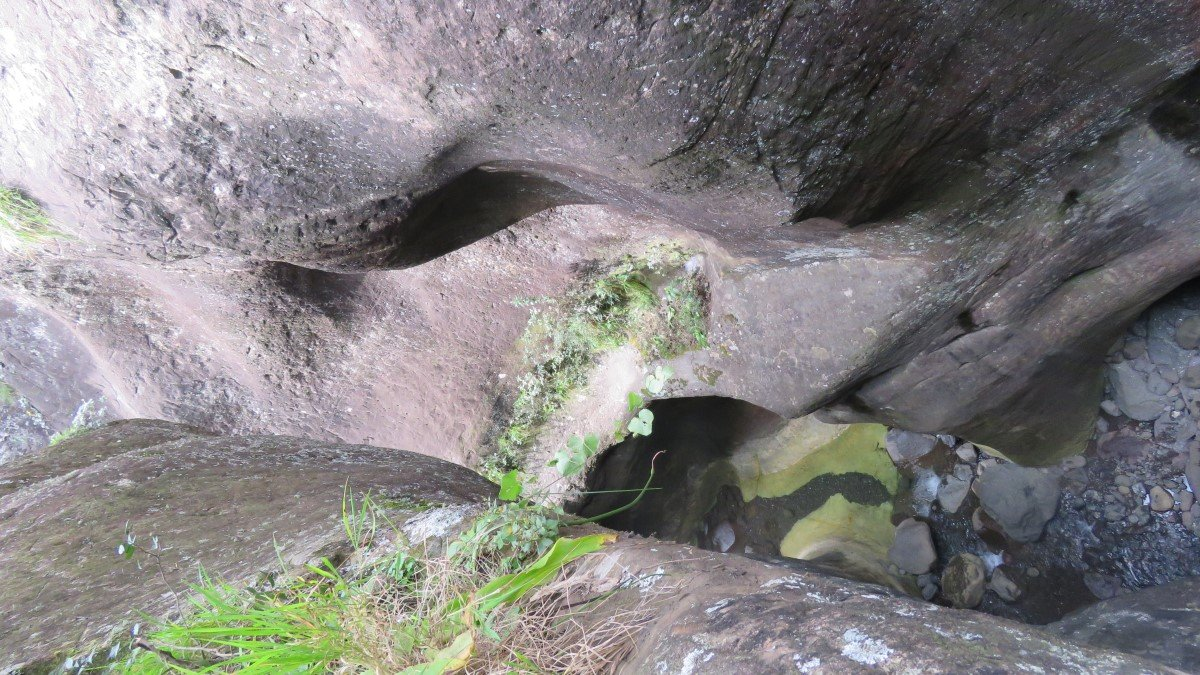
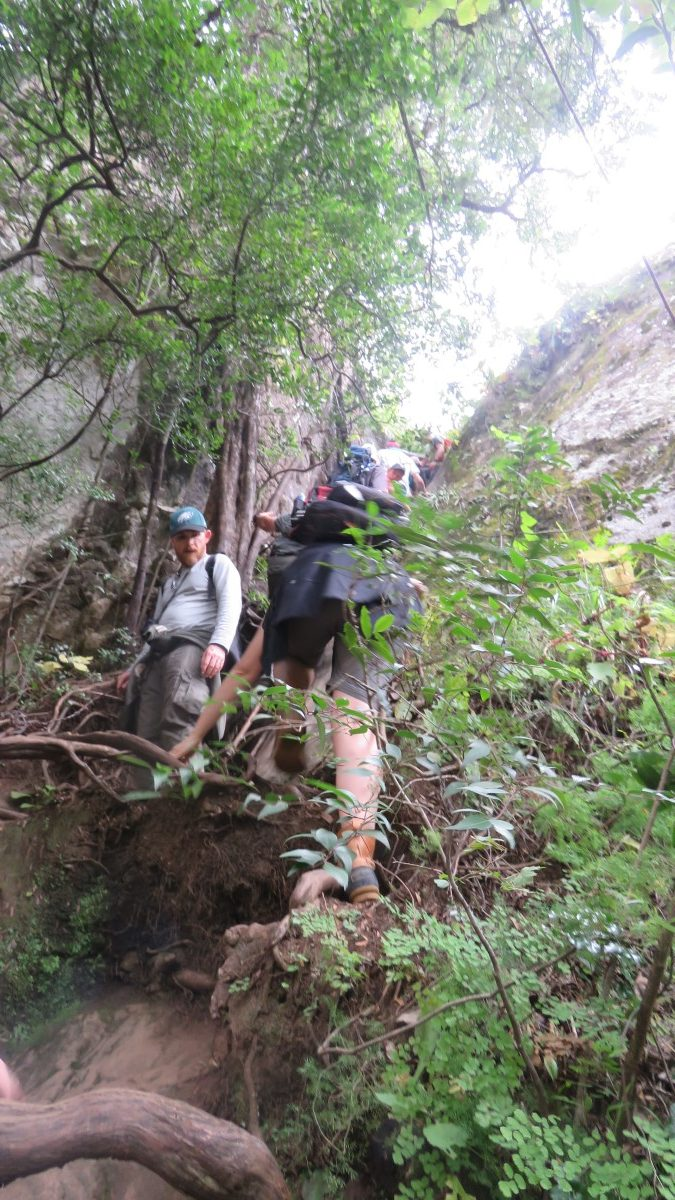
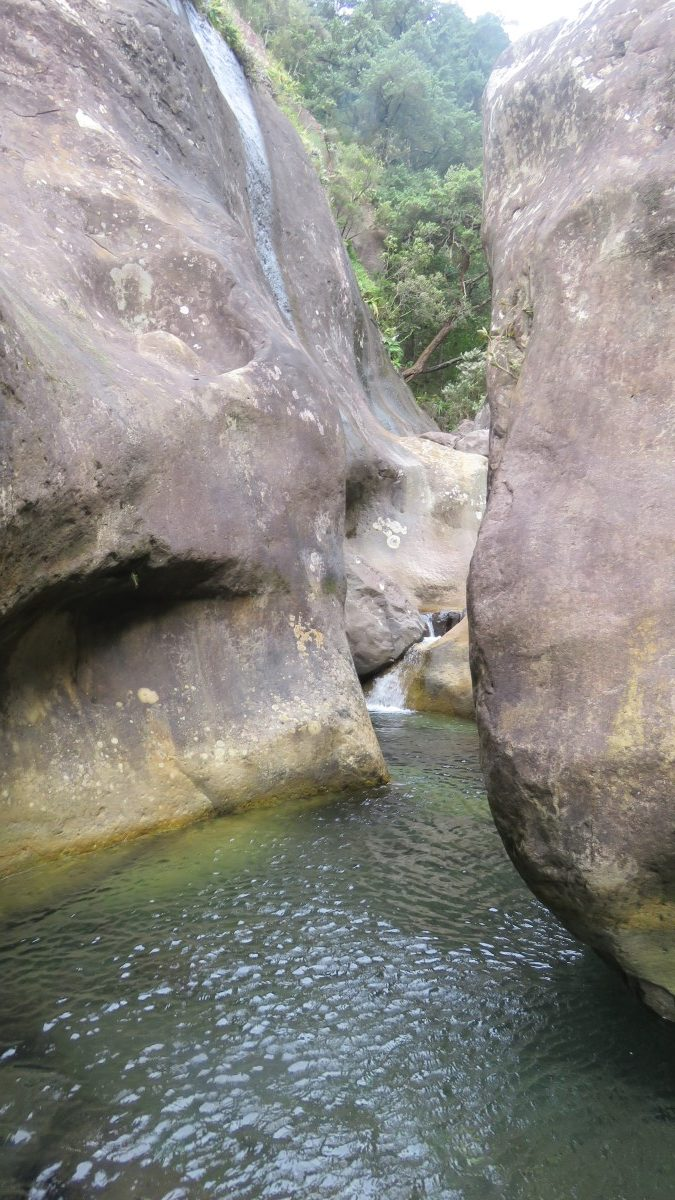
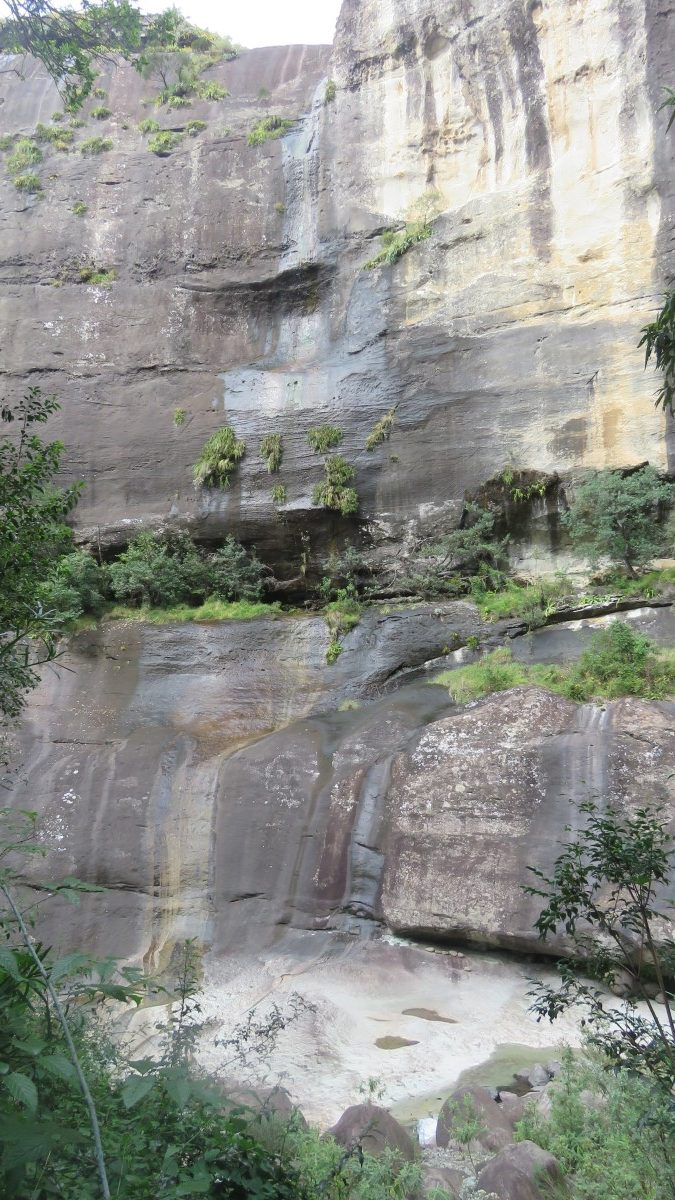
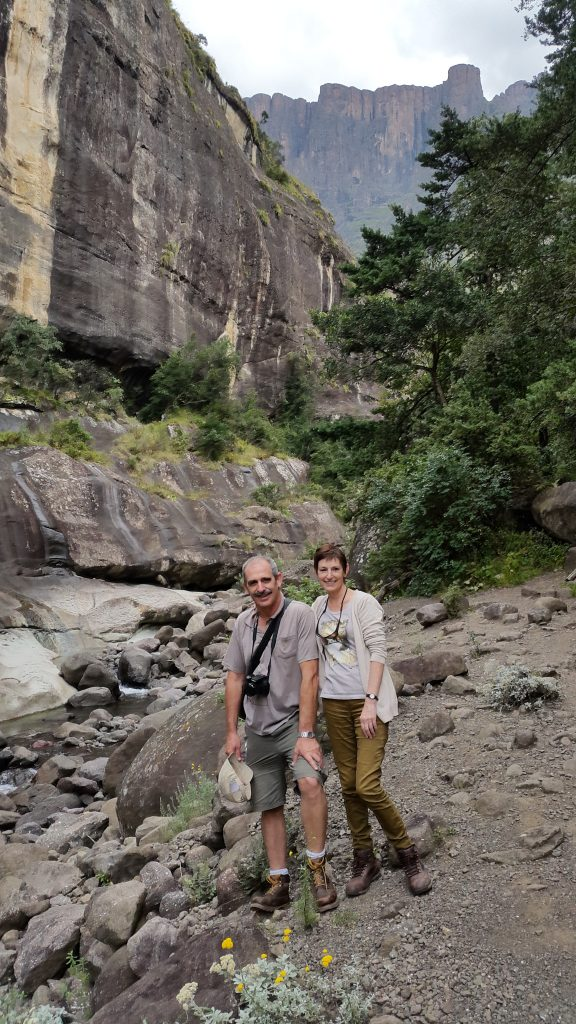
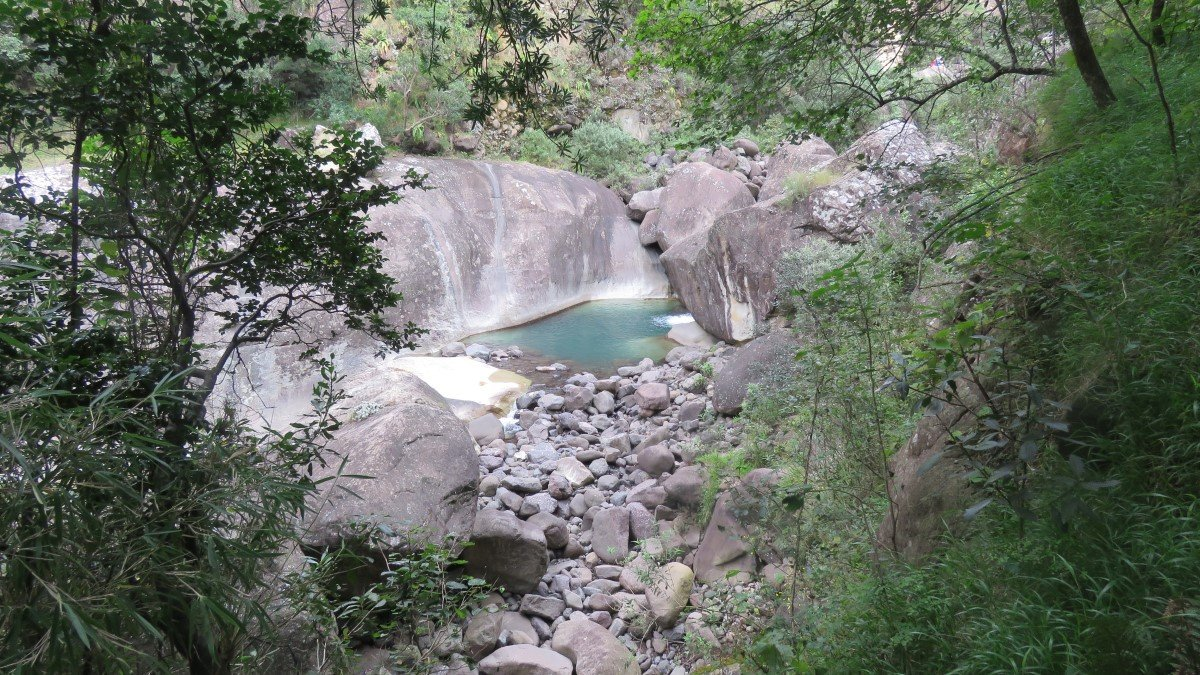
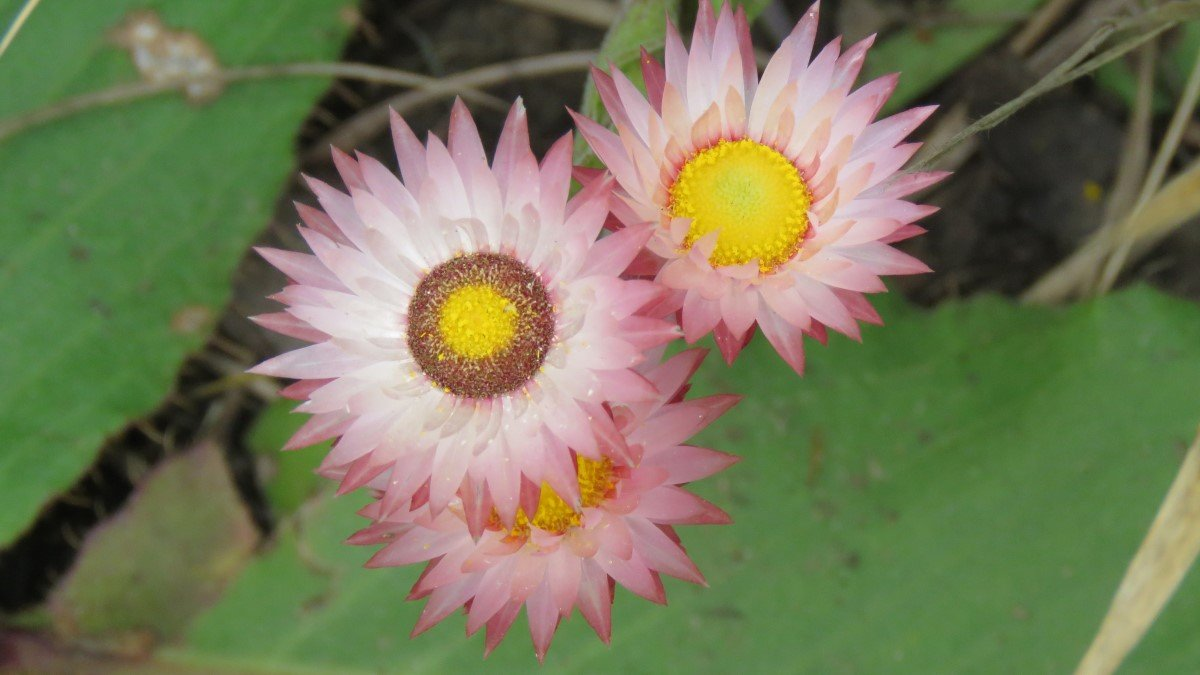
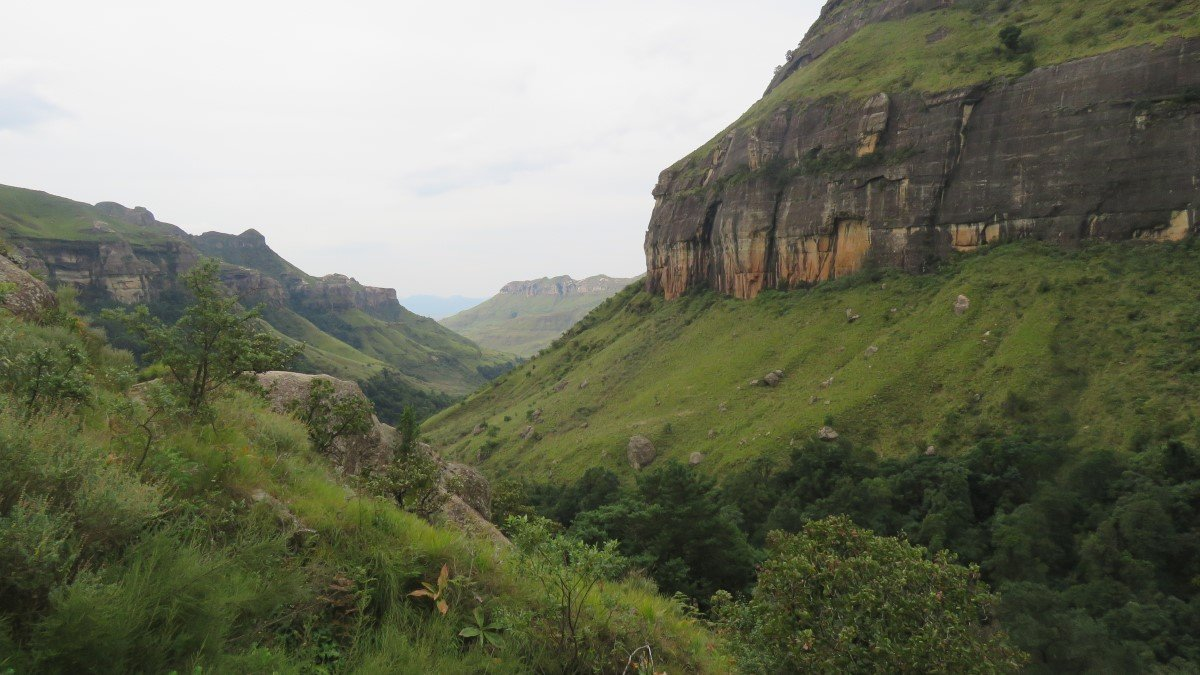
It was well past 5pm when we left the park. From there we still had a three hour drive ahead to our night stop in Himeville.
We spend the night at Himeville Arms… which turned out to be quite an experience. We had booked online, but at arrival we ran into problems. It seemed that our room didn’t have hot water. Of course… after a day hiking, we were in desperate need of a hot shower and to hear we couldn’t was not working for us. Management tried to sort it out, while we had supper, but even though they claimed it was sorted, it wasn’t. When we eventually went to bed- without a shower – we were kept awake most of the night by karaoke and party noise from the lodge pub. Not too impressed to say the least.
Sani Pass and Maluti Mountains
Next morning we left and went down the road to get us a coffee and pancake breakfast. After this good start to the day we dawled around at the other shops. I’m always keen to buy local souvenirs and after a browse around in the local gift shop, we walked out with a basotho blanket. (The blanket is now part and parcel of the truck.) We chatted to the shop owner / manager and he gave us some tips how to get to our next destination in Lesotho. We eventually got on the road and up the pass.
The Google images give you a better feel of the pass as what photos on the road do. Top: the road between the two border posts. Middle: looking back onto the pass from the top (Sani Mountain lodge just left of the top of the gorge with the Lesotho border post just a little bit more south). Bottom left: the top section of the pass with its never ending succession of hairpins. Bottom right: Sani Mountain Lodge with the “Highest Pub in Africa” to the right and the Lesotho border post to the left.
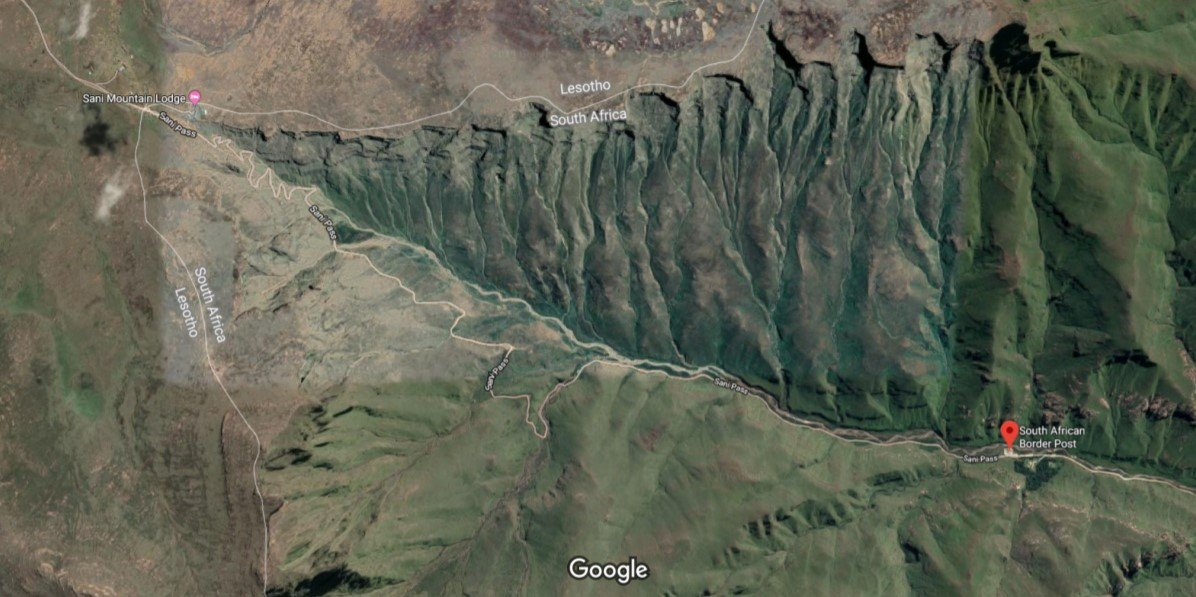
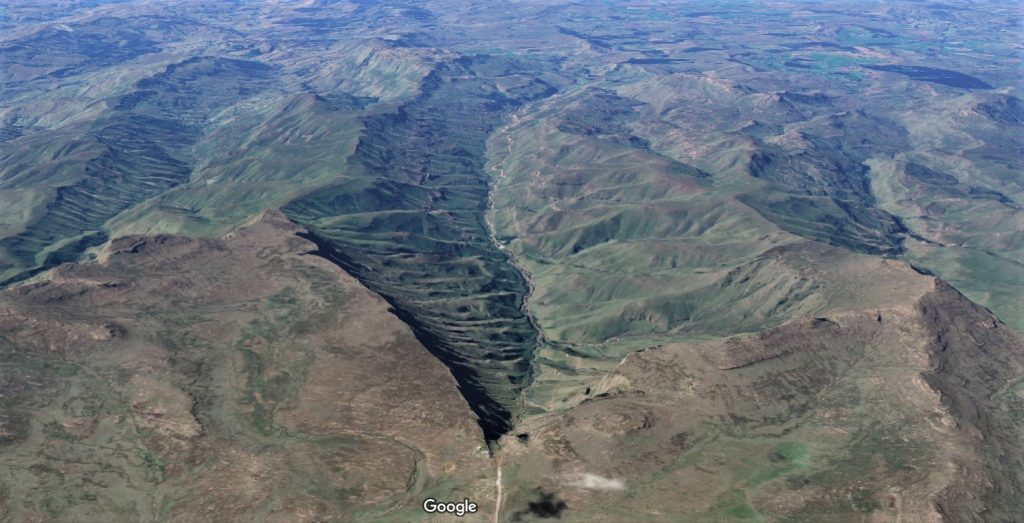
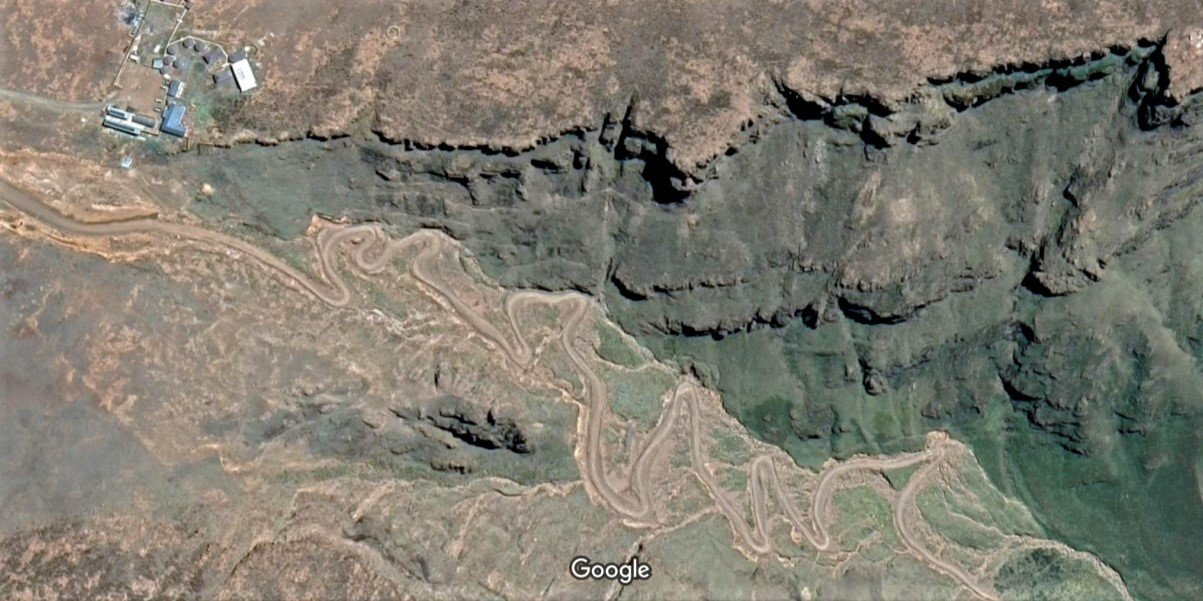
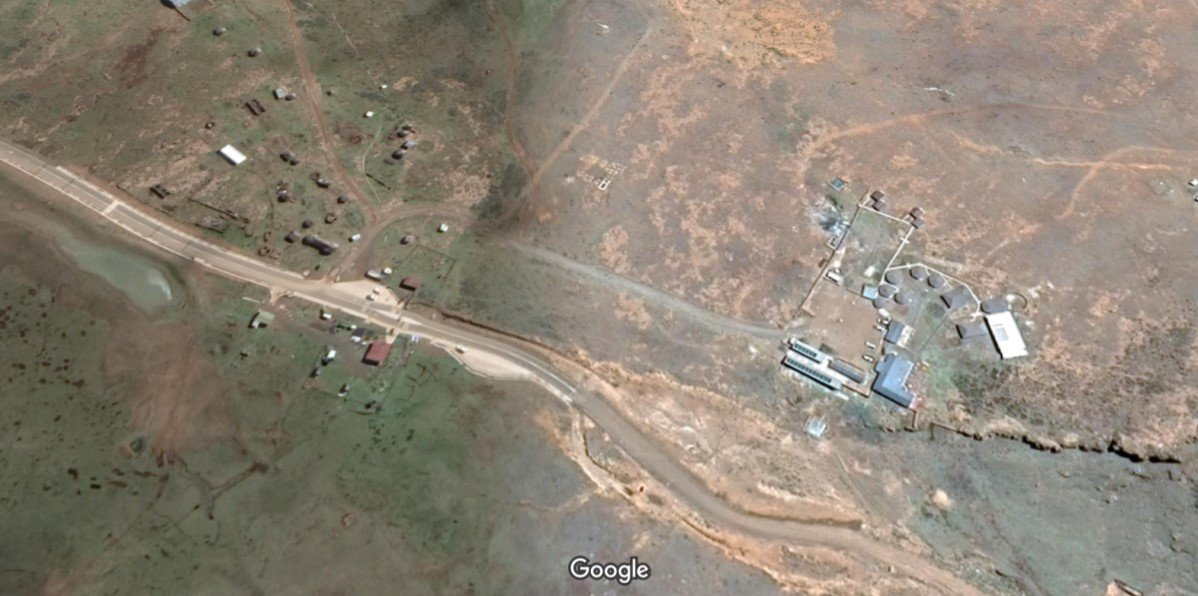
The weather was weird: cold and cloudy, with a good sprinkling of blue skies and sunshine inbetween! But the landscape was amazing. The South African border post is about 30-40 km out of Himeville. Out of town and starting the slow ascent of the pass, roadworks were in full swing, but the higher up we went it was gravel road all the way. At the S.A. border post we saw a pimped out hippie volksie bus and further up the pass we saw a whole congregation of the vintage buses.
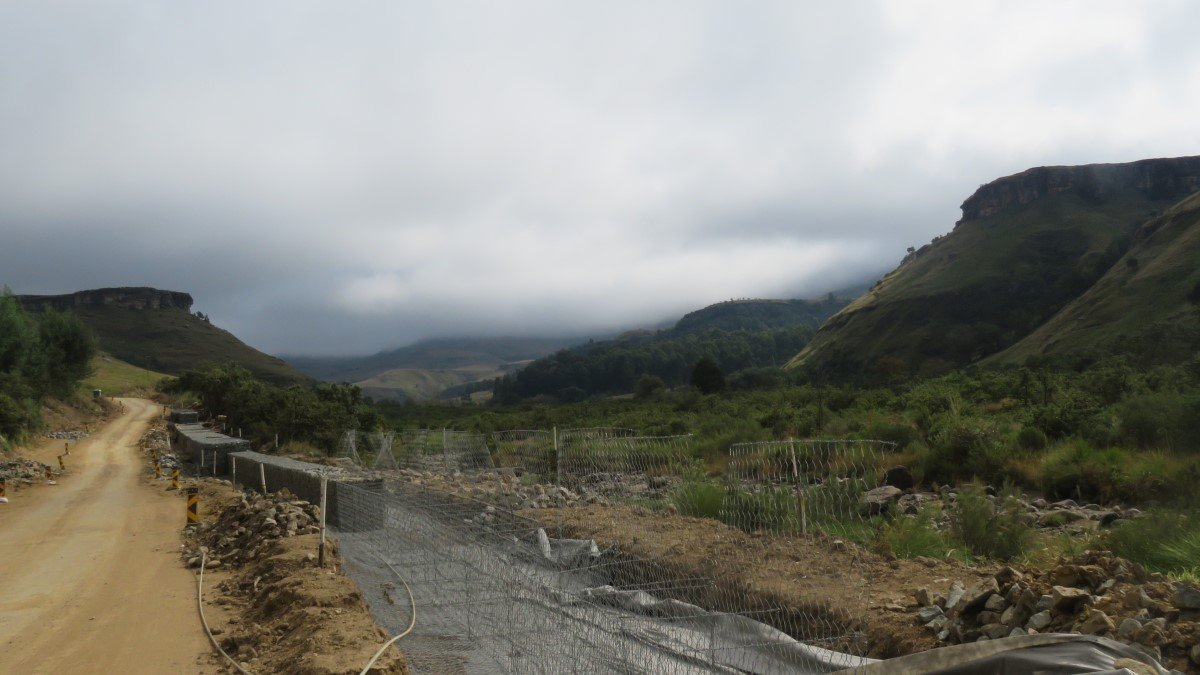
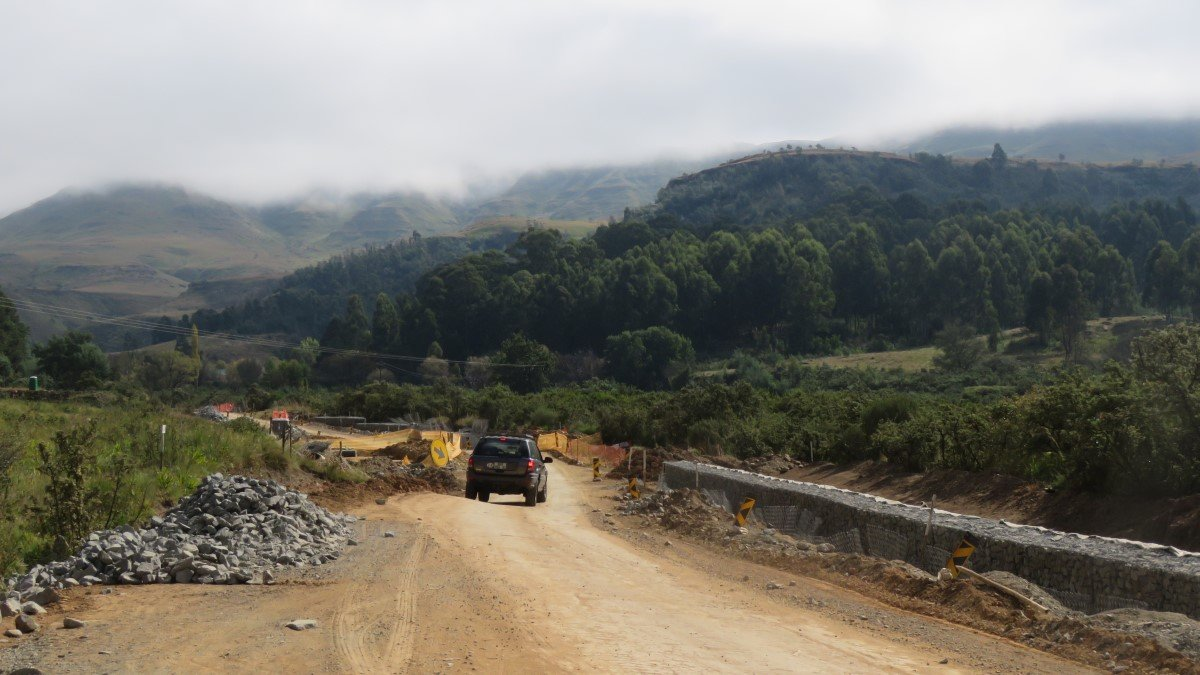
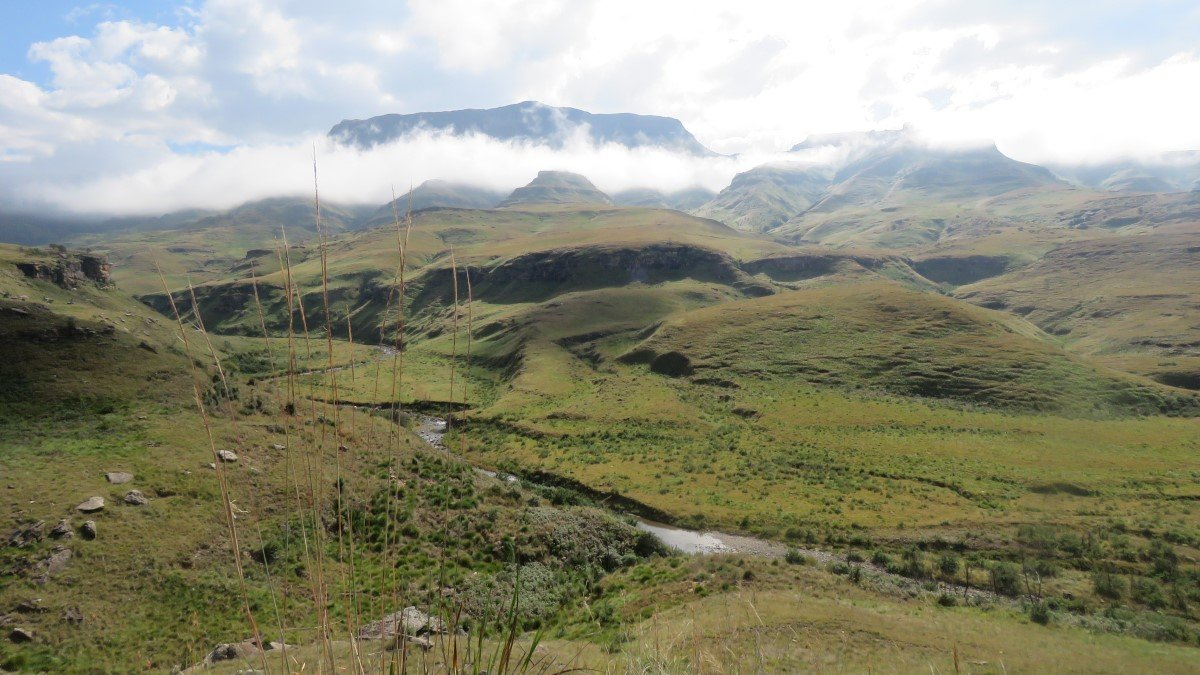
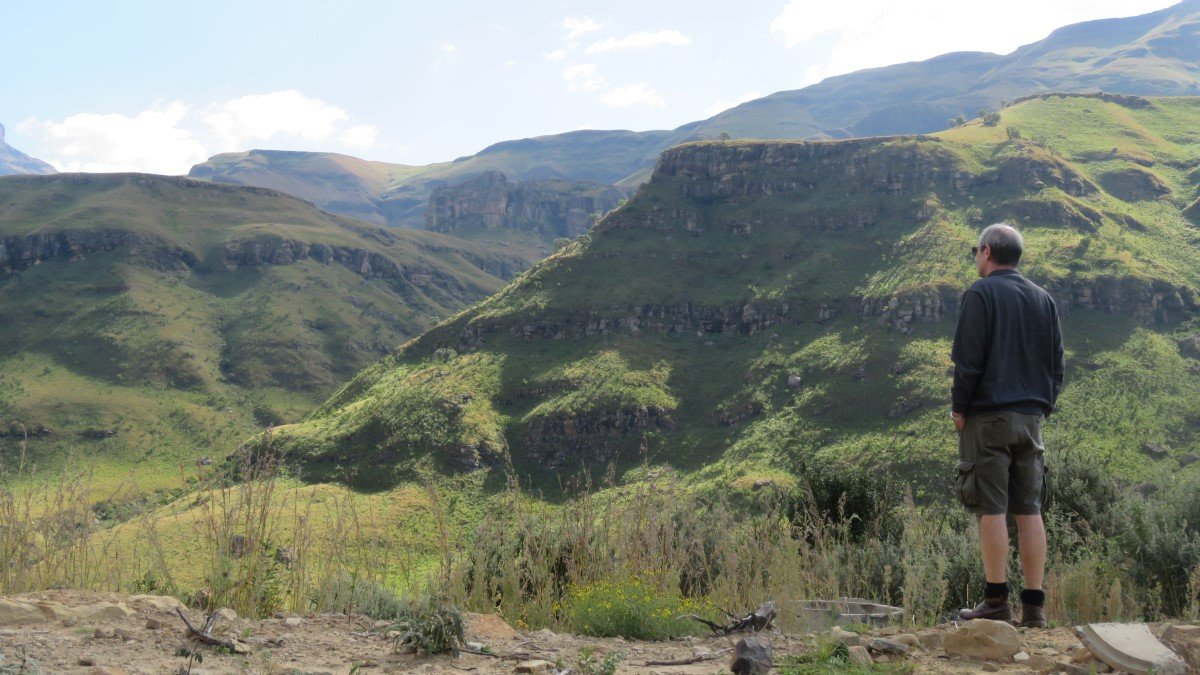
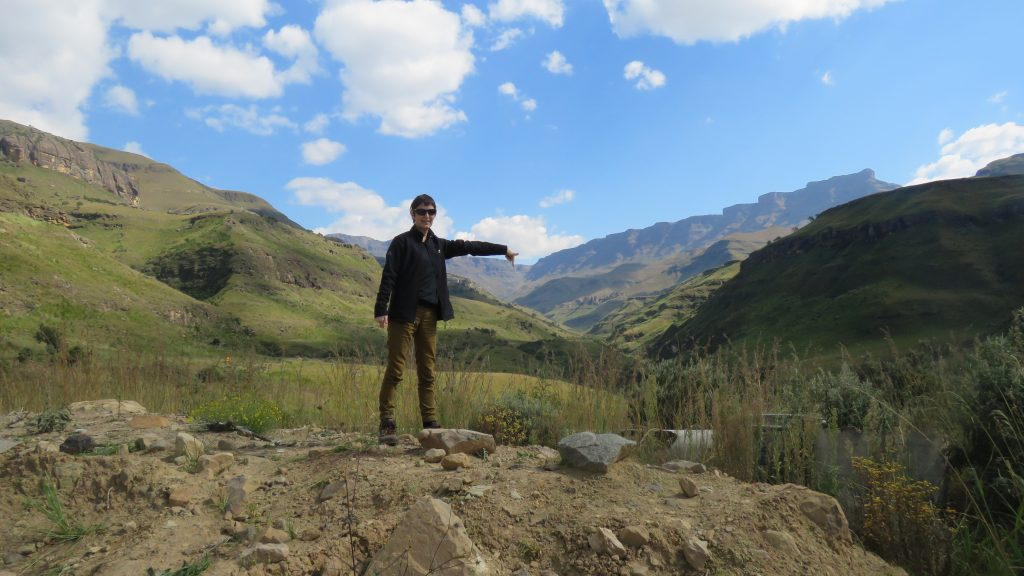
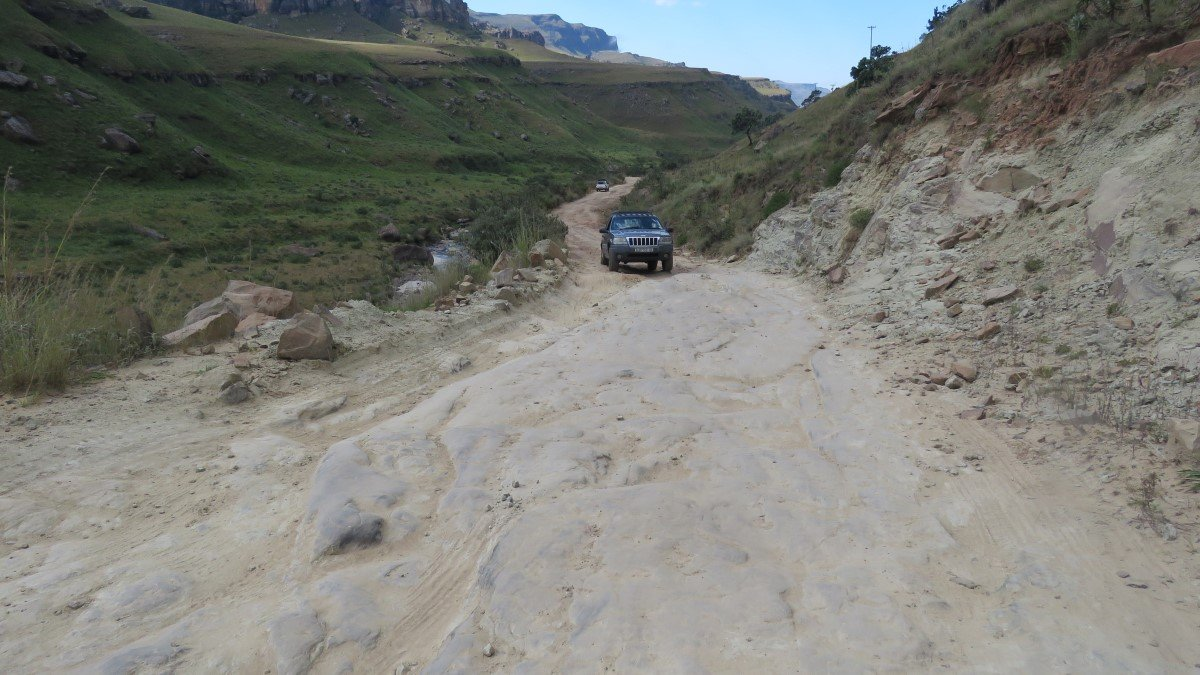
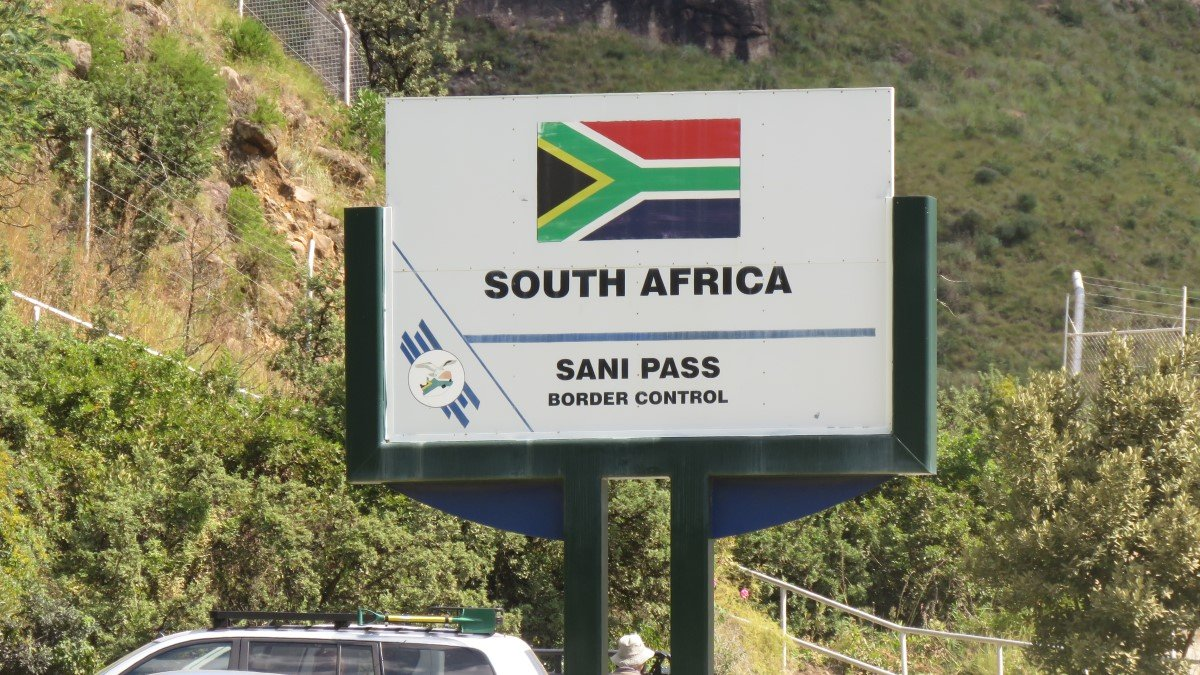
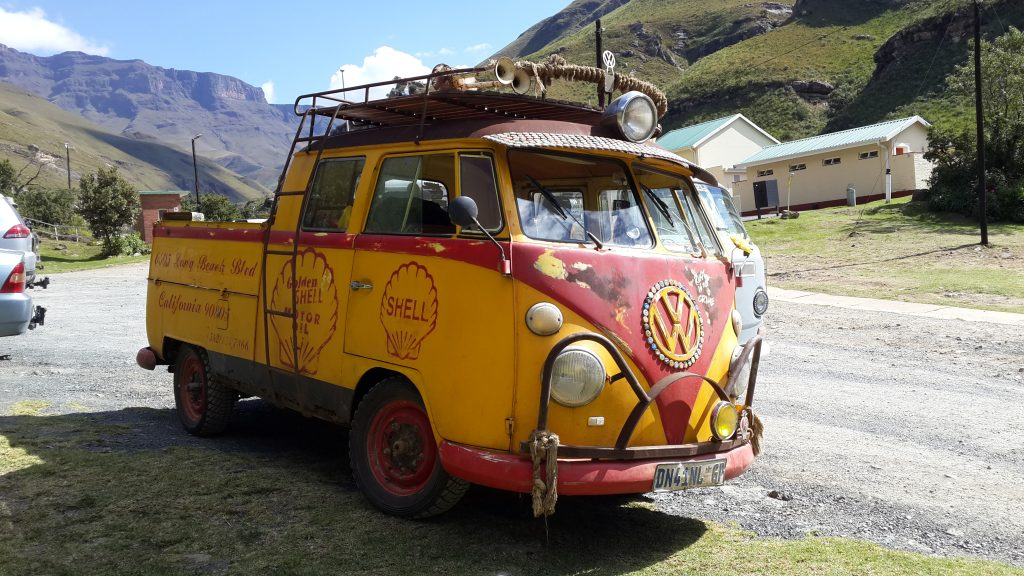
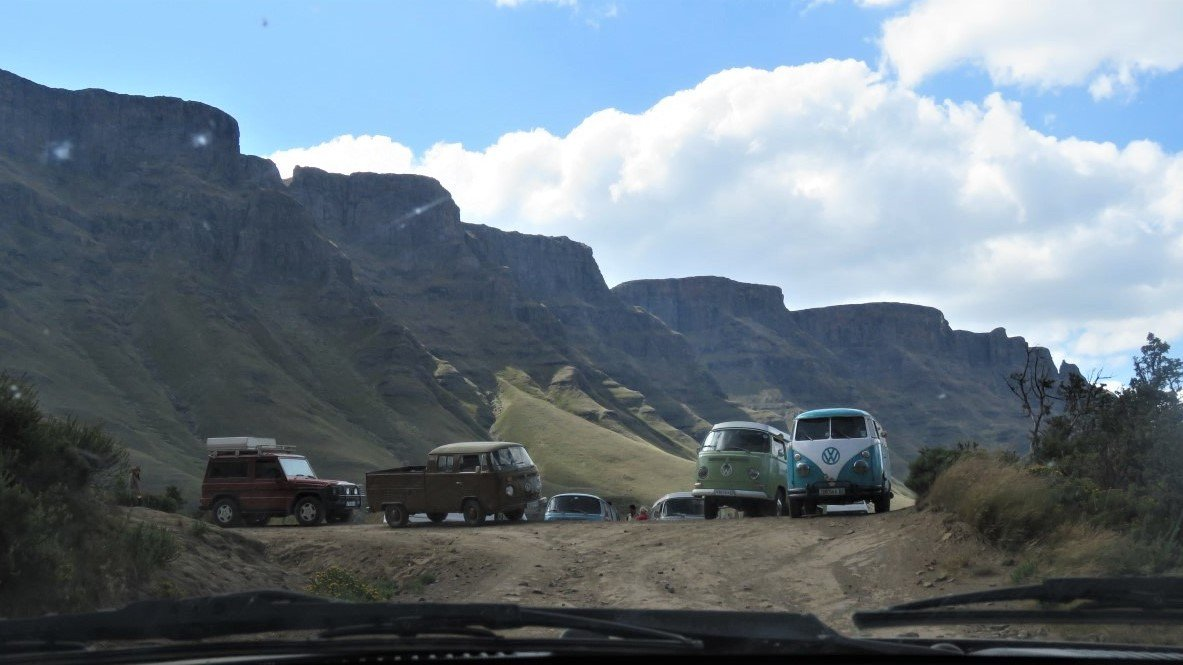
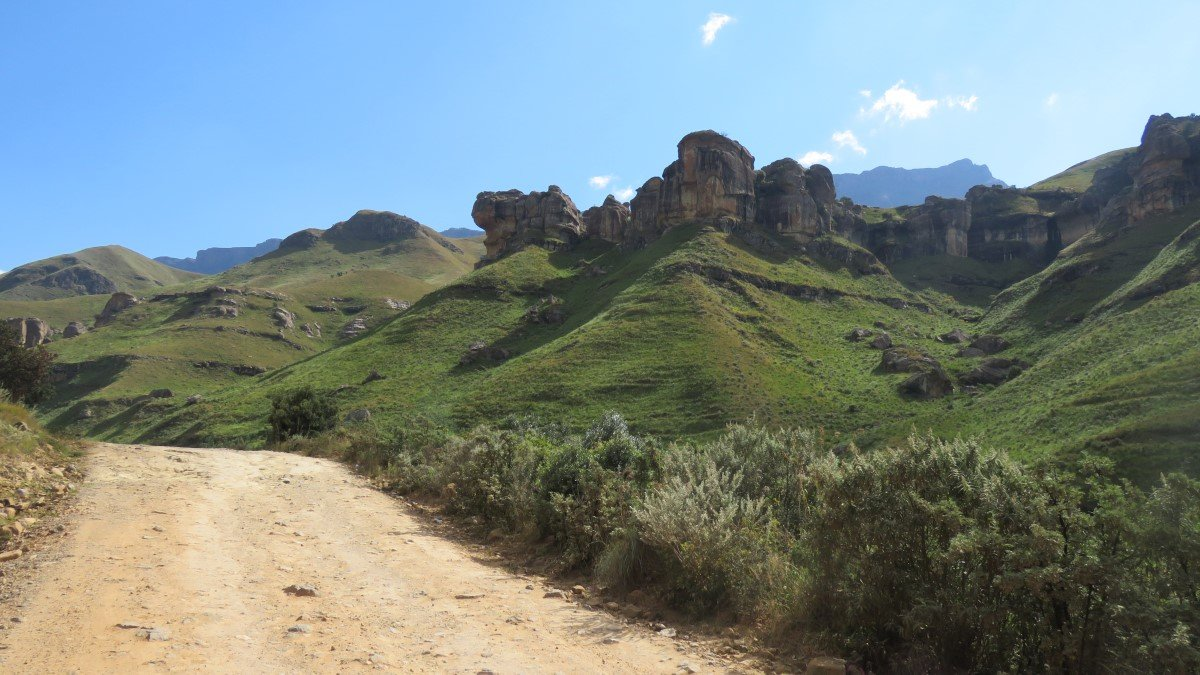
Where the road gently slopes at the bottom of the pass, it gets steeper and with more hairpins the closer you get to the top.
As we kept on driving we were gobsmacked to see a brave couple WALKING up the pass – the woman even being handicapped. Wow … we were quite impressed. When we arrived on the top we quickly went through the formalities at the Lesotho border post. Or lack thereof – the whole visa thing didn’t even come up. A stamp in our passport and that was it. Less than five minutes in and out. Good for us… more time to spend at the “highest pub in Africa” for a cold beer and a bowl of hot soup. The hot soup was very welcome. The wind up there had a serious bite and because the pub was so full, we could only sit outside. We strolled to the edge of the escarpment to look back to the pass we had just crawled up. When we went back to the car, we met up with the couple that walked up. We don’t know who they were, but kudos to them!
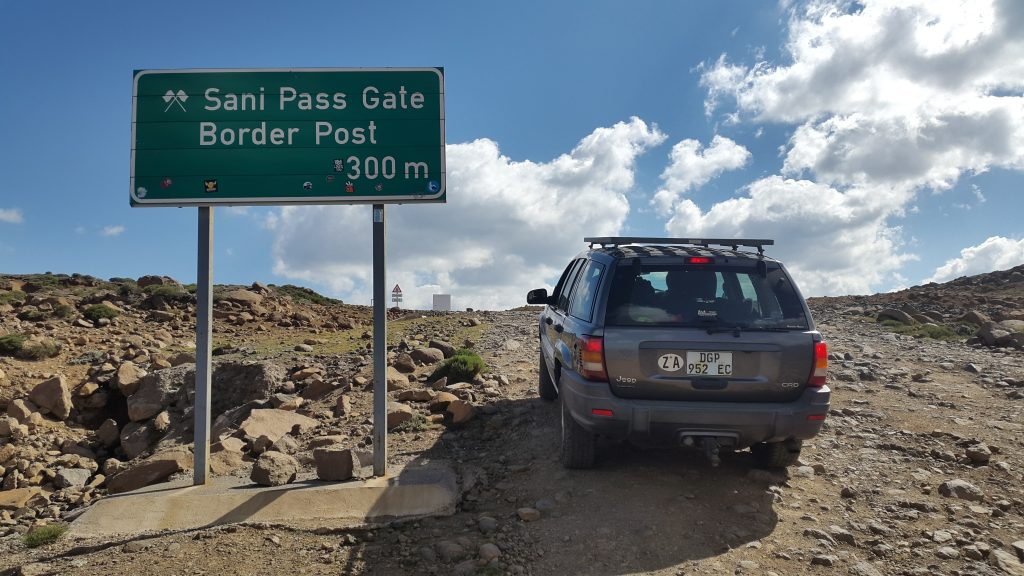
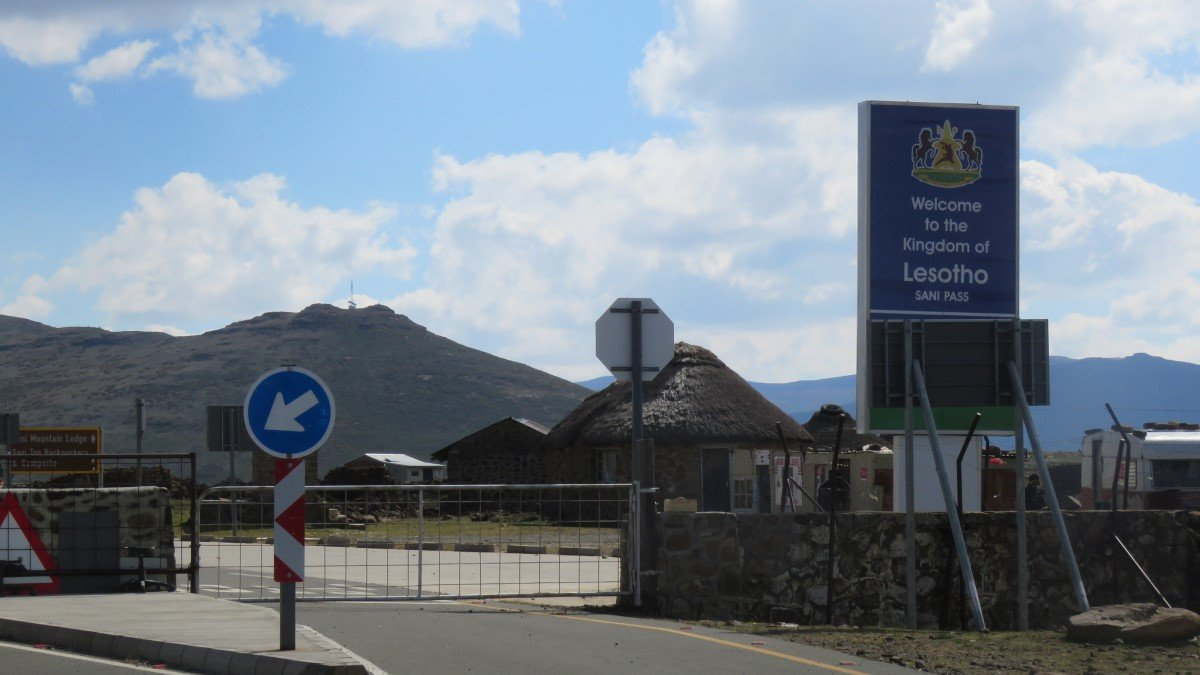
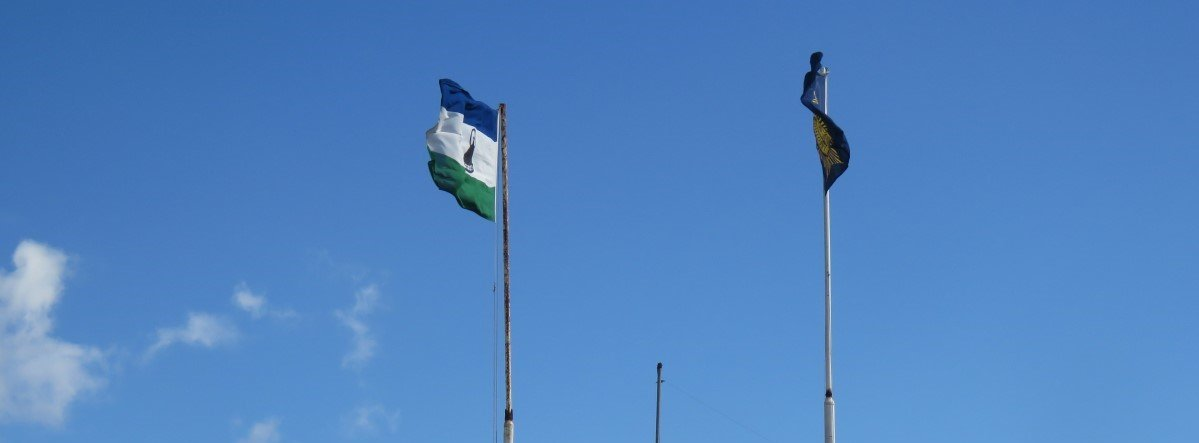
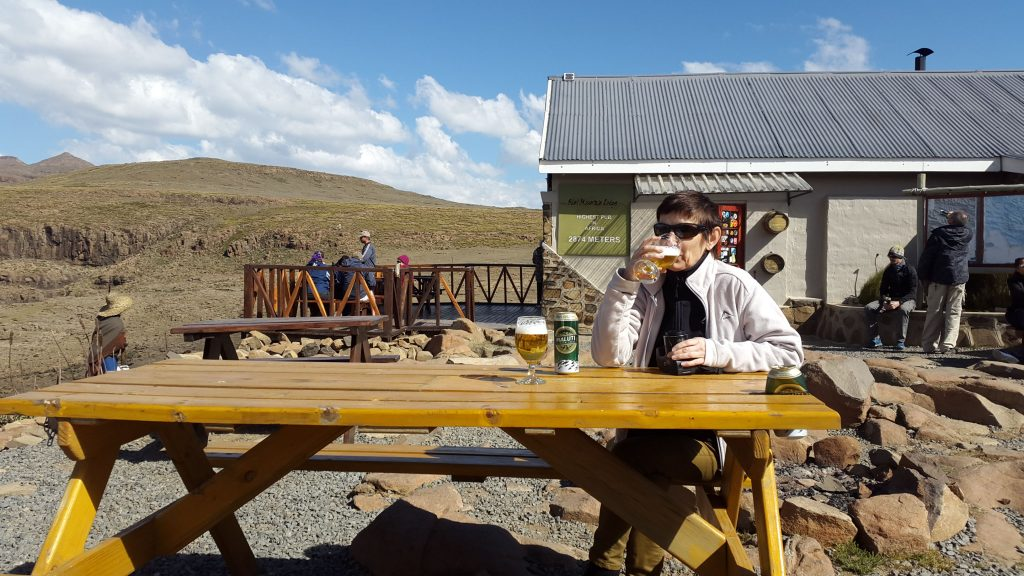
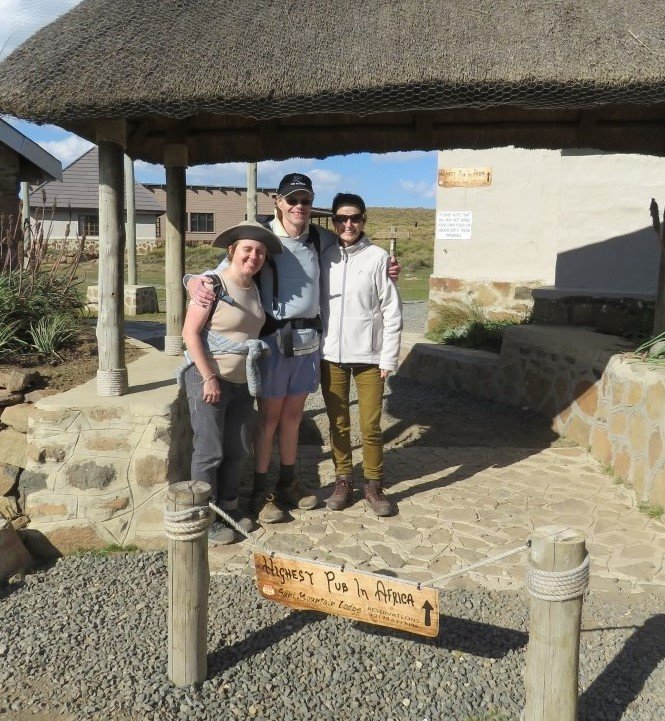
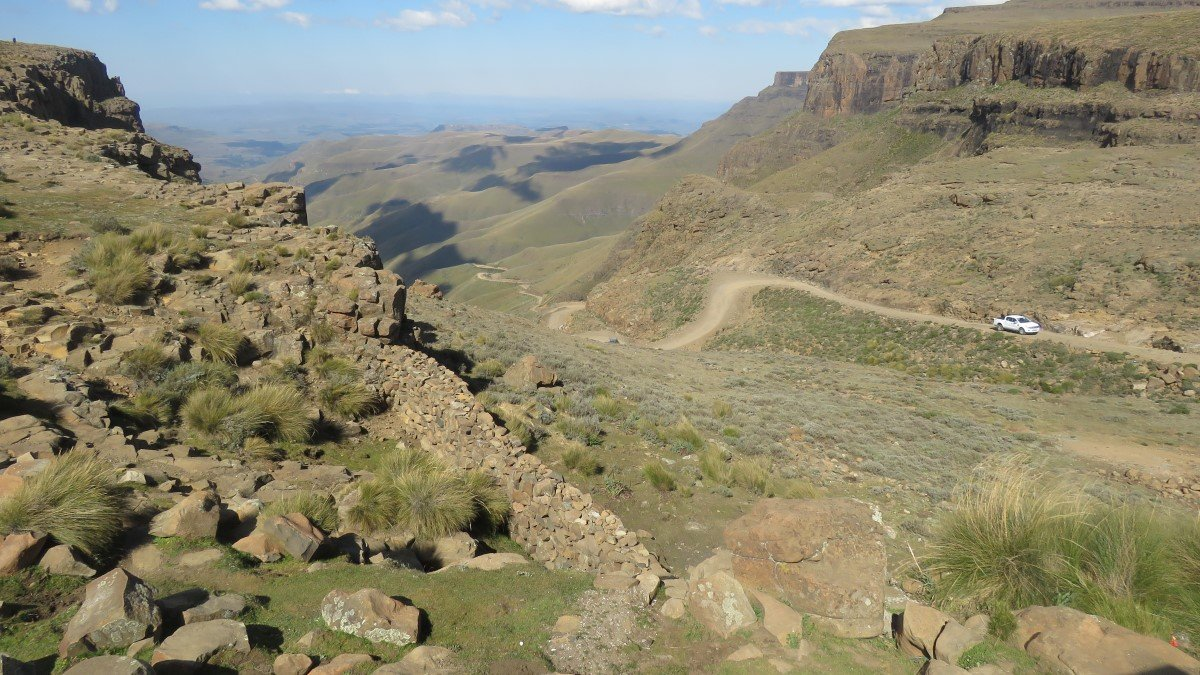
After our lunch we had to move on to reach our next accommodation before nightfall. Seeing we didn’t bring a map (banking on cell phone gps) and there was no reception on top of the escarpment to use the gps, we relied on the guidelines of the souvenir shop manager. But somewhere we must have missed a turnoff, because eventually we drove and drove and drove and every time we asked for someone how far it still was to our point of destination … the explanations never sounded right. Only afterwards, when looking at the map at home, did we realise that we had indeed taken a wrong turn and had driven through the Maluti Mountains on the north side of the country instead of the south side. We made a biiiig detour. But it was beautiful. It bears testimony to a rural lifestyle: mountains with fields planted in terraces up the slopes, herdsmen walking their cattle or sheep and stone homesteads dotted across the countryside.
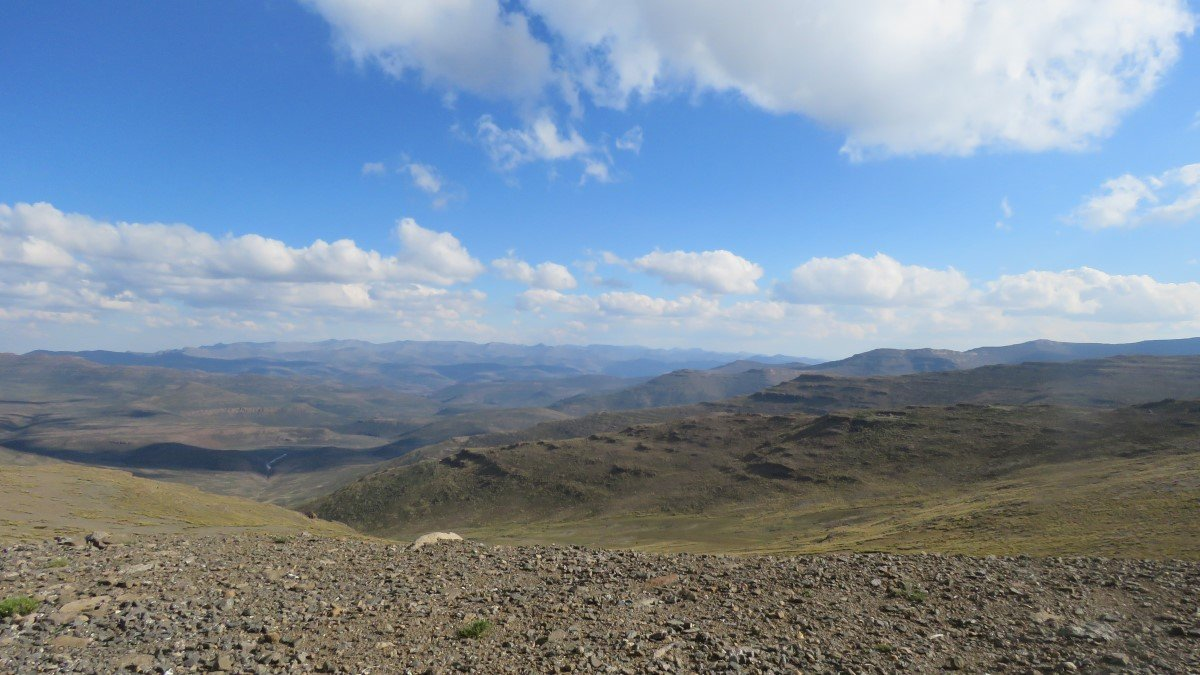
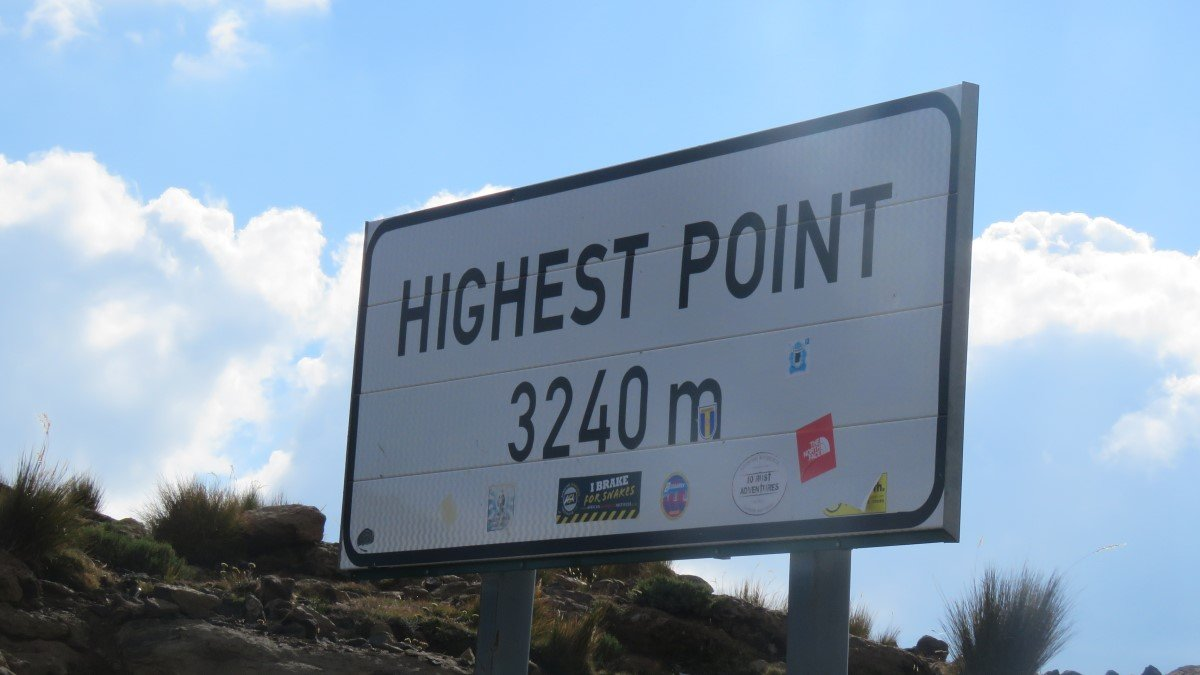
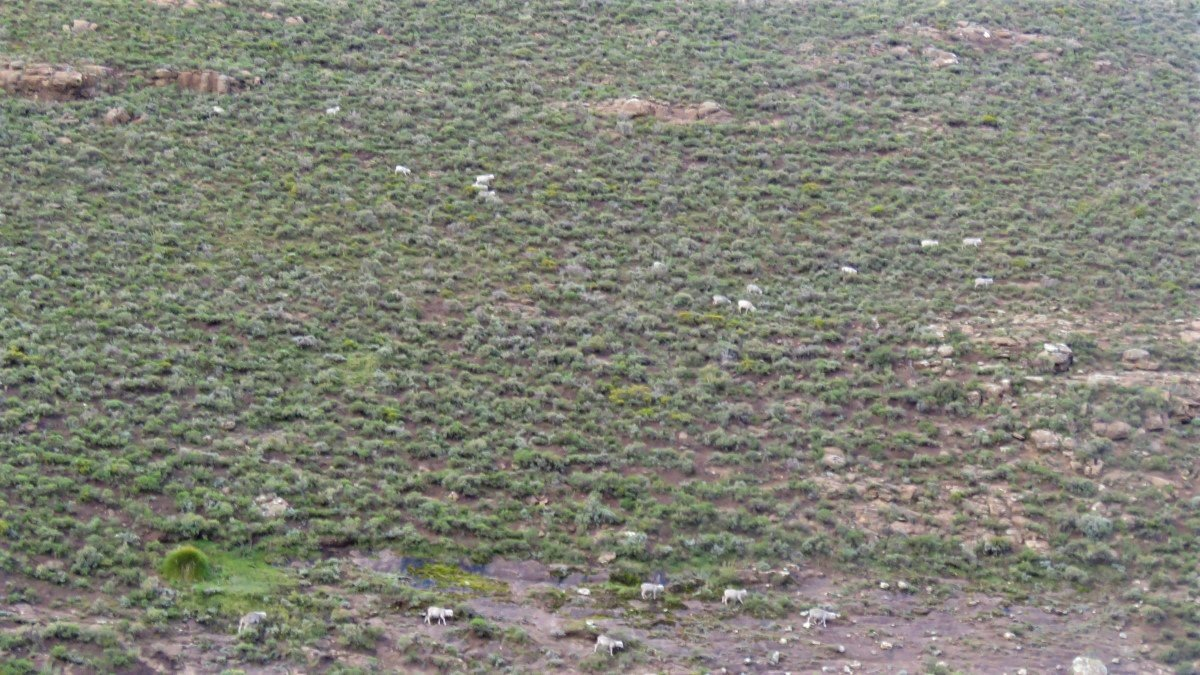
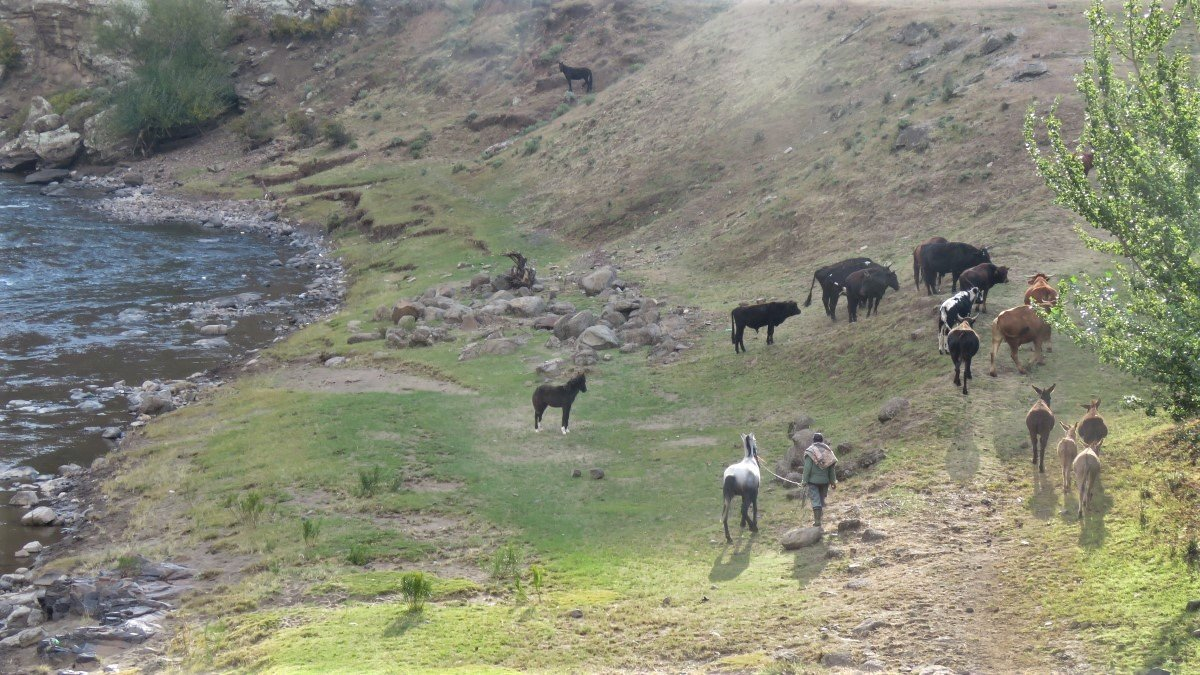
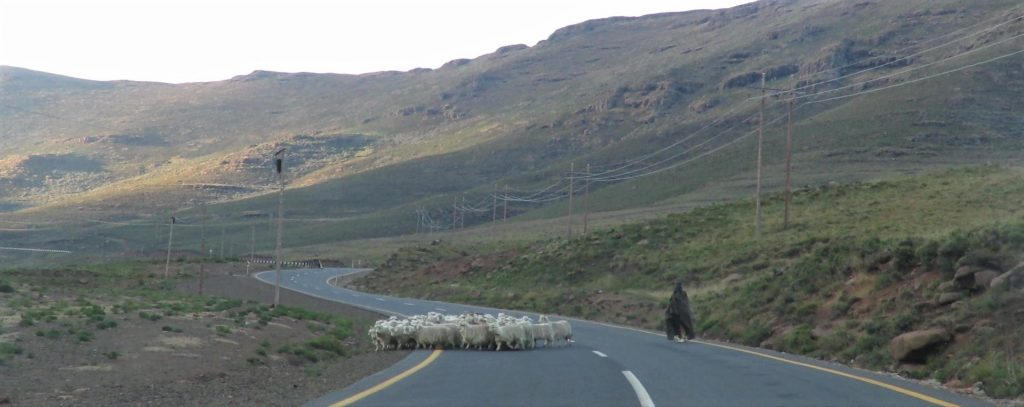
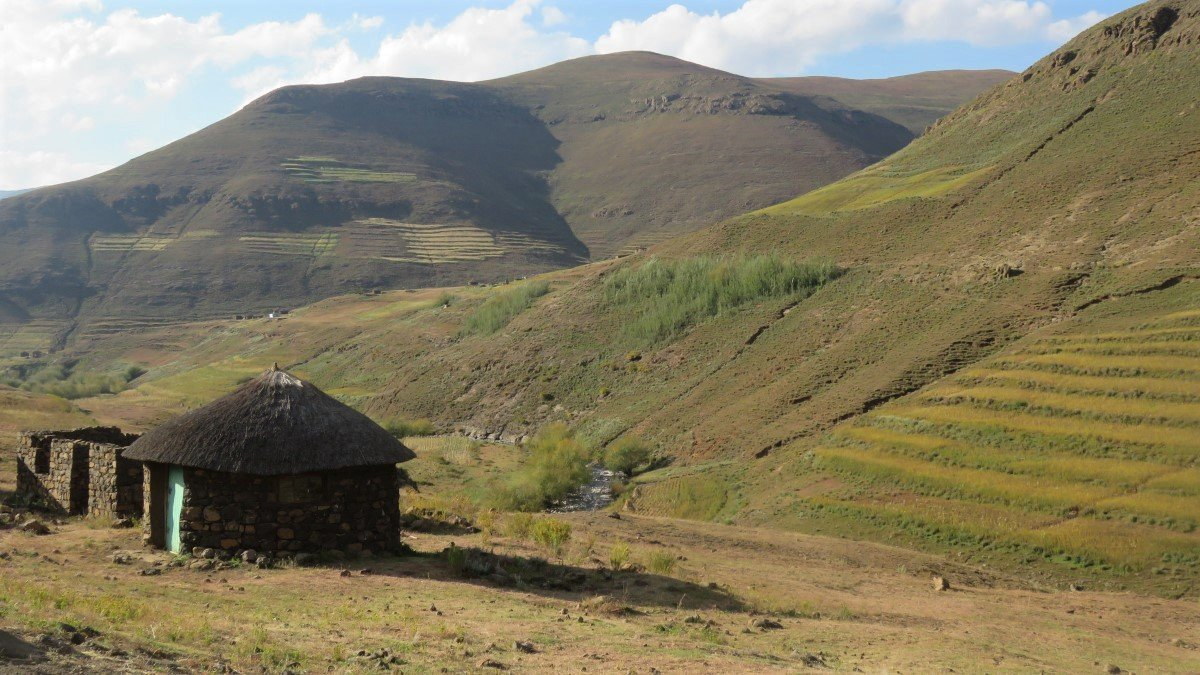
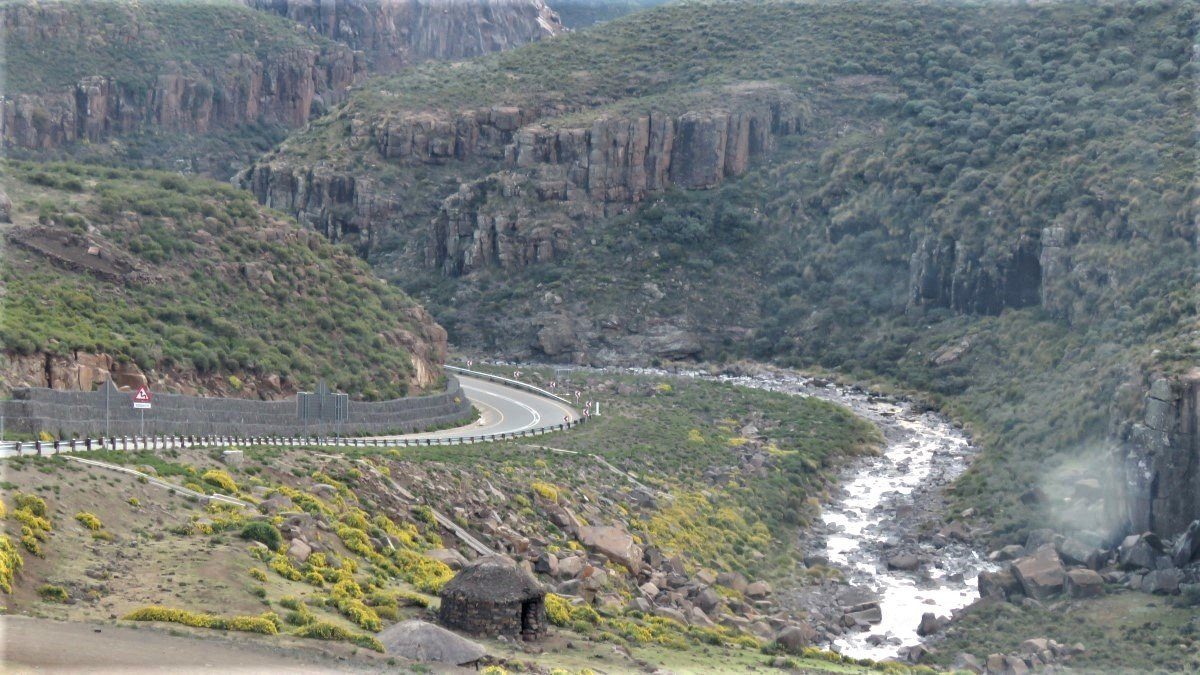
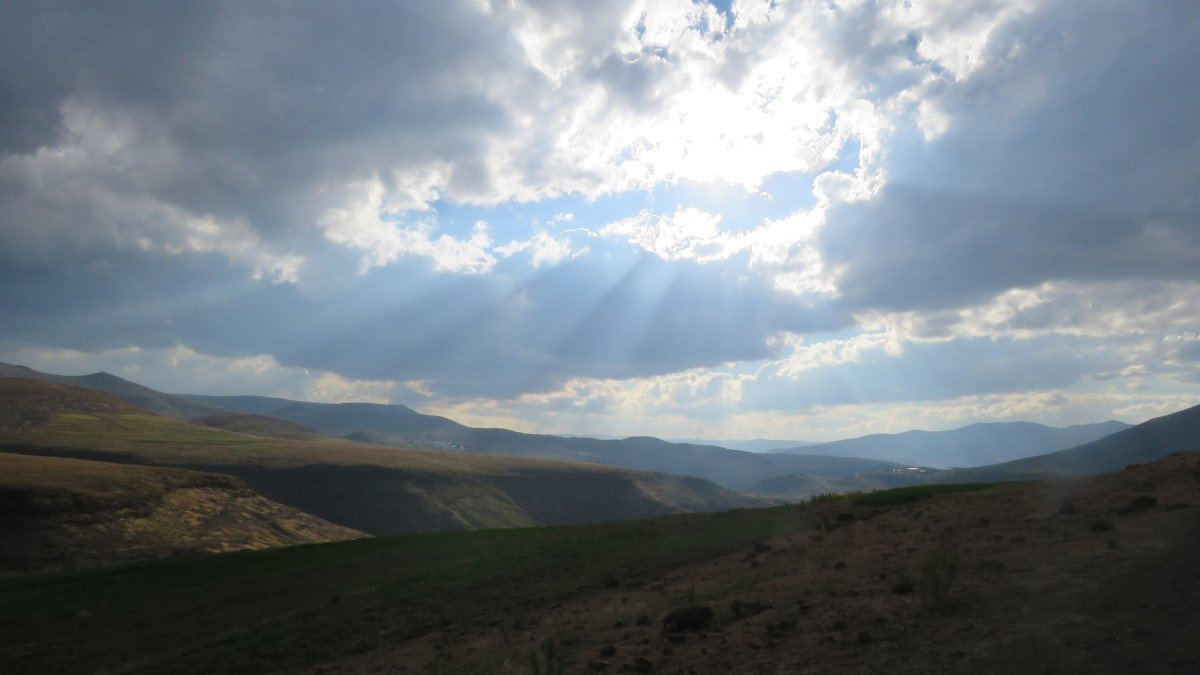
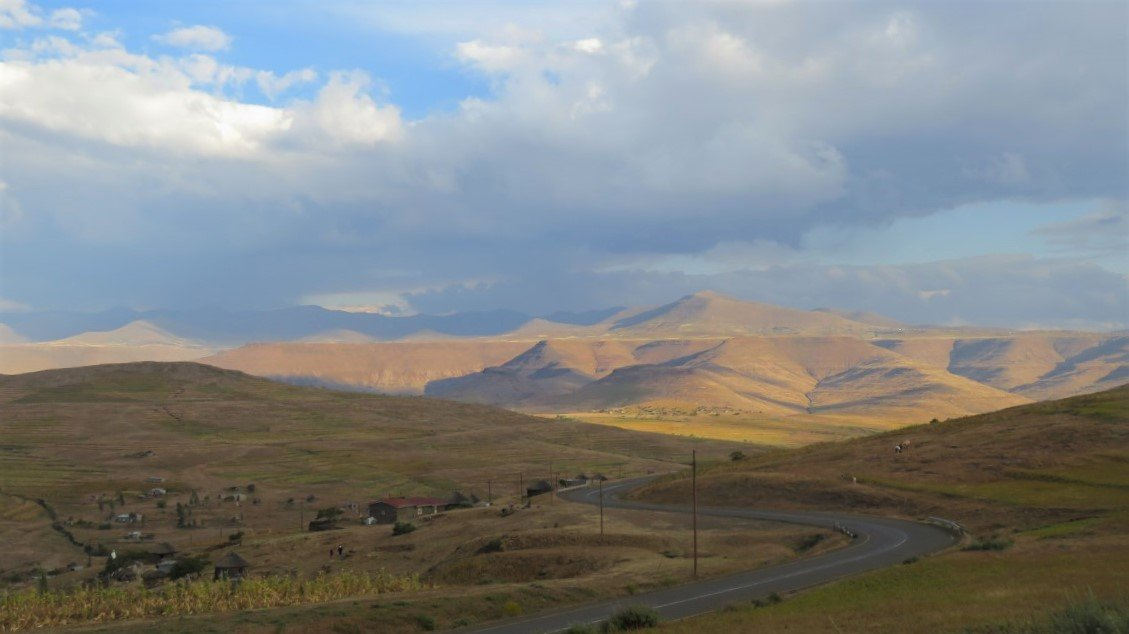
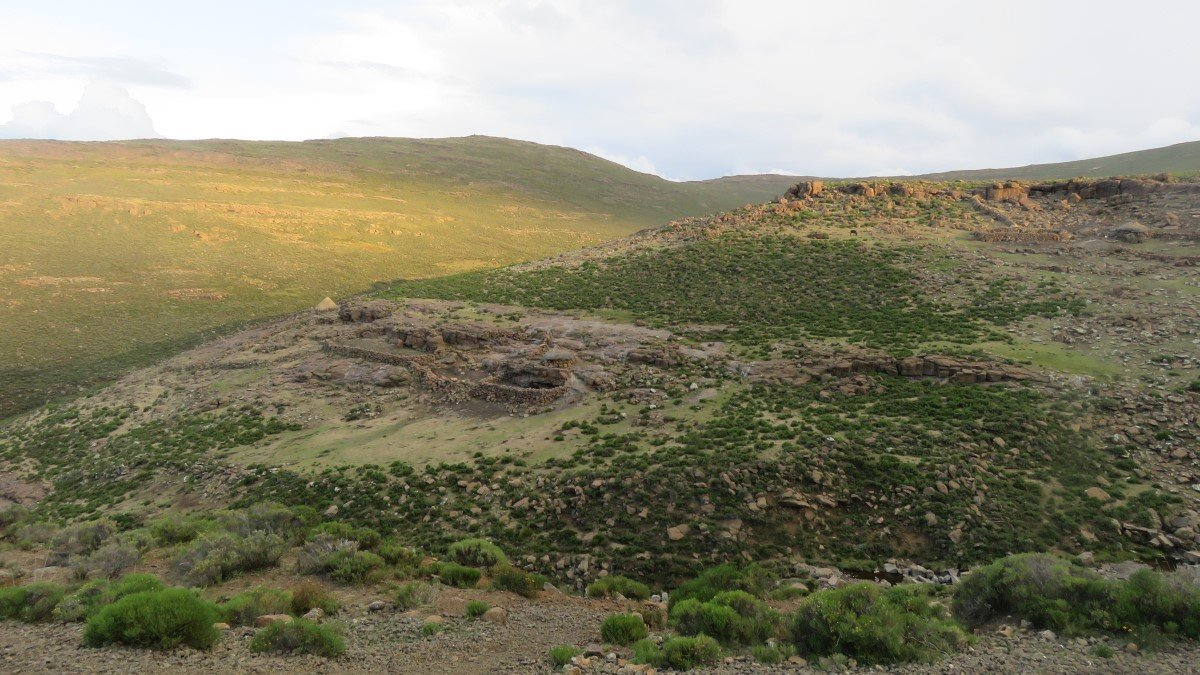
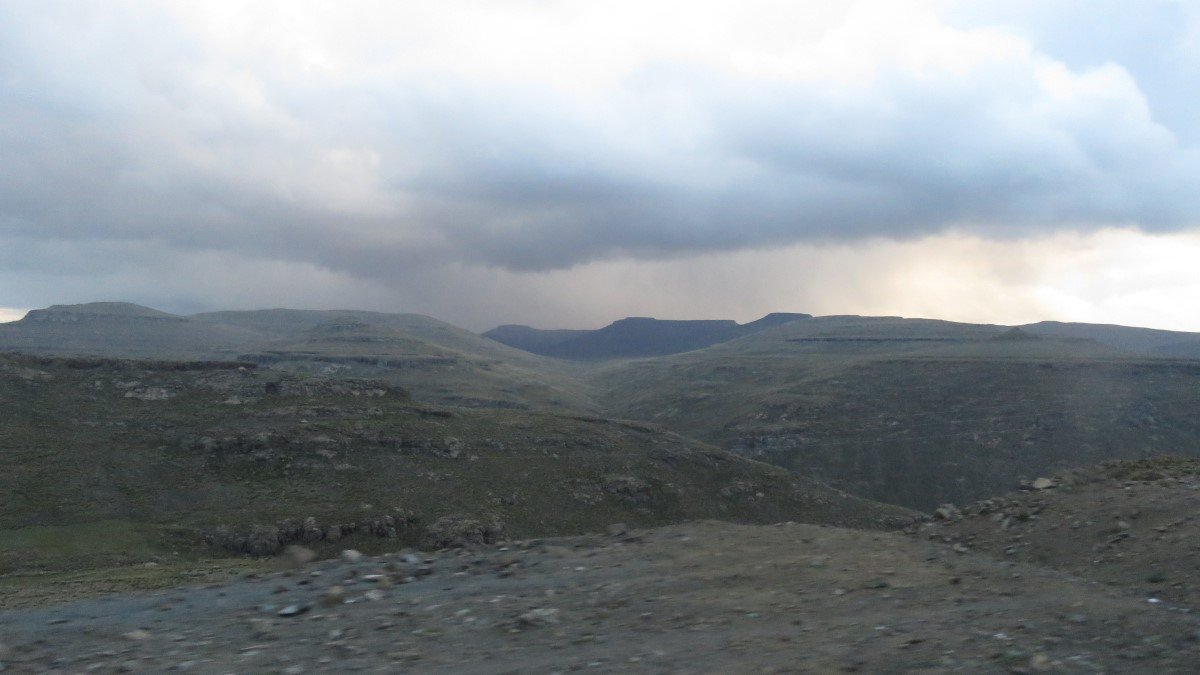
We also a tiny radiator problem that necessitated a stop every so often to top up with water and- given the big wrong turn/detour we took, I got more nervous by the minute when night fell and we didn’t even seem close to where we were supposed to sleep that night. Eventually, at almost 10 pm at night, we arrived in Maseru and stopped at the first hotel that had a vacant room!
Pony trekking in Ribaneng
Next morning we had a quick drive around in Maseru, with its iconic Basotha Hat craft market (which we didn’t visit) and then continued towards our horse riding experience. (The previous evening, at our overnight stop, we had taken the opportunity to use internet and wrote down the route we had to take. We were not (again) going to try improvising or guessing our route.)
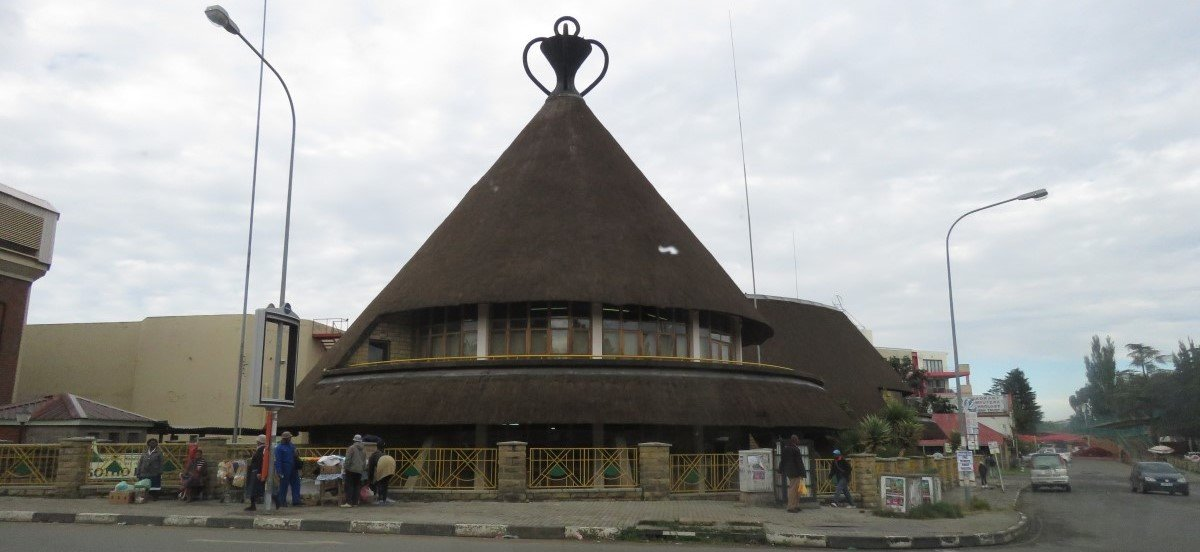
The day was cold but sunny and the landscape was amazing. We traveled on gravel roads through dorpies and hamlets up mountains and down valleys with local herdboys in their iconic blankets accompanying their cattle with clinging bells which almost made me feel as if we were in Switzerland. We passed over ice cold streams where we filled up our radiator every so often. Taxis and little sedans were chasing up roads that we came to tackle with our 4WD and we passed fields sprinkled with pink and white kosmos flowers.
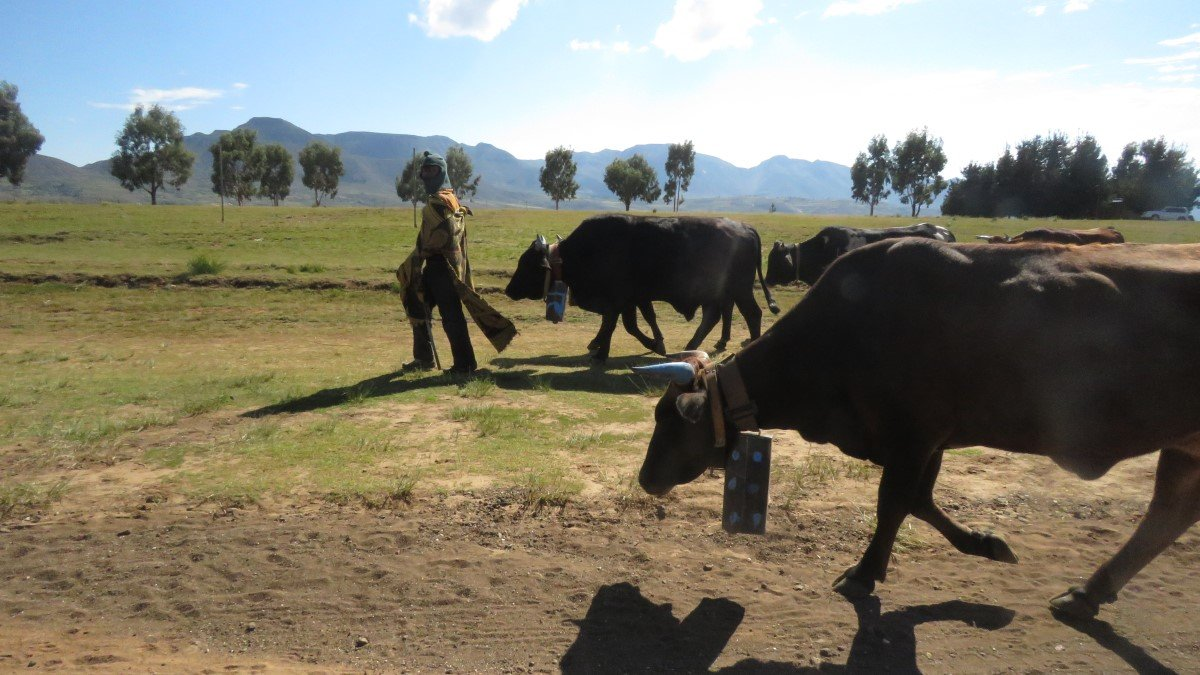

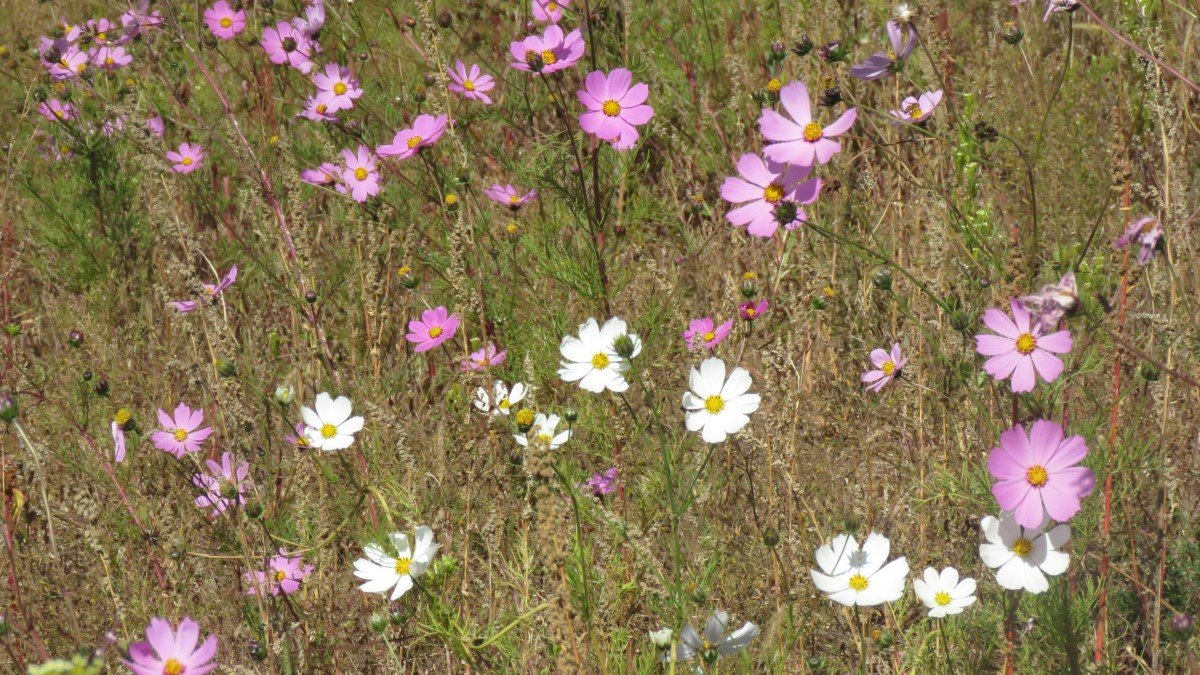
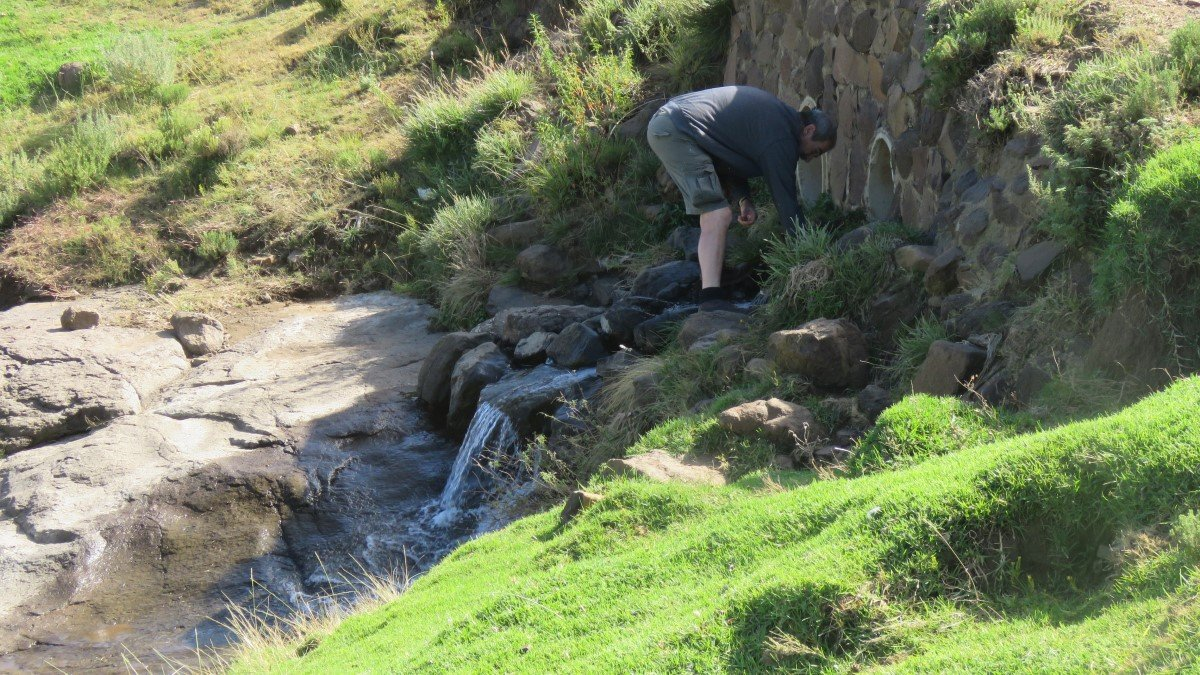
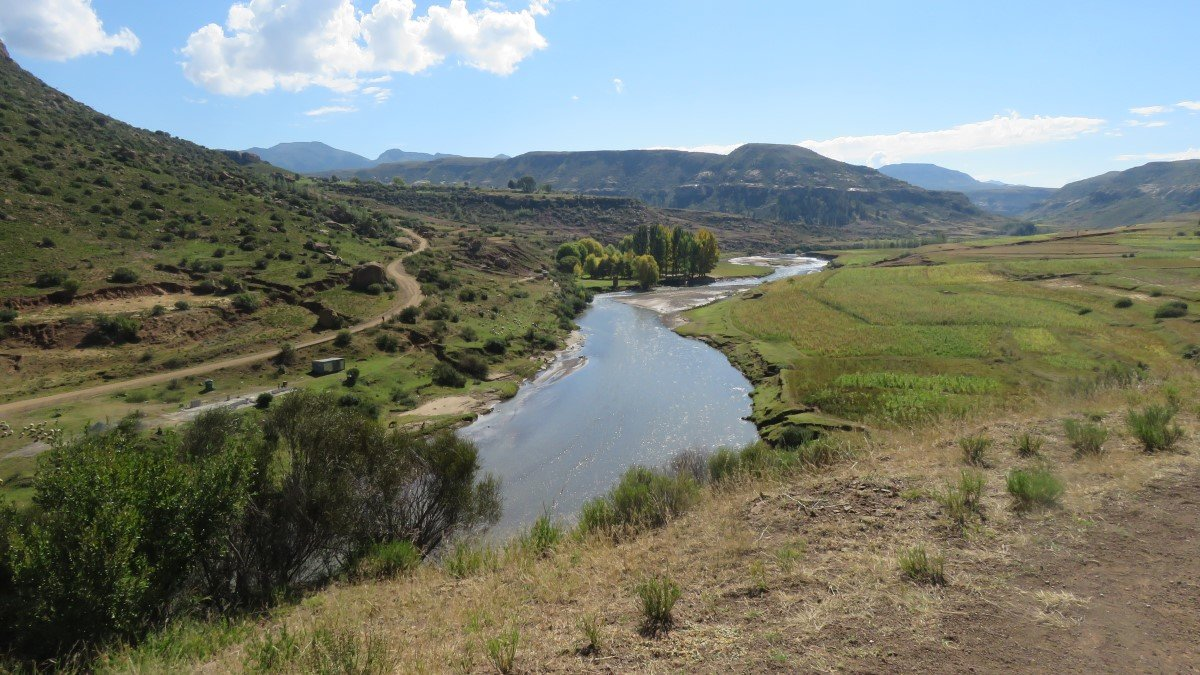
Eventually we arrived at our destination: Ribaneng lodge, with its colourful rondawels and turkeys gobbling and parading around the yard. Knowing we only had the one night there, we discussed immediately with the staff that we wanted to do a pony trek. We arranged to start right after lunch … according to the guide there was a two hour trail to a cave and that sounded perfect.
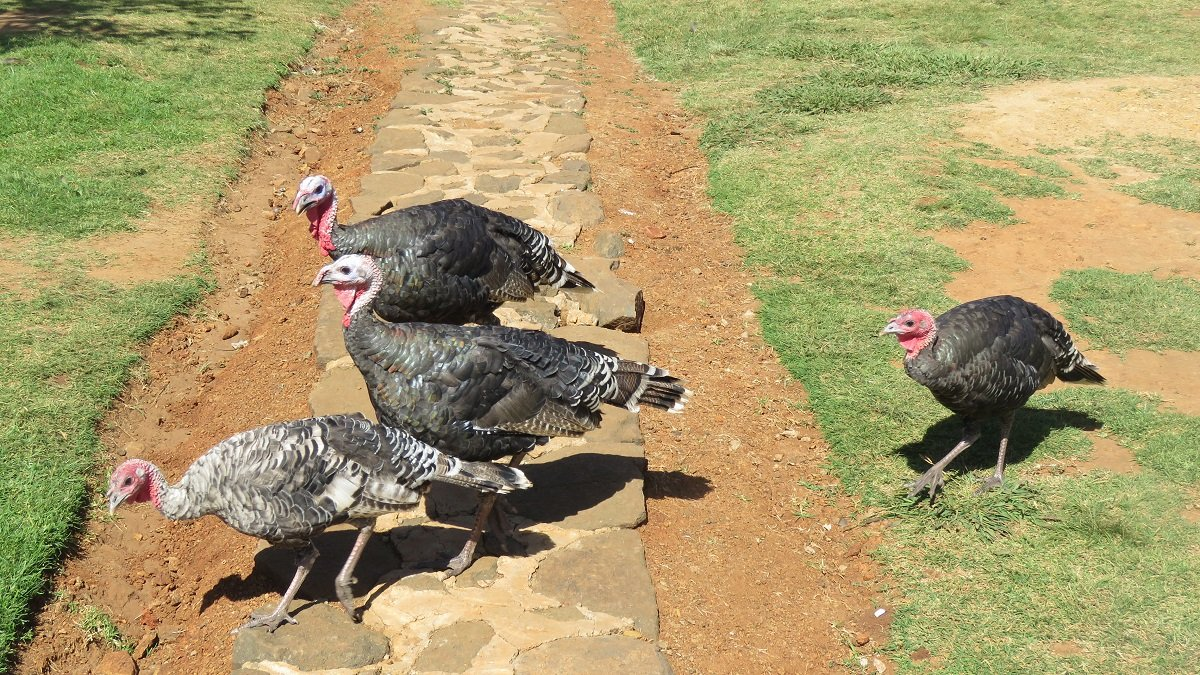
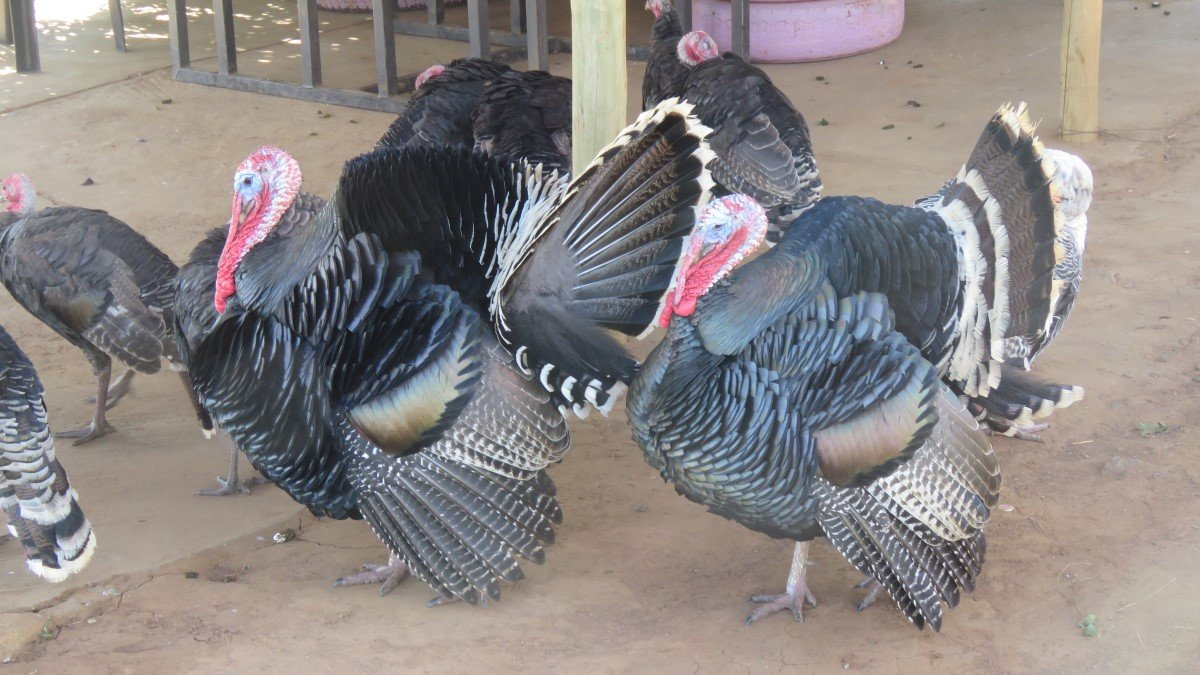
When his companion arrived with two horses, we were asked when last we had ridden a horse. Stefaan had still done some horse riding in Port Elizabeth, but my bareback horse “riding” experience was limited to just sitting on a farm horse for a photo some 40-45 years ago.
We’ve all seen it in movies, haven’t we: you step and stand up in the one stirrup and swing your leg over the horse et voila … you’re in the saddle.
But for me… that didn’t work out as smoothly as in the movies. I had to concede big time that I’m definitely not as flexible and strong as I might have been a few decades ago and my first attempt to stand up in the stirrup and elegantly swing my leg over the horse ended in me making a complete fool of myself and draping myself, tummy down, over the back of the horse. I tried a second time with a very similar result. By then the guide had seen the writing on the wall and held his hands for me to hitch a step up onto the horse. I still ended up with my tummy on the saddle, grabbing onto the other side of the saddle and wriggling my way onto the horse’s back with a leopard-crawl-kind-of-move. I think by that time the guide was not planning to let me ride this horse on my own. In all fairness to me, the horse was a bit jittery and - proof to that - just a bit further down the road, someone came to exchange my horse for one that was much calmer and more passive.
Initially, my guide still held the lead of my horse, while another guide took the lead for the walk in the mountains. Feeling this new horse was much calmer than the other one, I also got more relaxed and actually enjoyed moving to the cadence of the walk. The leading guide must have observed my comfort, because after a while, he talked to my guy to let me ride on my own. And it really went well. (Most probably more kudos to the experienced horse than to me!). We were amazed at the firm foothold these horses had in the rocky ravines and slippery river beds, and we realized we could leave it all up to the horses to walk the trail and keep us safe. After about 2,5 hours walking we asked the guide how far still to the cave and they couldn’t really say. They knew where the cave was, but had no idea how far it would still be. So, unfortunately, we never made it to the cave.
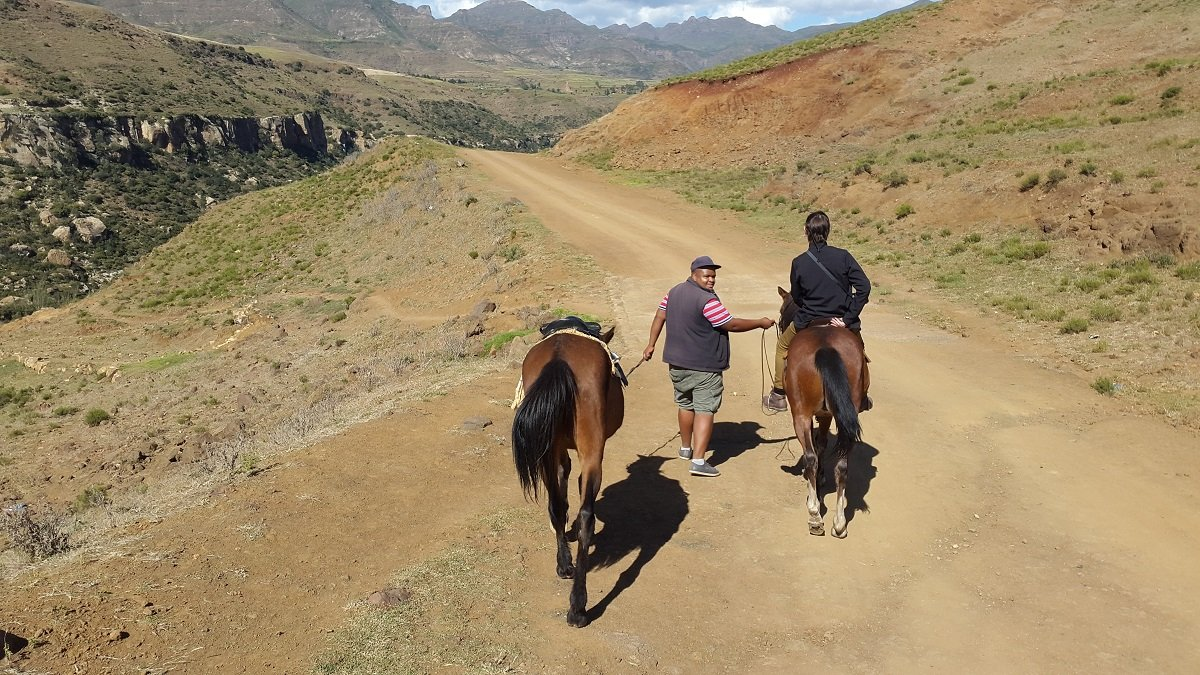
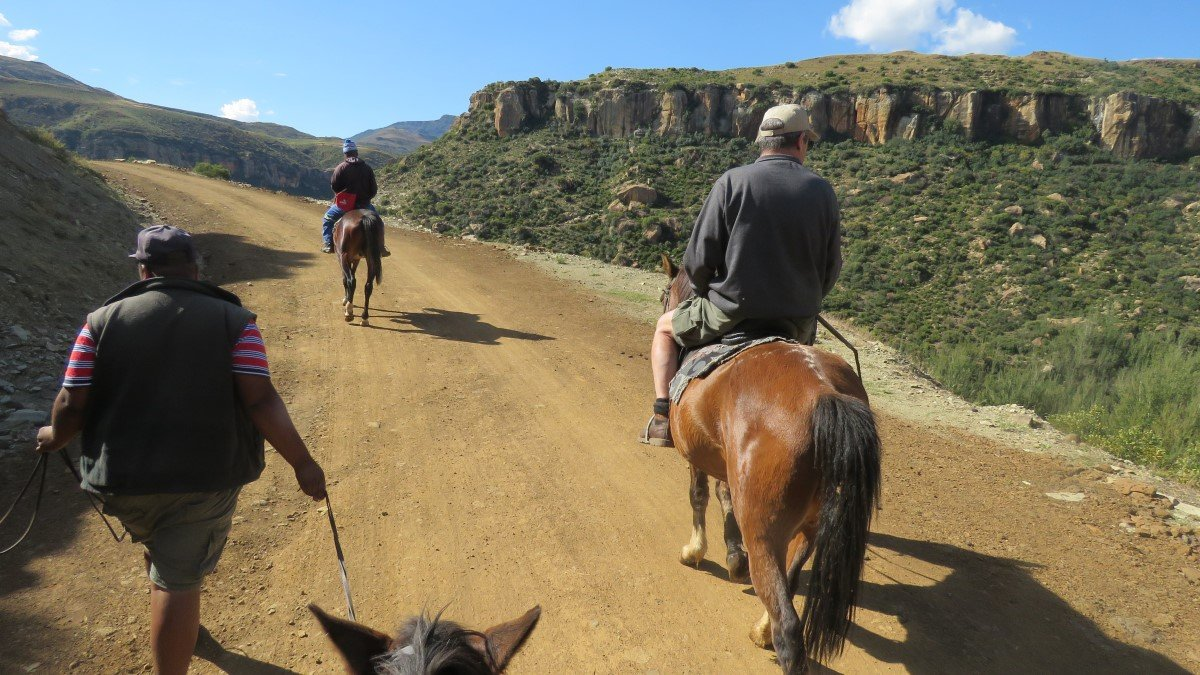
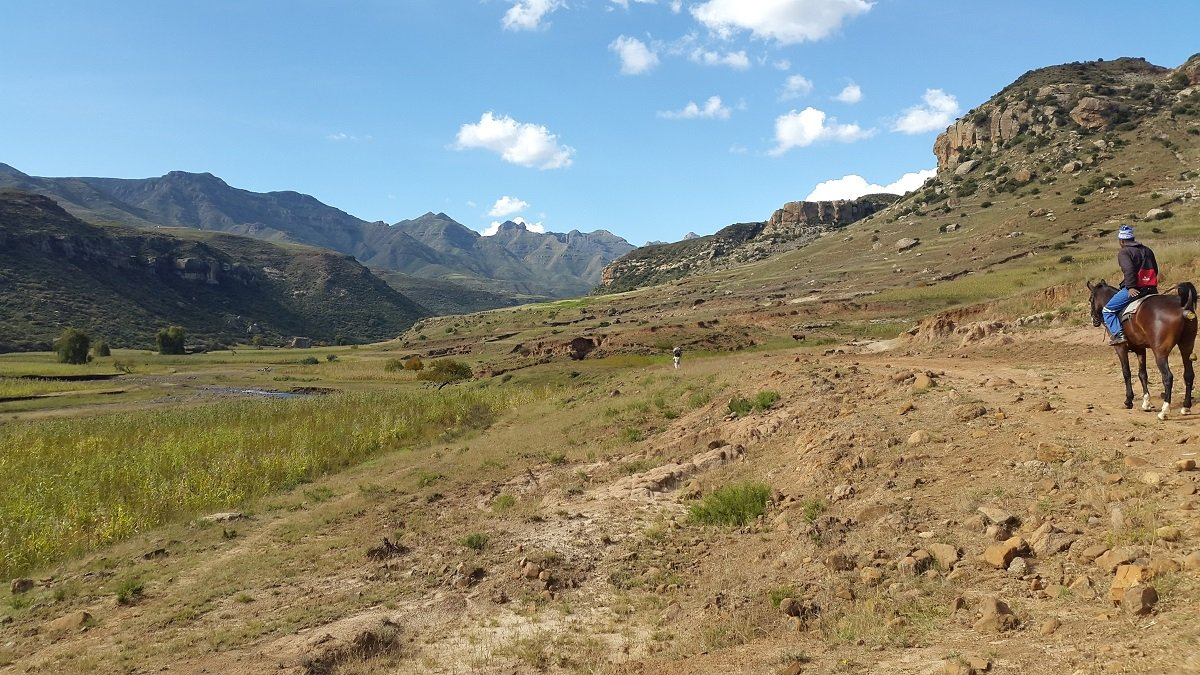
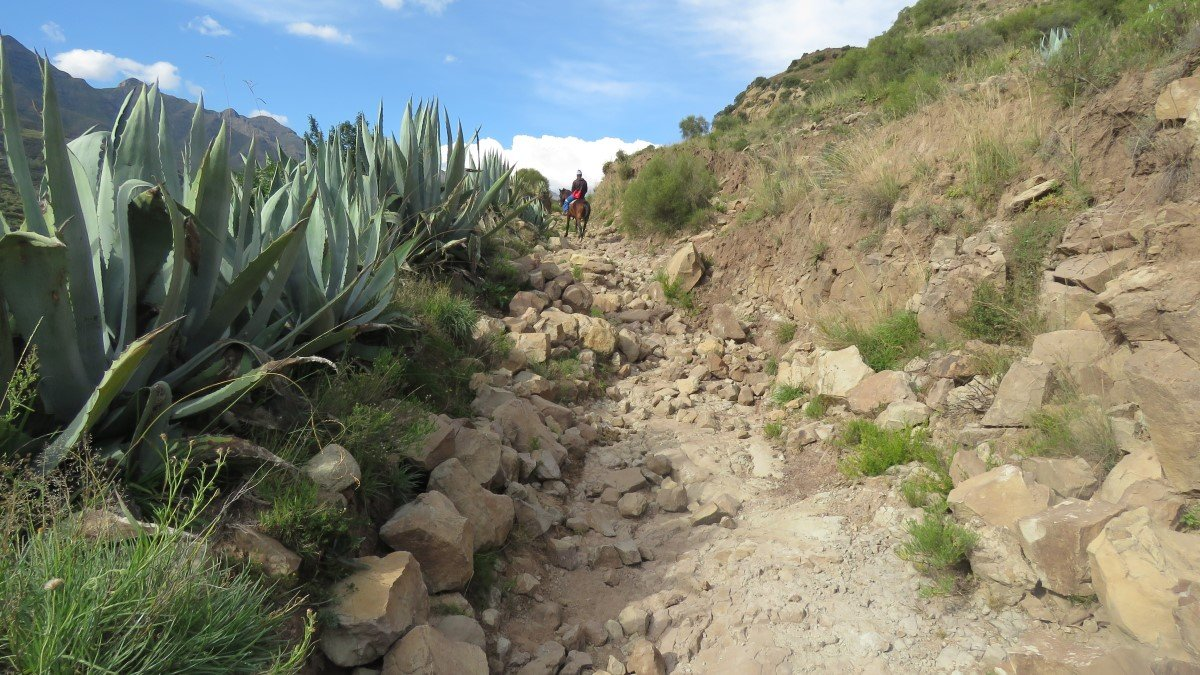
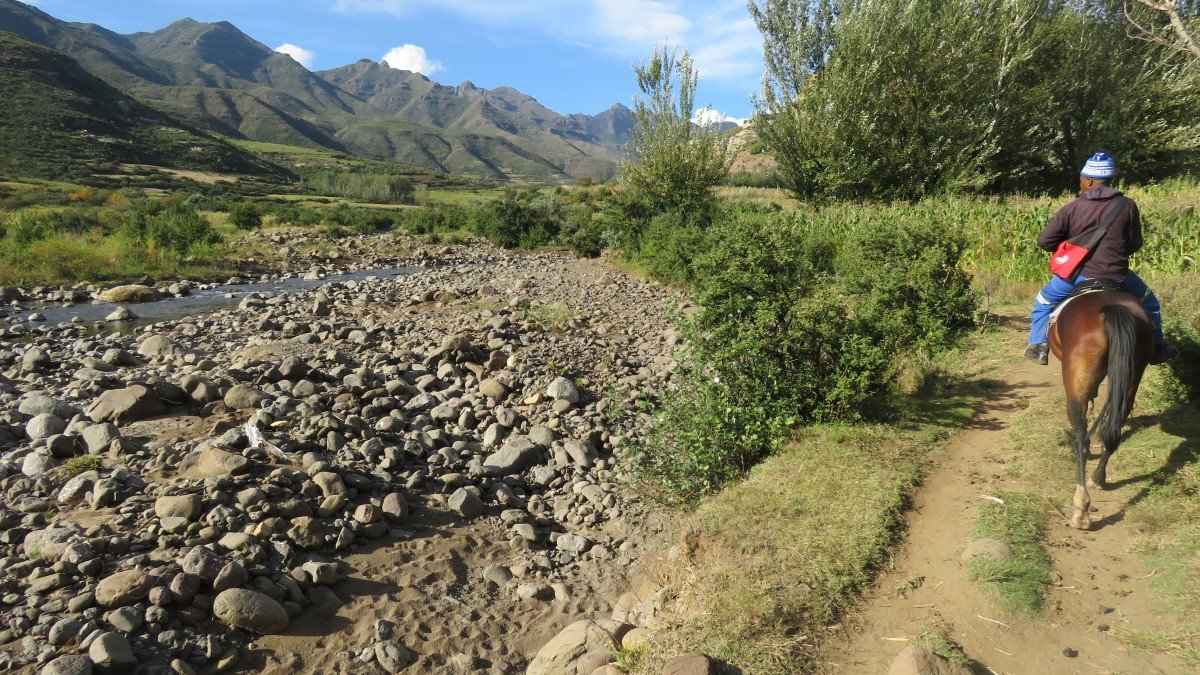
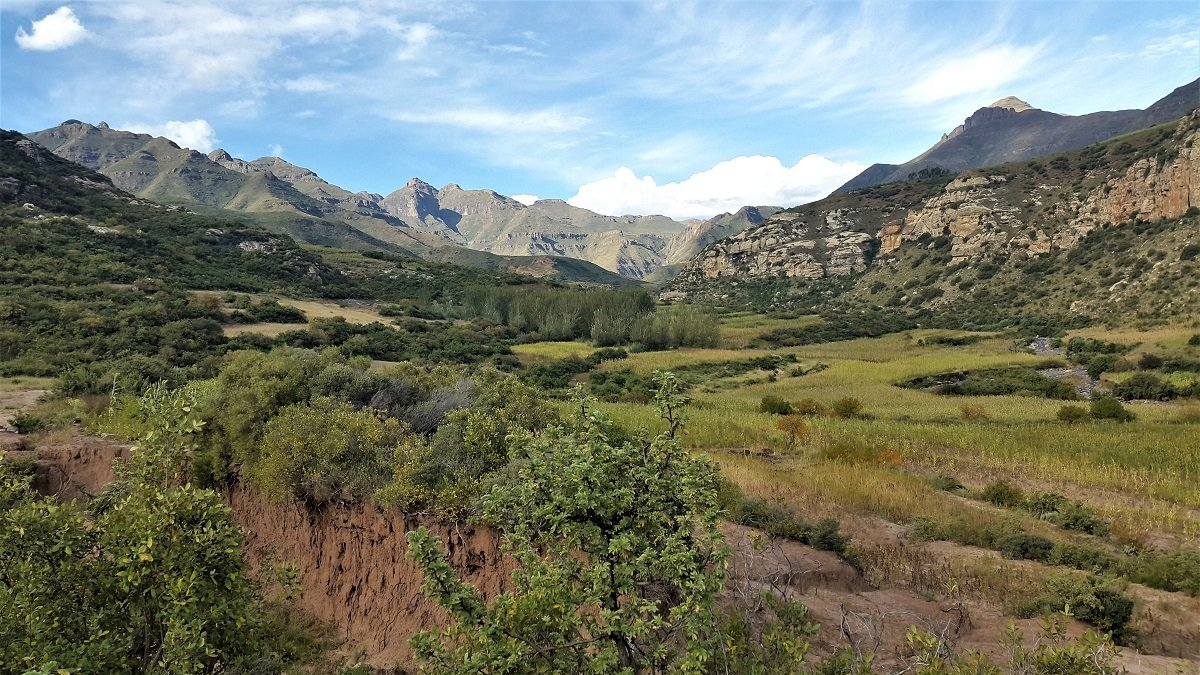
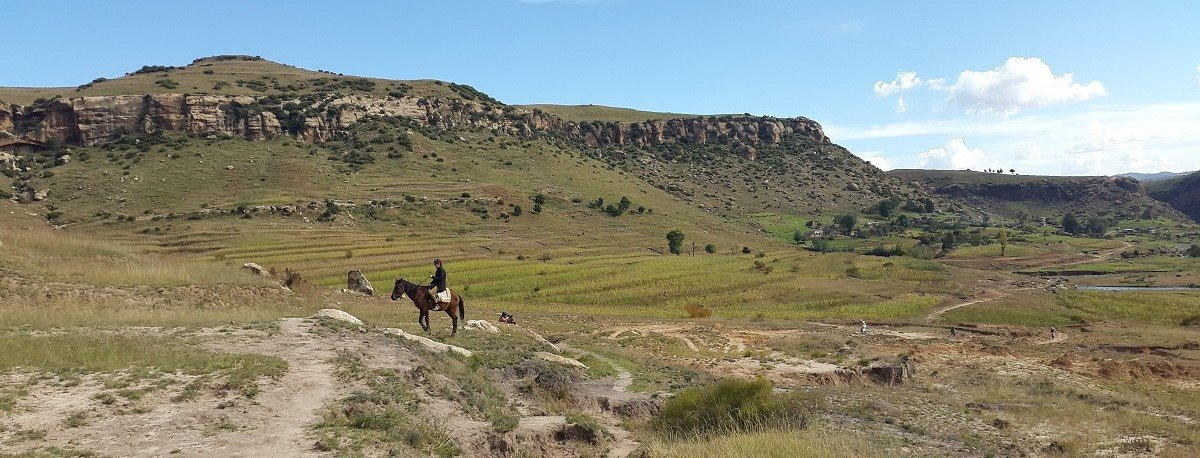
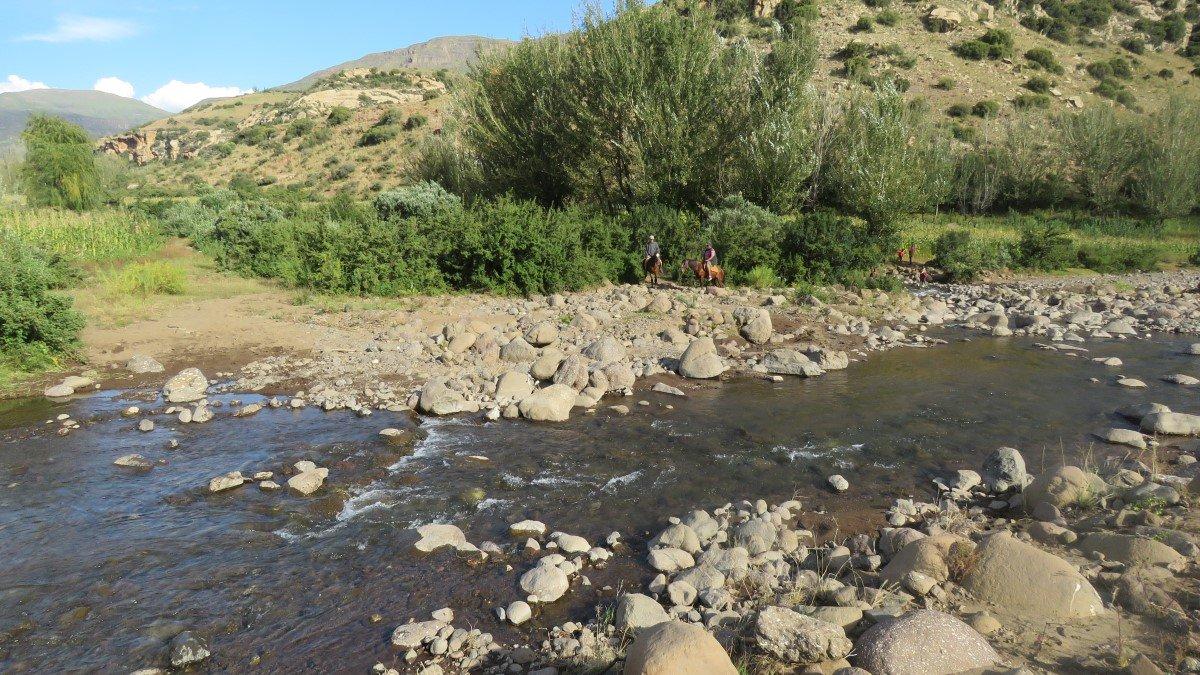
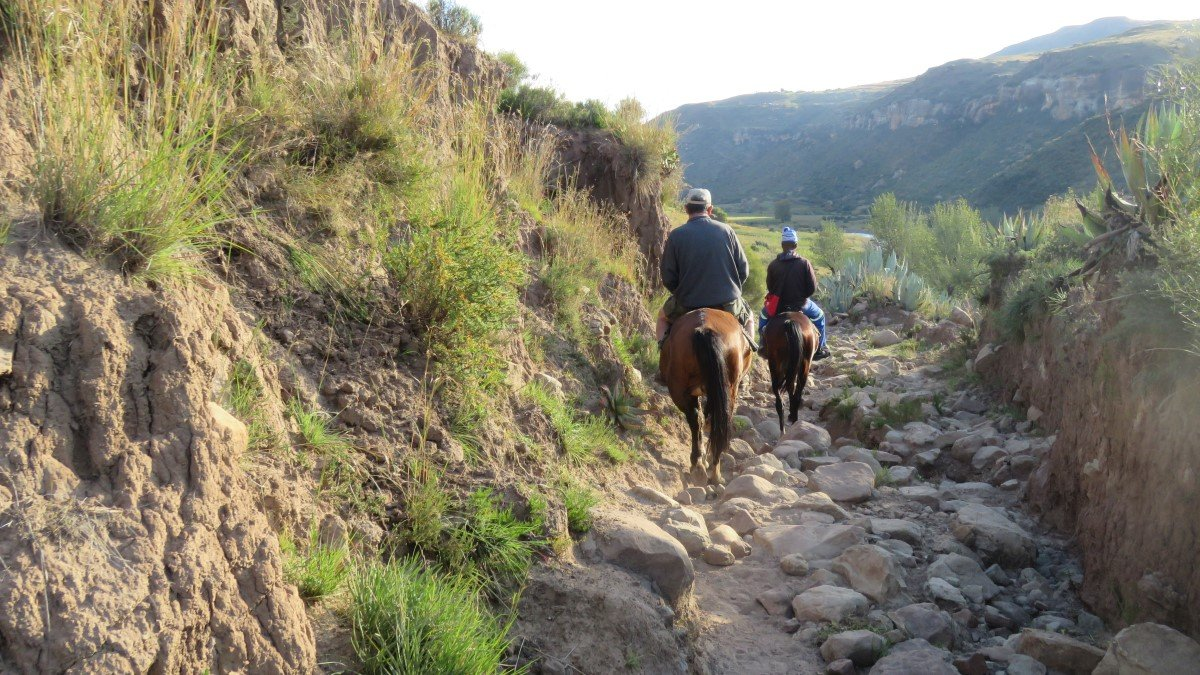
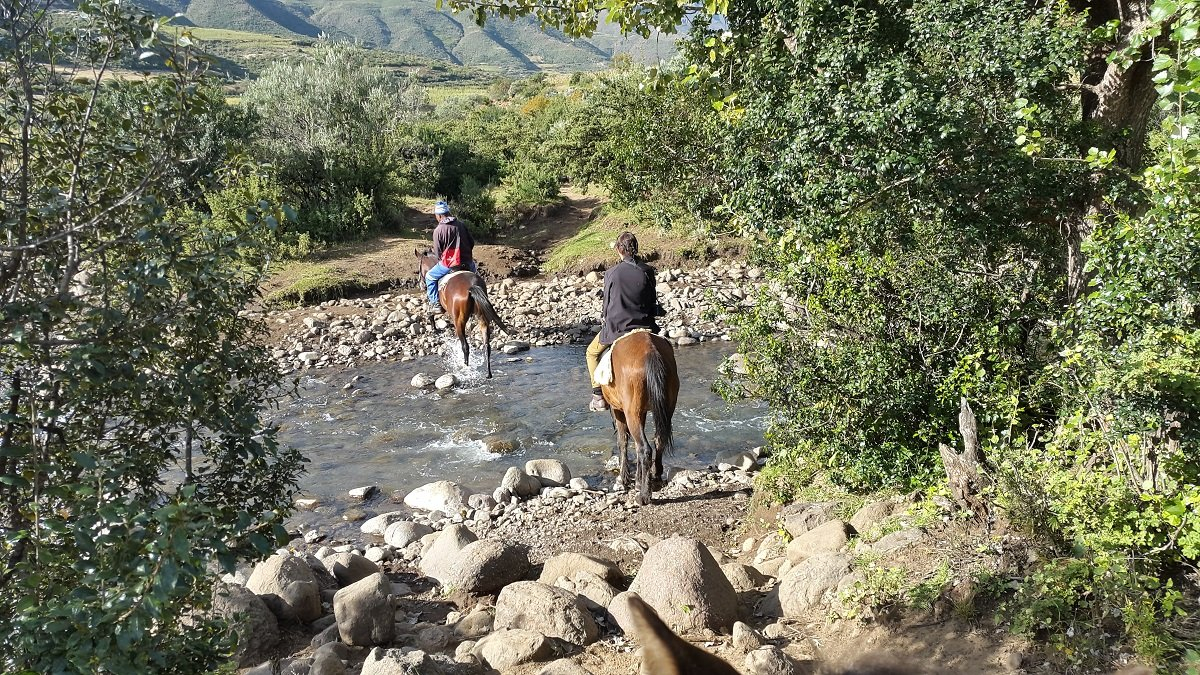
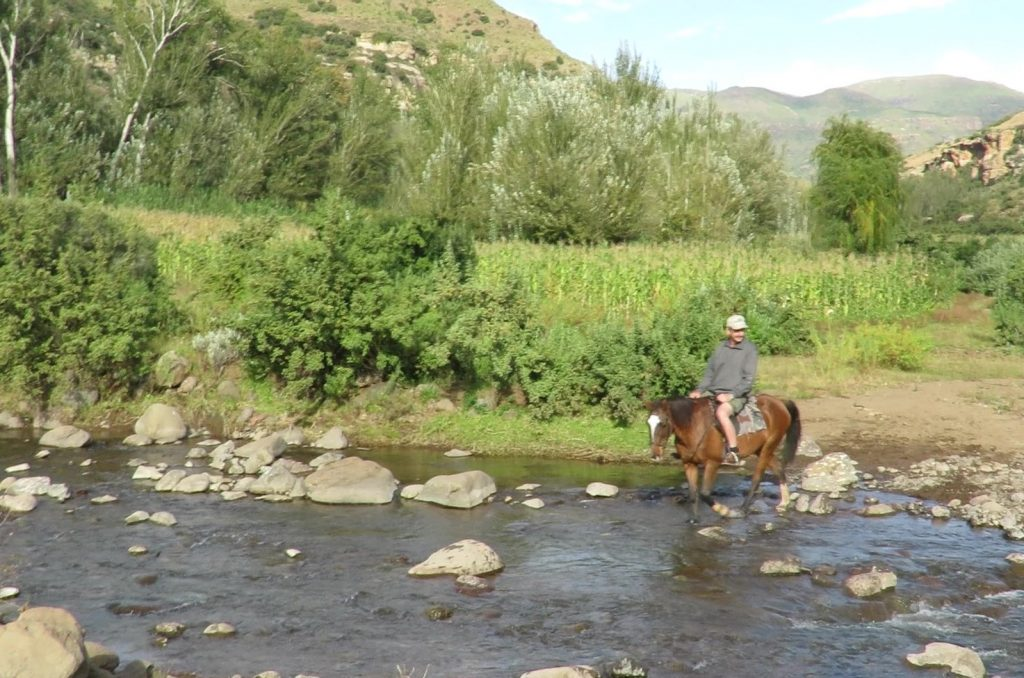
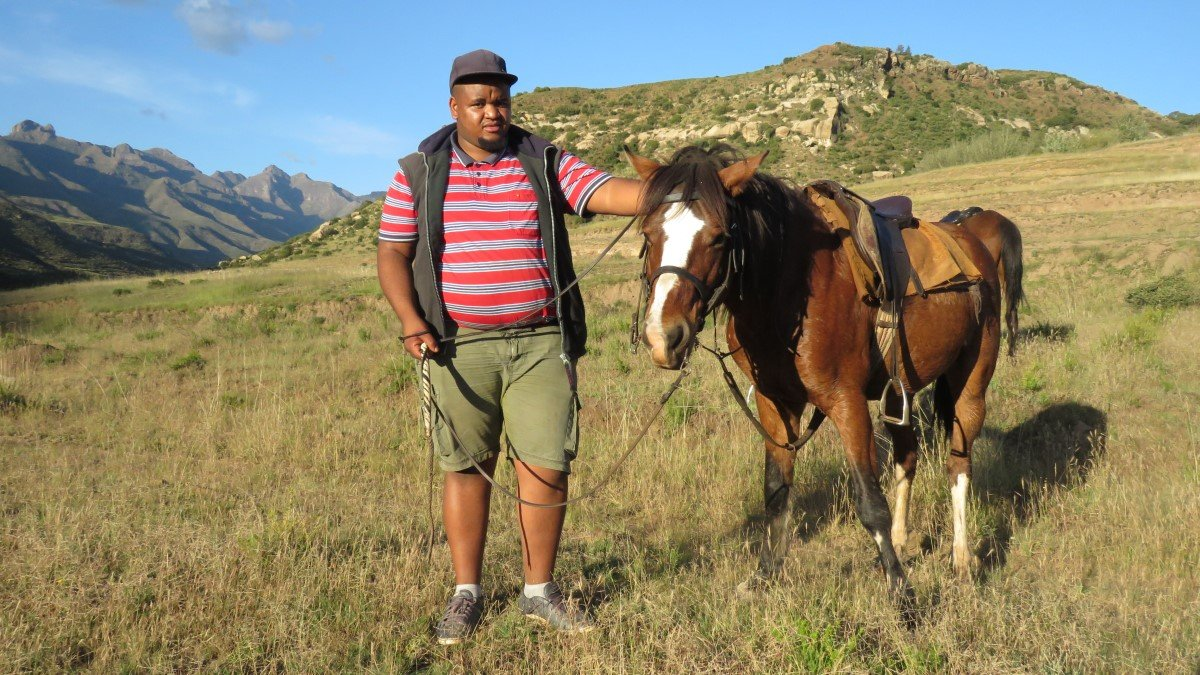
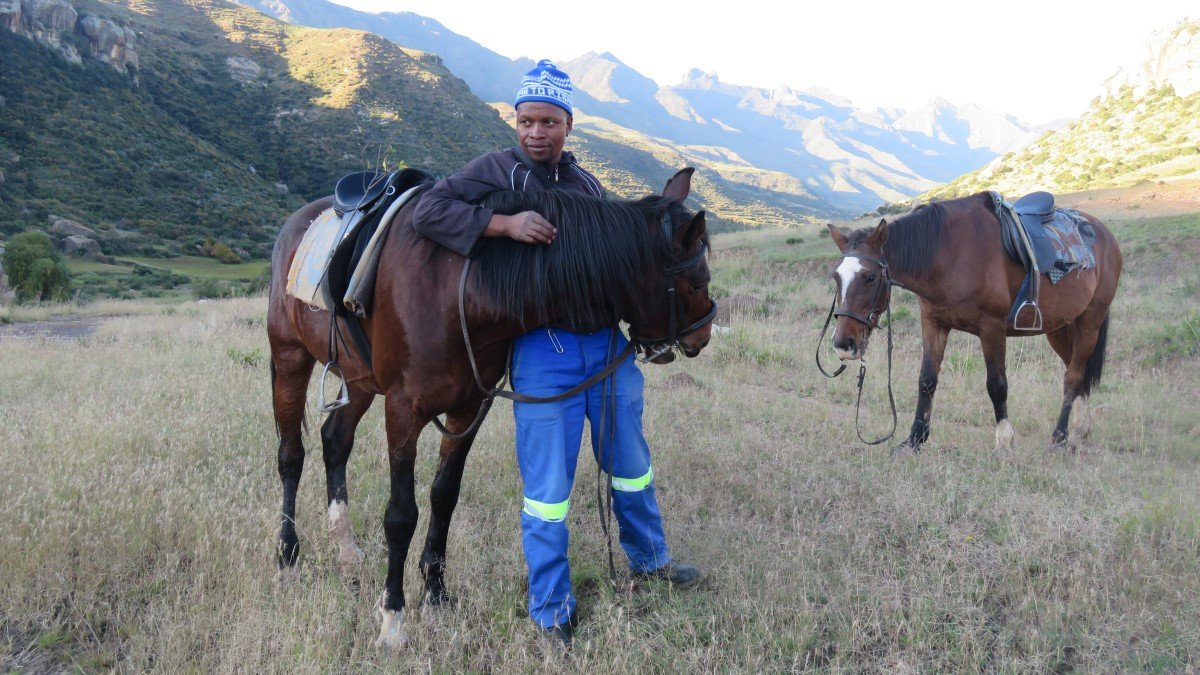
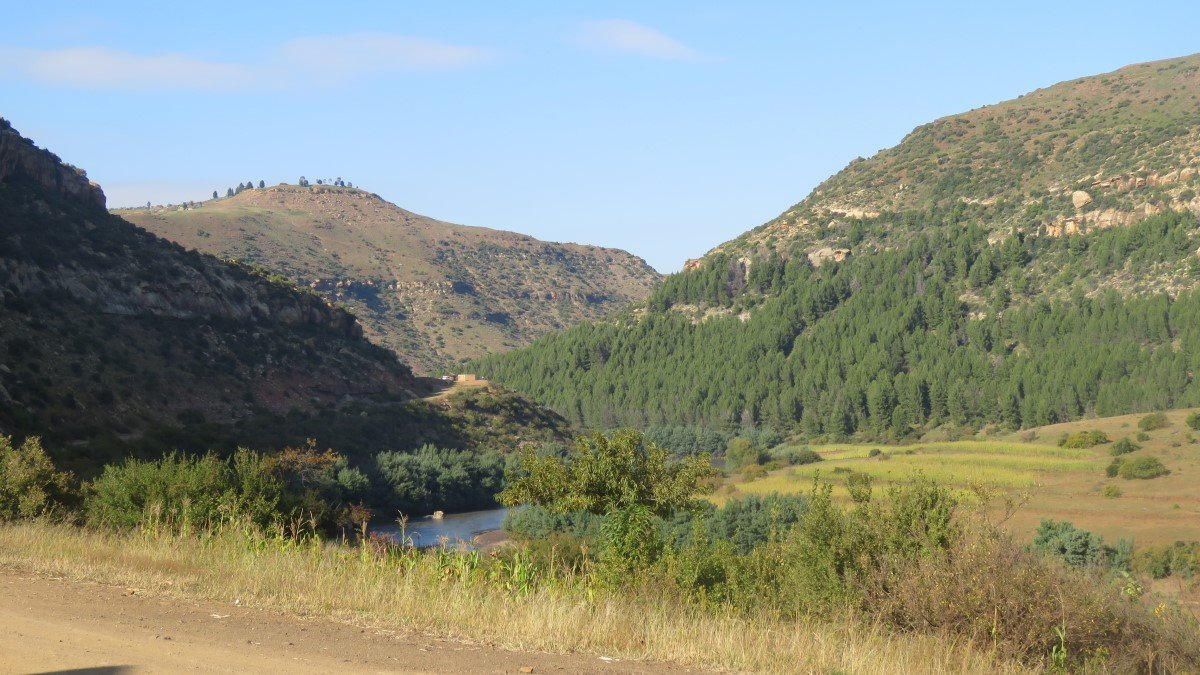
We had to turn back. We definitely didn’t want to be stuck in the dark in a country side that we didn’t know. I think I distrusted myself more than the guides regarding bringing the horses home safe and sound. They most probably know their horses and the country side well enough to have no qualms about it being day or night while riding a horse, but I wasn’t so brave. On top of that, even though I really and truly enjoyed the ride and had grown used to the rhythmic walk of the horses, the continuous to and fro shake of the moving horse (especially when the body movement got more energetic and forceful when climbing hills) had given me a migraine by the time we got back to the lodge. We bought some good old Grand-pa painkillers at the local spaza shop and I kept my head still for the next 30 minutes until the pain slowly dissipated. Migraine or not: I will definitely want to do this again!
A little while later our lodge host called for supper. Initially he had suggested to get fast food from the village, but we had convinced him we would prefer traditional, local fare,… a meal which he eventually cooked himself and it was wonderful and enough to feed an army. While eating we had a nice chat with him. It seemed that he had been a chef in Bloemfontein, until he came to work for the lodge. No wonder supper was great!
Next morning we had a whole day of driving ahead of us, so we left shortly after breakfast. We drove out the valley on dirt roads sculpted by donga’s. We passed a little homestead with very creative garden decor recycled from old car parts and other discarded steel. We crossed the border at the Van Rooyens border post close to Wepener and went home via the maize fields and grass lands of the Freestate.
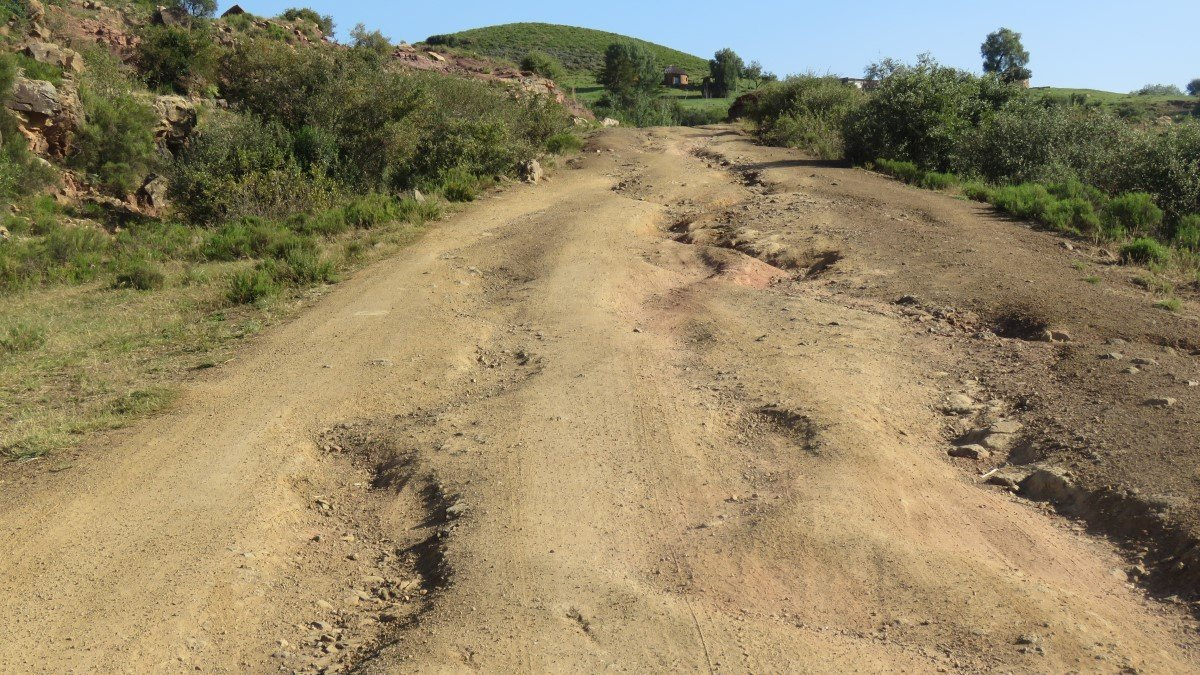
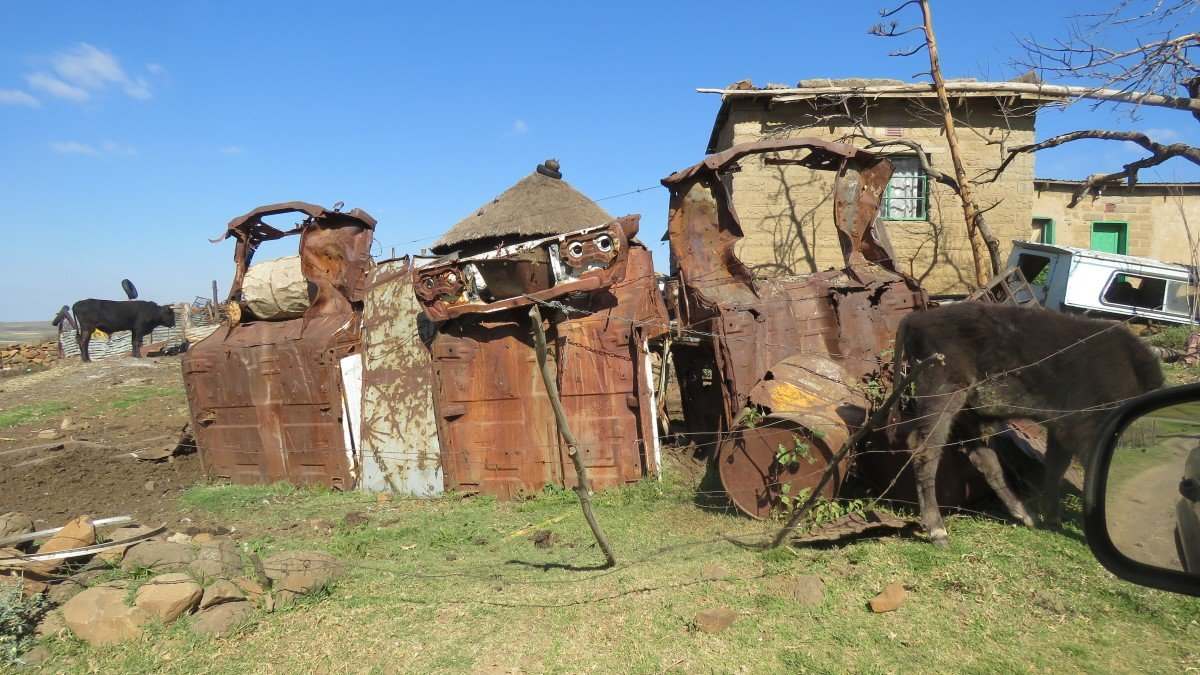
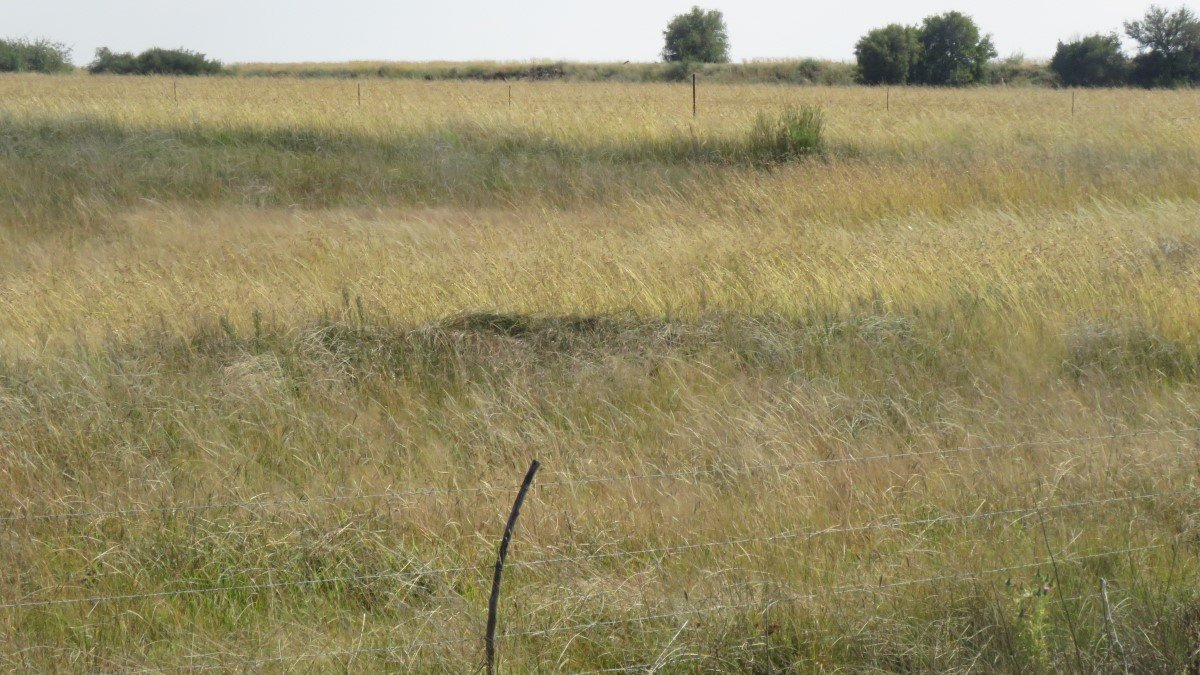
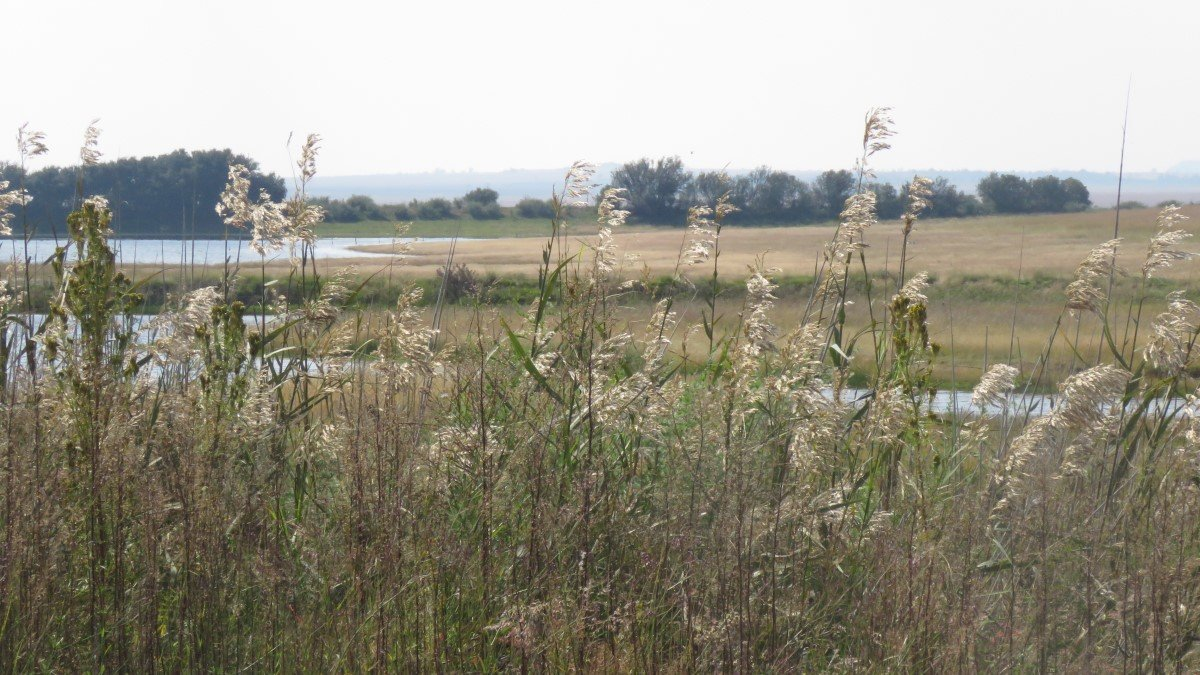
Find more photos here.
For more photos, clips and videos follow us on
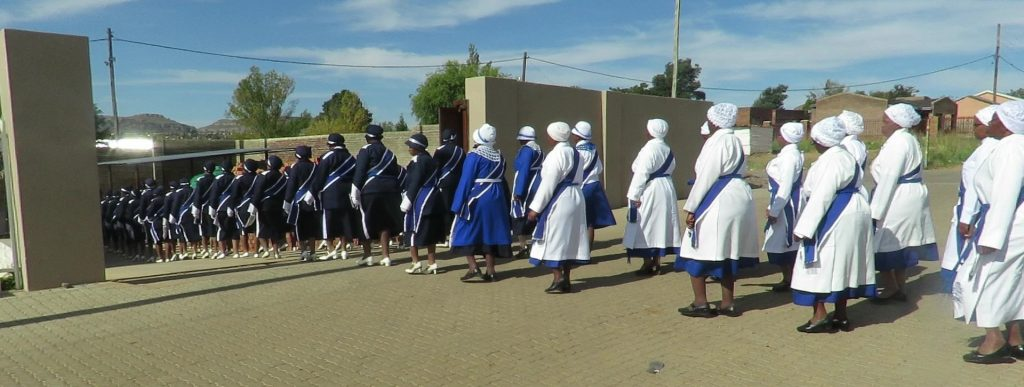
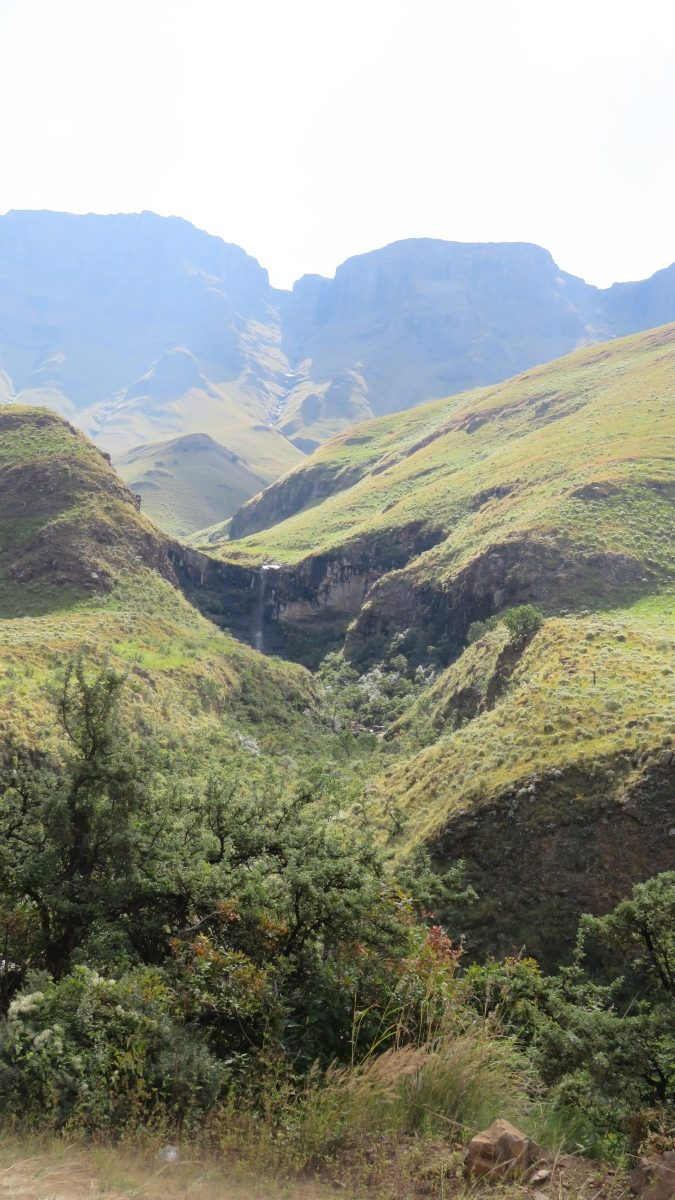
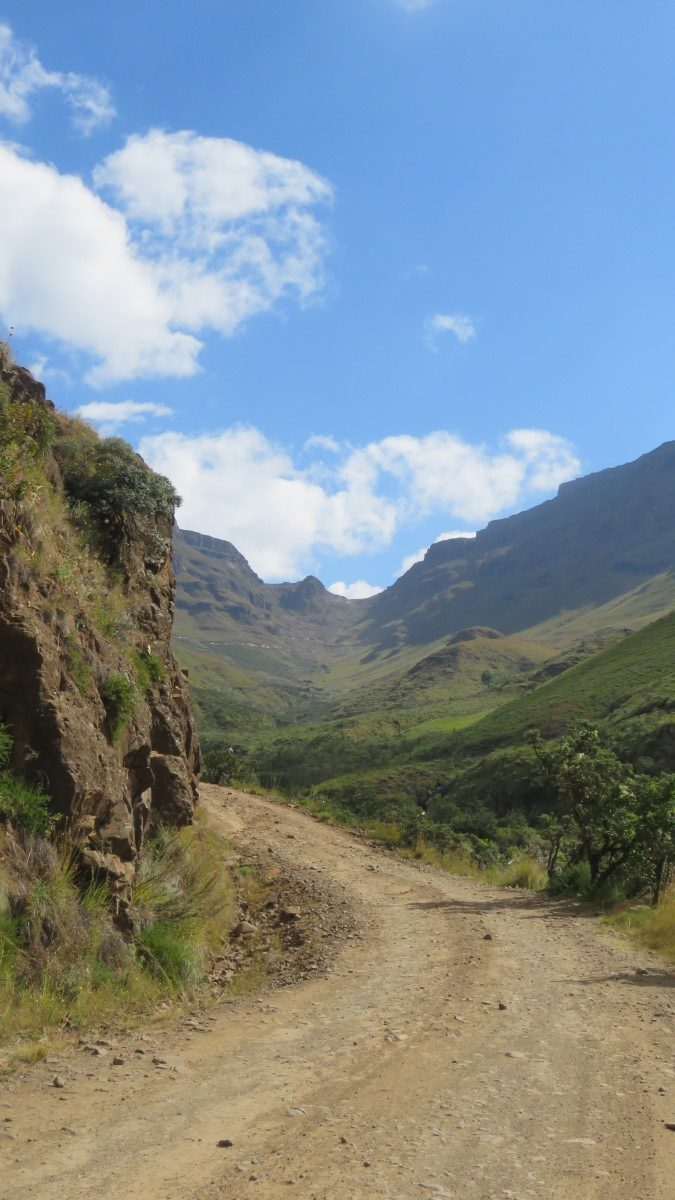
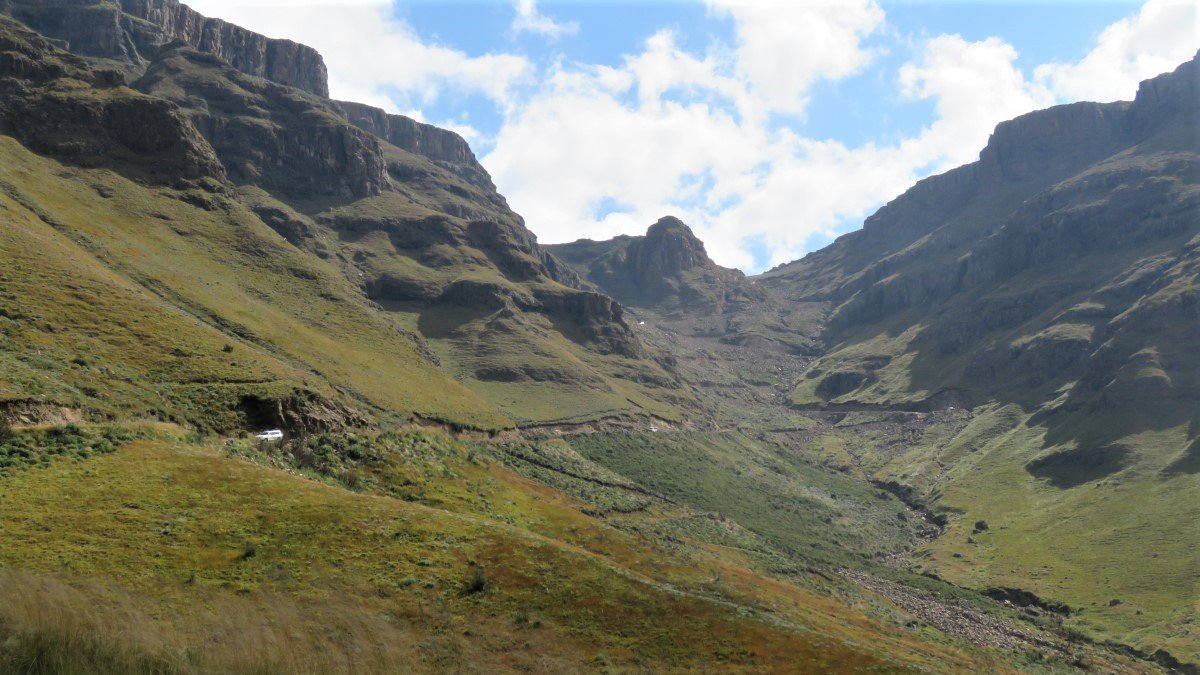
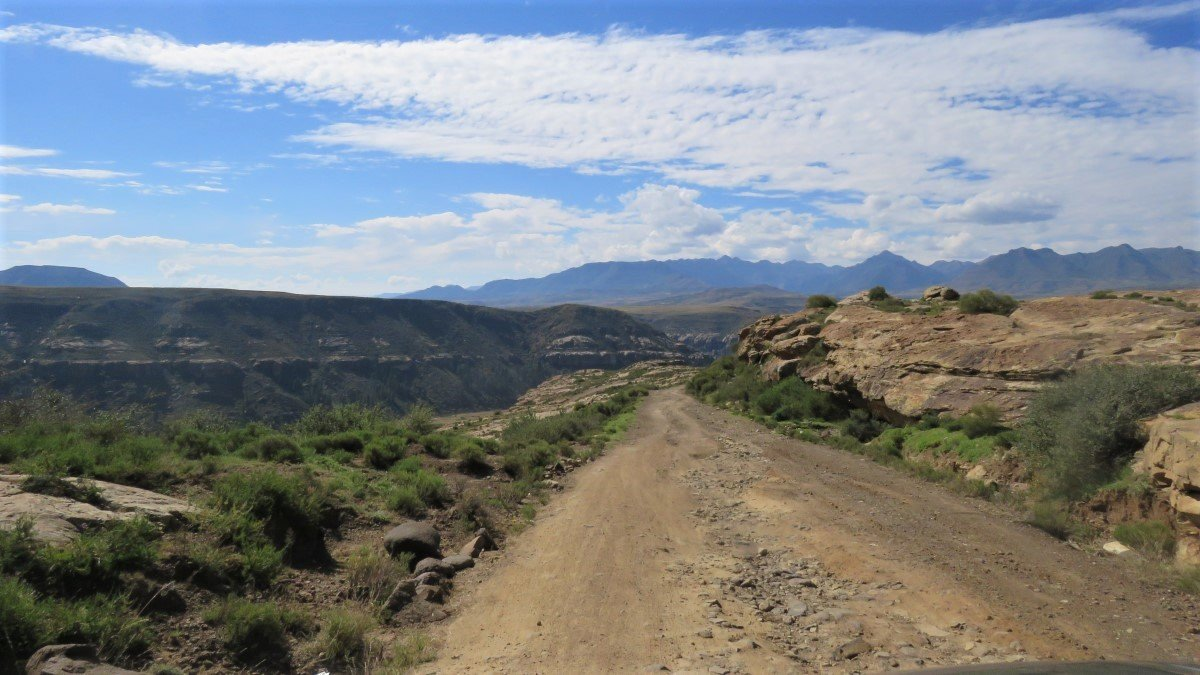
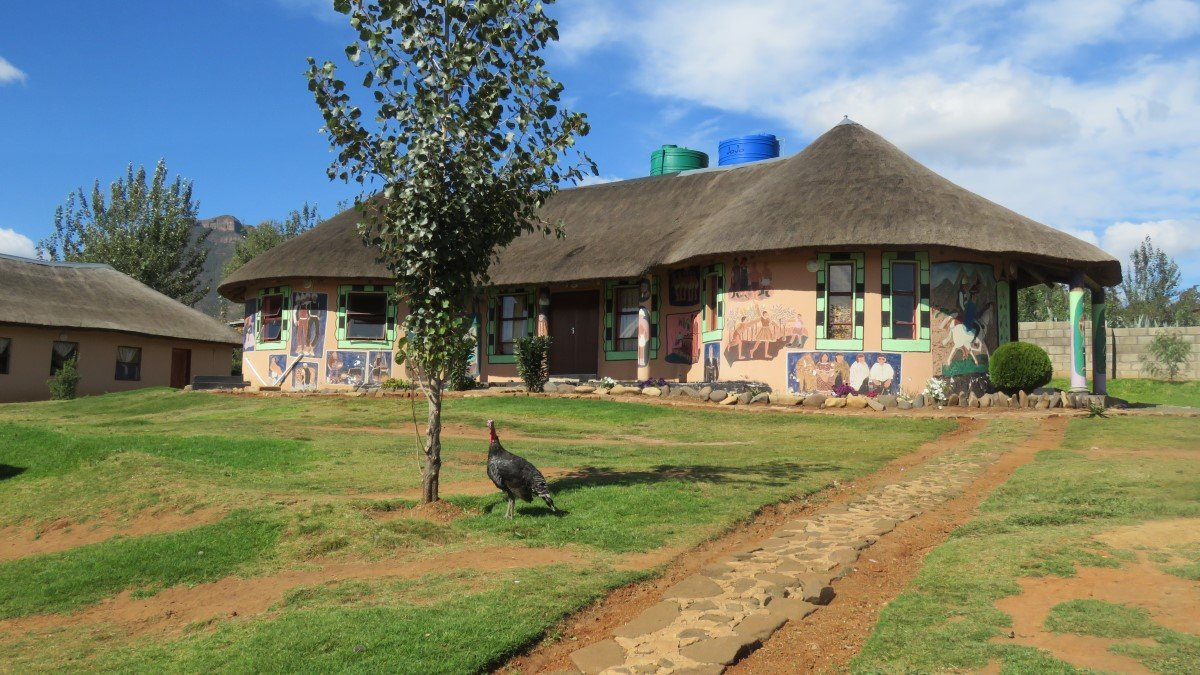
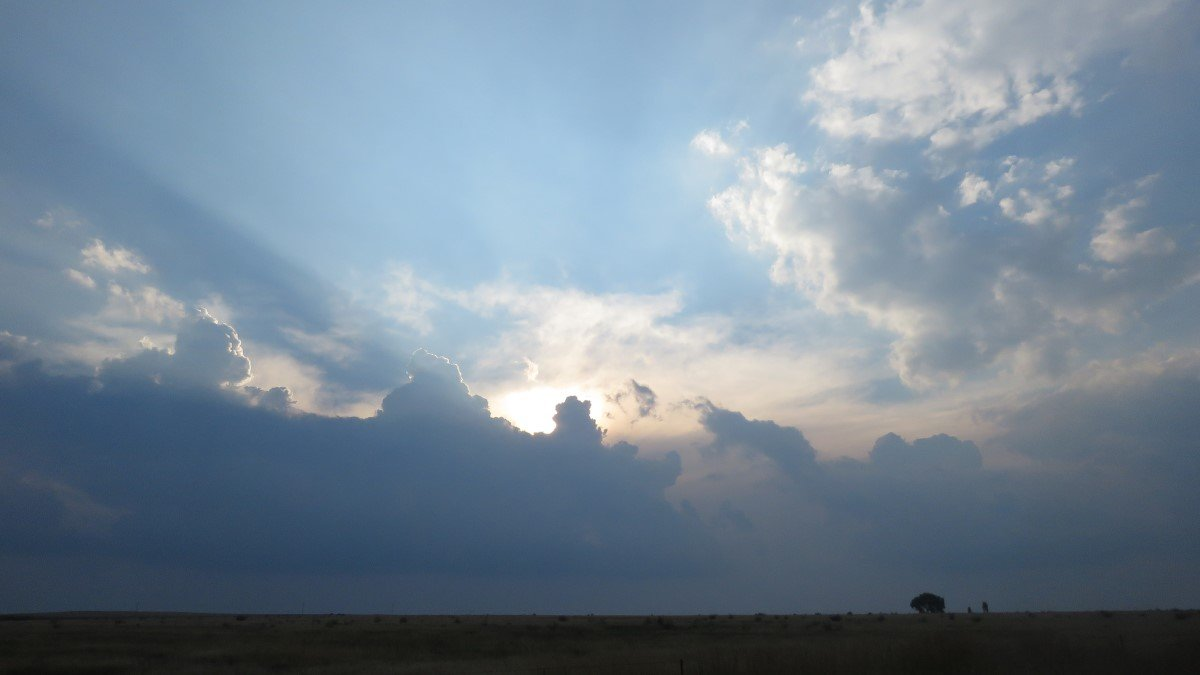


South Africa and Lesotho